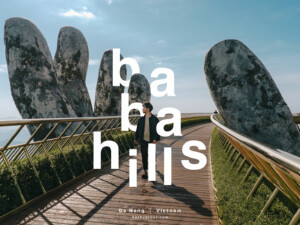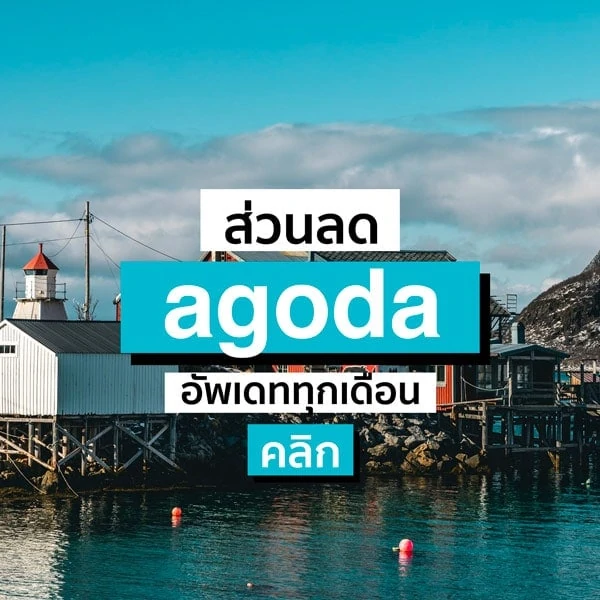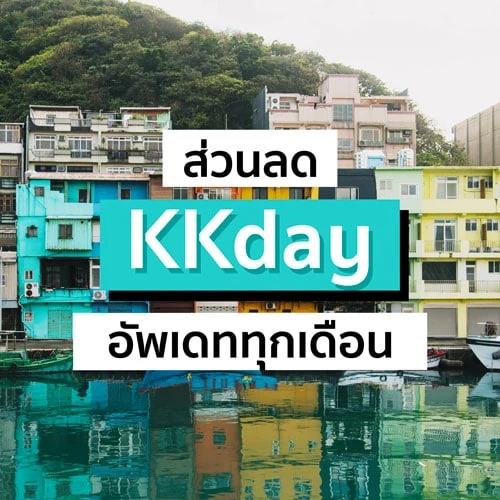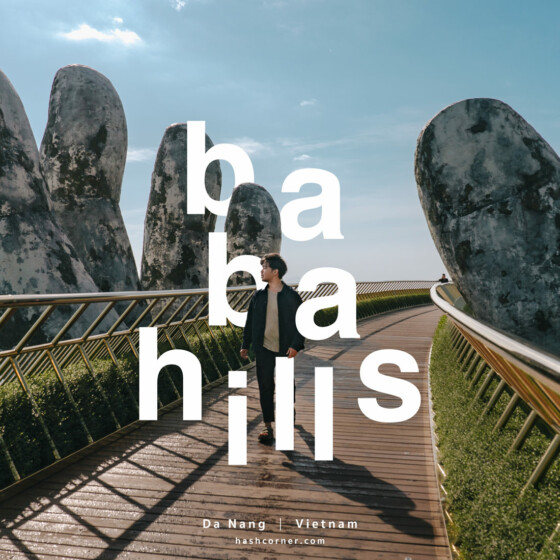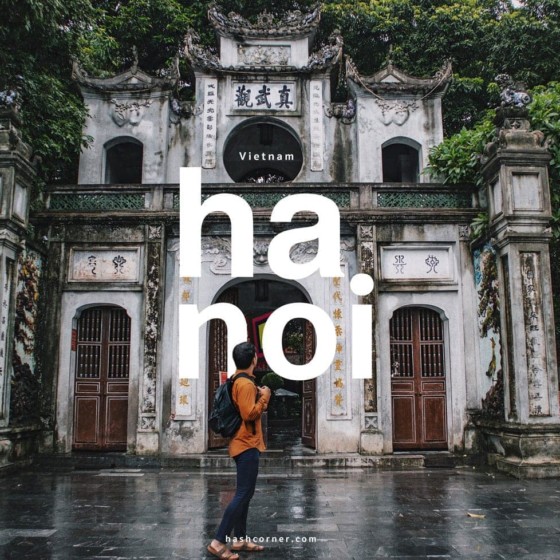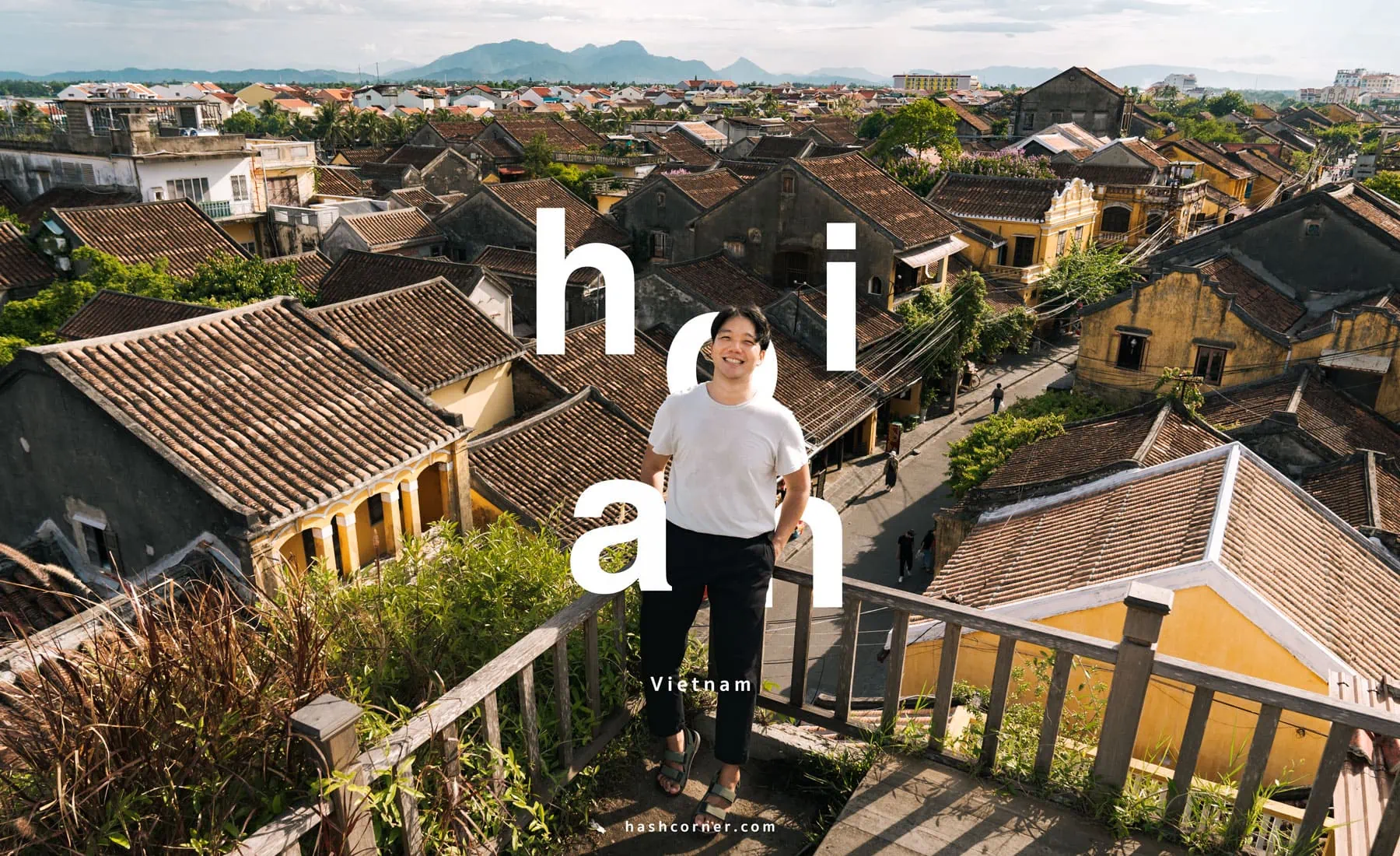
Hoi An is a charming and quaint city known for its distinctive mustard-yellow buildings. The charm of the old city lies in its atmosphere. I am always surrounded by breathtaking views no matter where I go. Visiting Hoi An means experiencing a slower-paced way of life, with an abundance of restaurants, bars, and cafés nestled seamlessly within the landscape of the ancient town. A basket boat trip will also allow you to learn about local culture and witness the fishing lifestyle up close. I’m sure many of you will fall in love with Hoi An.
Hoi An’s Itinerary
On my trip to Vietnam, I planned an itinerary that included three popular cities: Da Nang, Hoi An, and Hue. If you’re thinking about visiting these cities, check out my Vietnam series on Hashcorner for reviews and tips.
| Day | Attractions in Hoi An) |
| 1 | – Hoi An Ancient Town – Faifo Coffee – Mot Hoi An – Hoi An Night Market – Thu Bon River Cruise |
| 2 | – Cong Caphe – Japanese Covered Bridge – Ba Mu Temple Gate – 92 Station Restaurant & Cafe – Confucius Temple – Hoi An Basket Boat |
| Hotel | – Silkotel Hoi An |
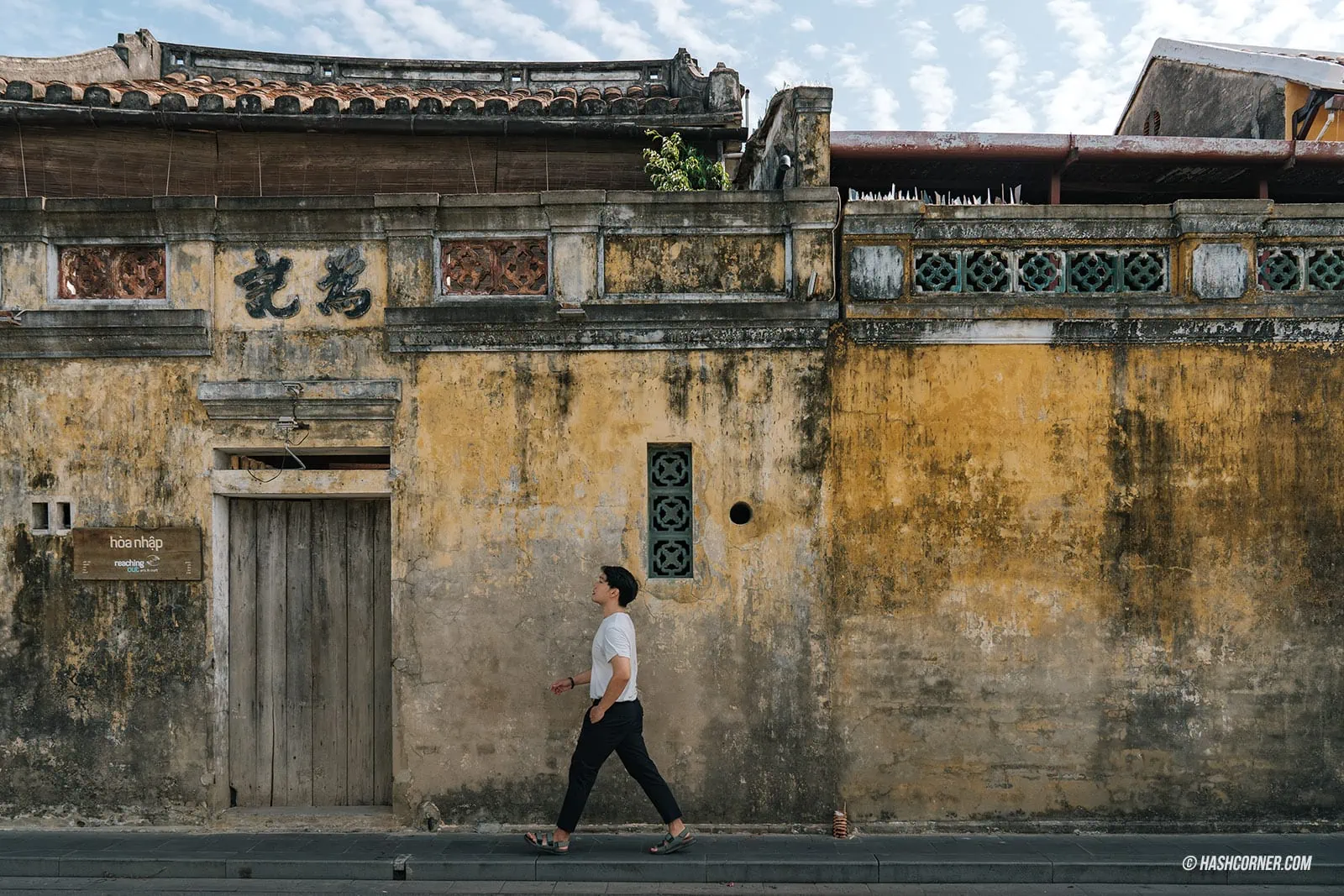
Getting to Hoi An
Some travelers may travel to Hoi An from Da Nang because it is the closest airport with many international flights to Vietnam. You can take a shared bus, rent a private car, or even use Grab from wherever you are in Vietnam (although Grab prices tend to be higher and fluctuate based on demand, just like back home). Select the most convenient and cost-effective option for you. Personally, I recommend booking a private car online, such as Klook, because you can confirm the date and time ahead of time, eliminating the hassle of trying to find transportation on the spot.
I booked my trip through Klook. When your reservation is confirmed, the driver will contact you via WhatsApp to confirm your pickup time. If you don’t already have WhatsApp on your phone, I recommend downloading and registering ahead of time because the app uses your phone number as your primary ID. The driver can call you using the phone number you provided during the booking process.
- Private Car Transfers: Hoi An <> Da Nang [Book through Klook]
- Private Car Transfers: Hoi An > Hue, Ba Na Hills, or Da Nang [Book through Klook]
- Private Car Transfers: Da Nang Airport > Hoi An [Book through Klook] [Book through KKday]
- Shuttle Bus Transfers: Hoi An <> Da Nang [Book through KKday]
- Shuttle Bus Transfers: Hoi An <> Ba Na Hills [Book through Klook]
You have all the essential information, let’s begin exploring Hoi An!
DAY 1: Hoi An Ancient Town
When you arrive in Hoi An, visiting the Ancient Town on your initial day is an essential experience. I think most travelers who come to Hoi An share a common objective: to meander through and appreciate this enchanting city. Lined with yellow-hued buildings, the old town boasts delightful stores, bakeries, and coffee shops on every corner. Take your time wandering the streets, immersing yourself in the genuine day-to-day routines of the local people. In my view, this is one of the most captivating elements of exploring Hoi An.
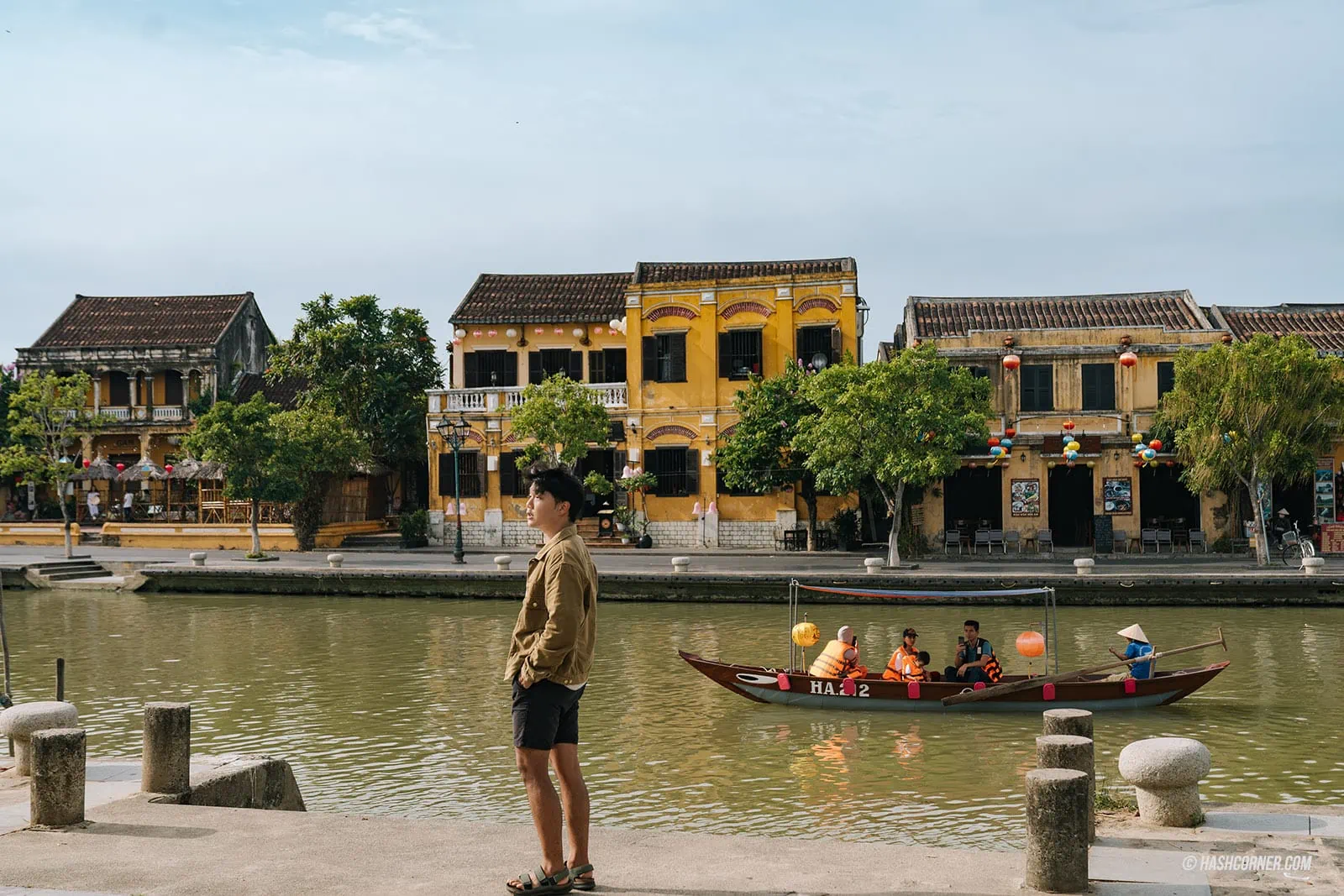
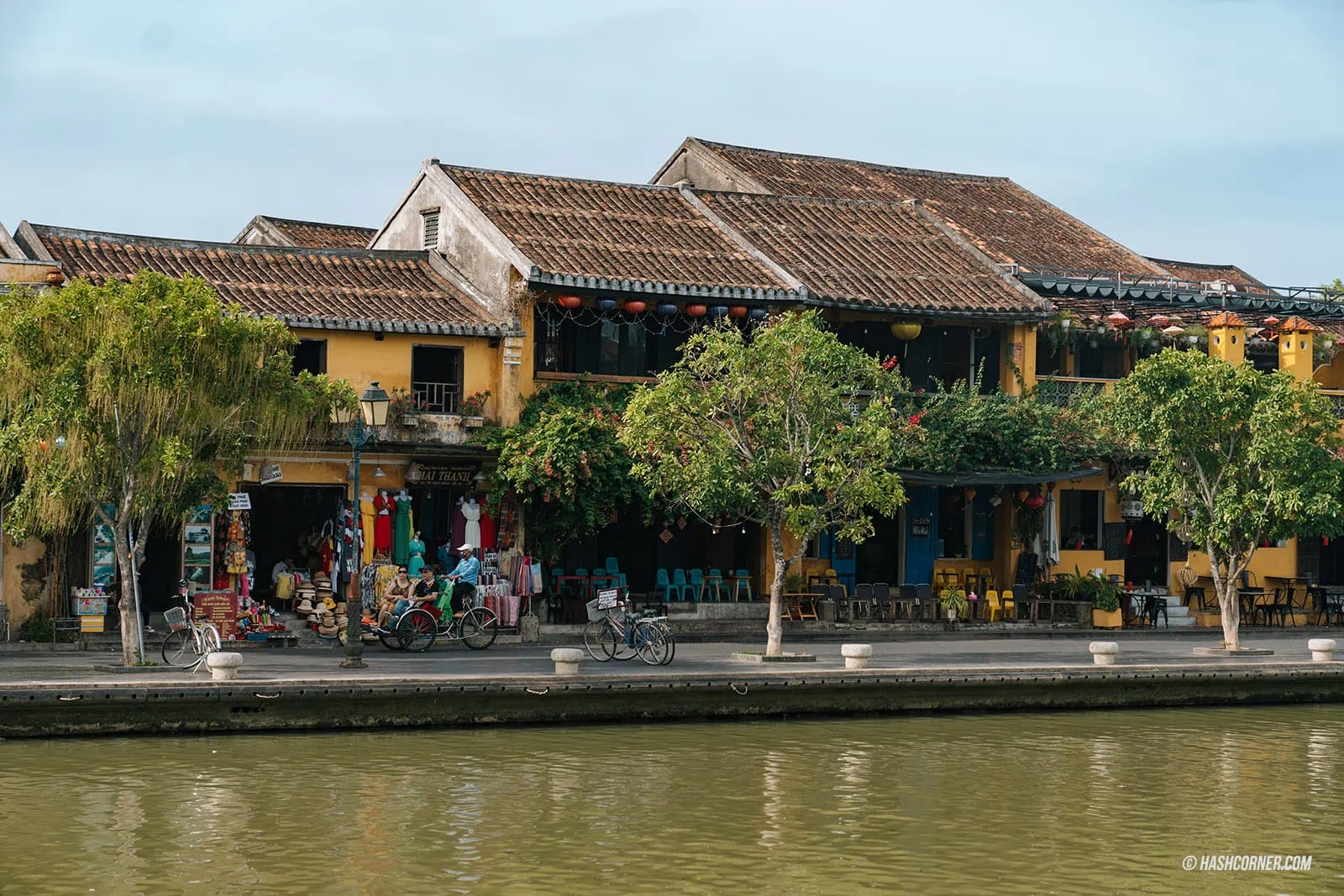
Hoi An, an ancient town situated on the Thu Bon River, is located about 20 kilometers south of Da Nang. This town was an essential trading center in Southeast Asia due to the Thu Bon River, which flows into the East China Sea and its large river mouth, making it easy for ships to navigate and trade.
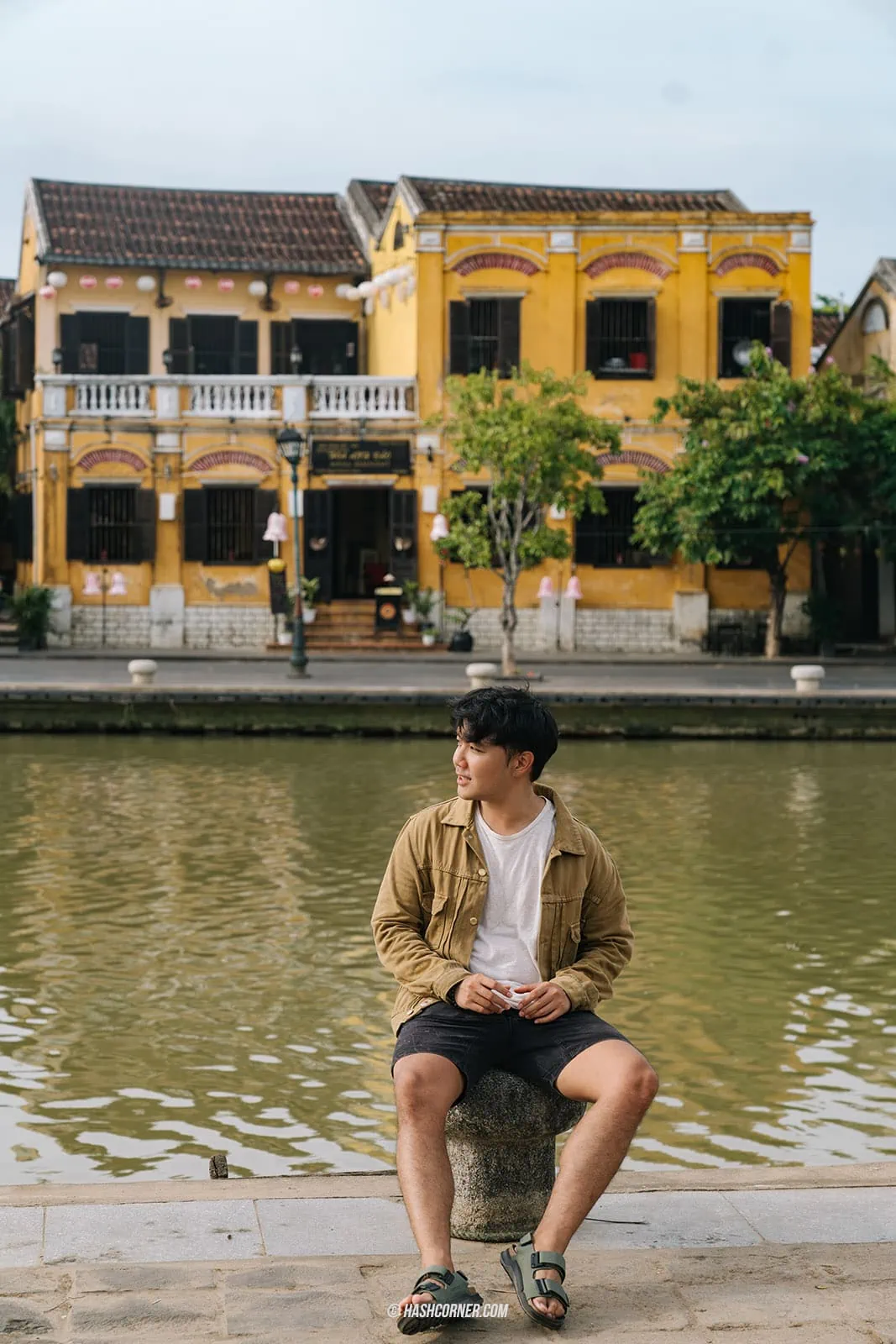
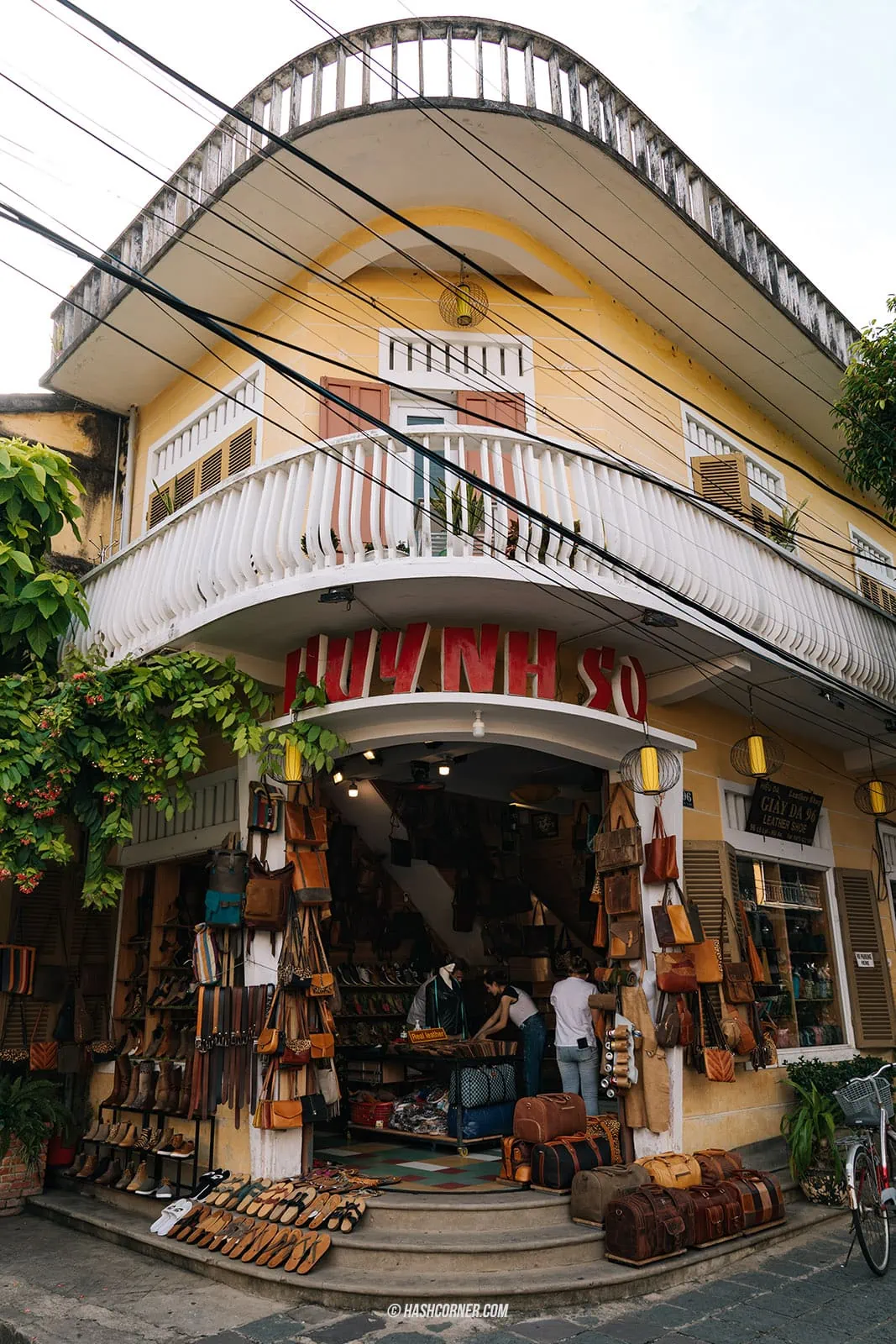
In 1999, UNESCO registered Hoi An Ancient Town as a World Heritage Site. The town’s architecture reflects a mix of local and foreign cultures, including Chinese, Japanese, and European influences. Notably, Hoi An boasts more than 1,100 well-preserved wooden buildings, claiming to be the third oldest Chinatown in the world.
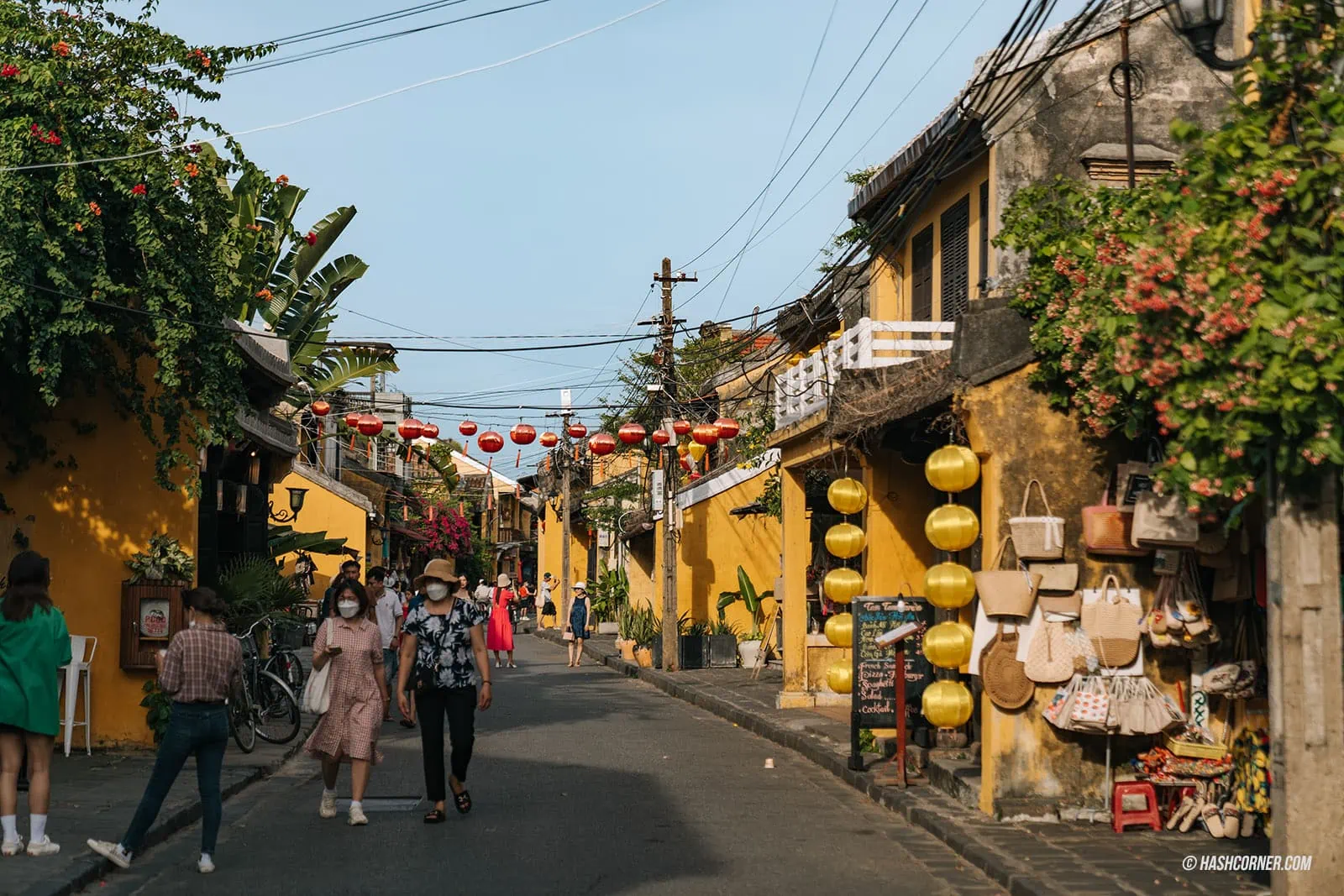
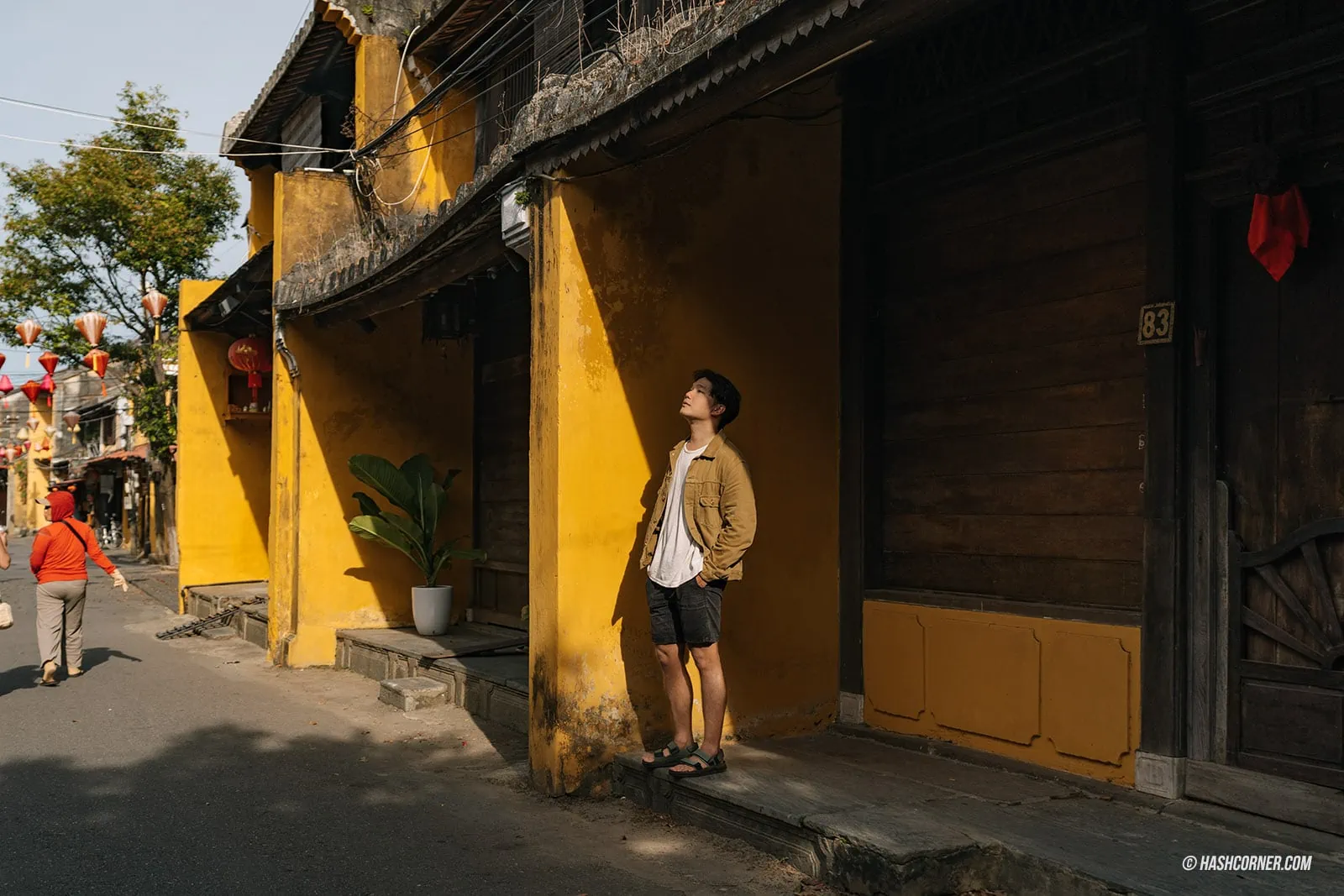
While exploring the town, you’ll be enchanted by its quaint and charming atmosphere. As a World Heritage Site, Hoi An restricts car access in the old town area. However, locals are still allowed to ride motorbikes during specified hours. This policy makes Hoi An one of the best car-free towns globally. Visitors should be prepared to walk or cycle around the town, enjoying its lovely atmosphere and getting an up-close look at the locals’ way of life. If you love exploring old buildings and architecture, Hoi An is a fantastic destination.
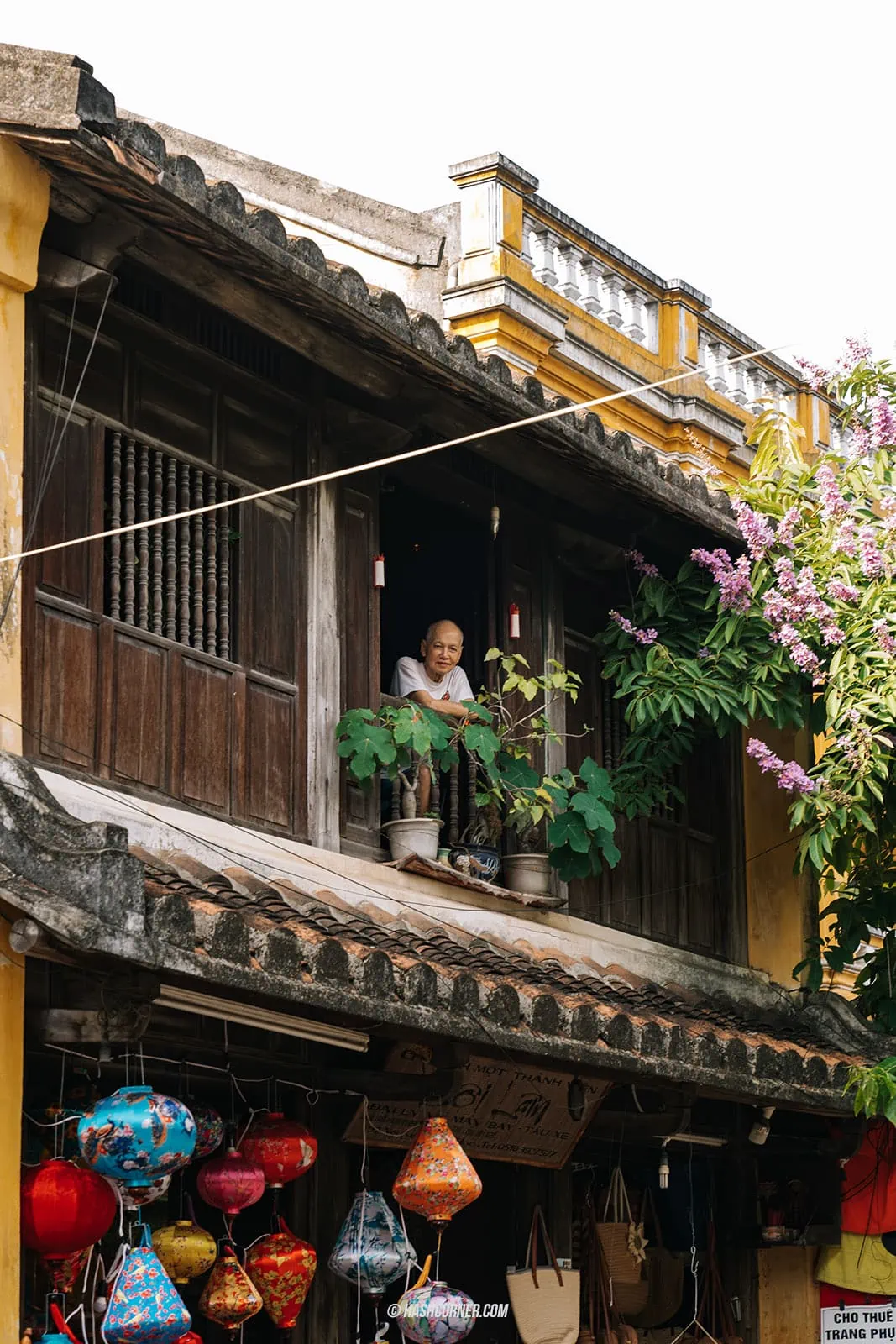
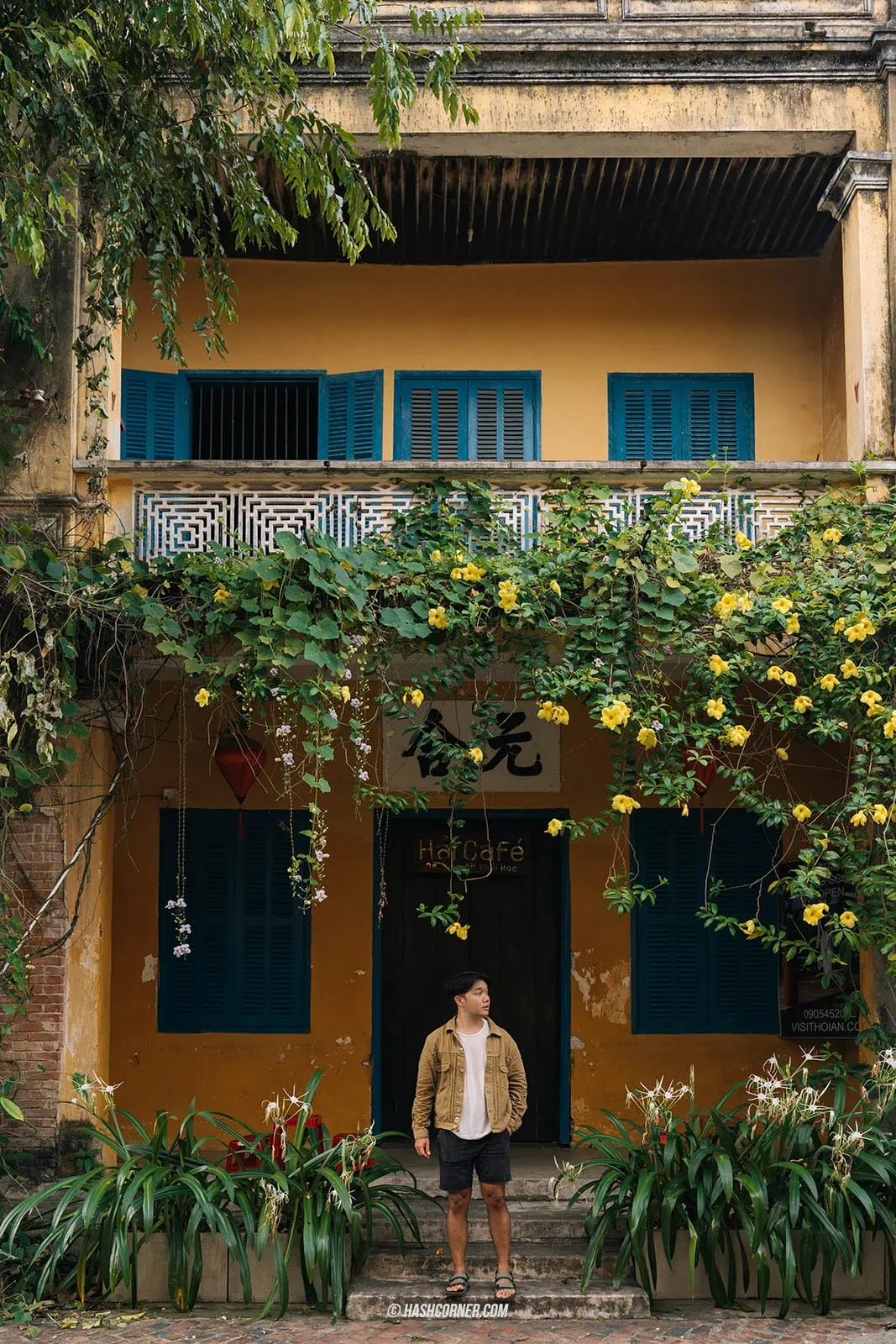
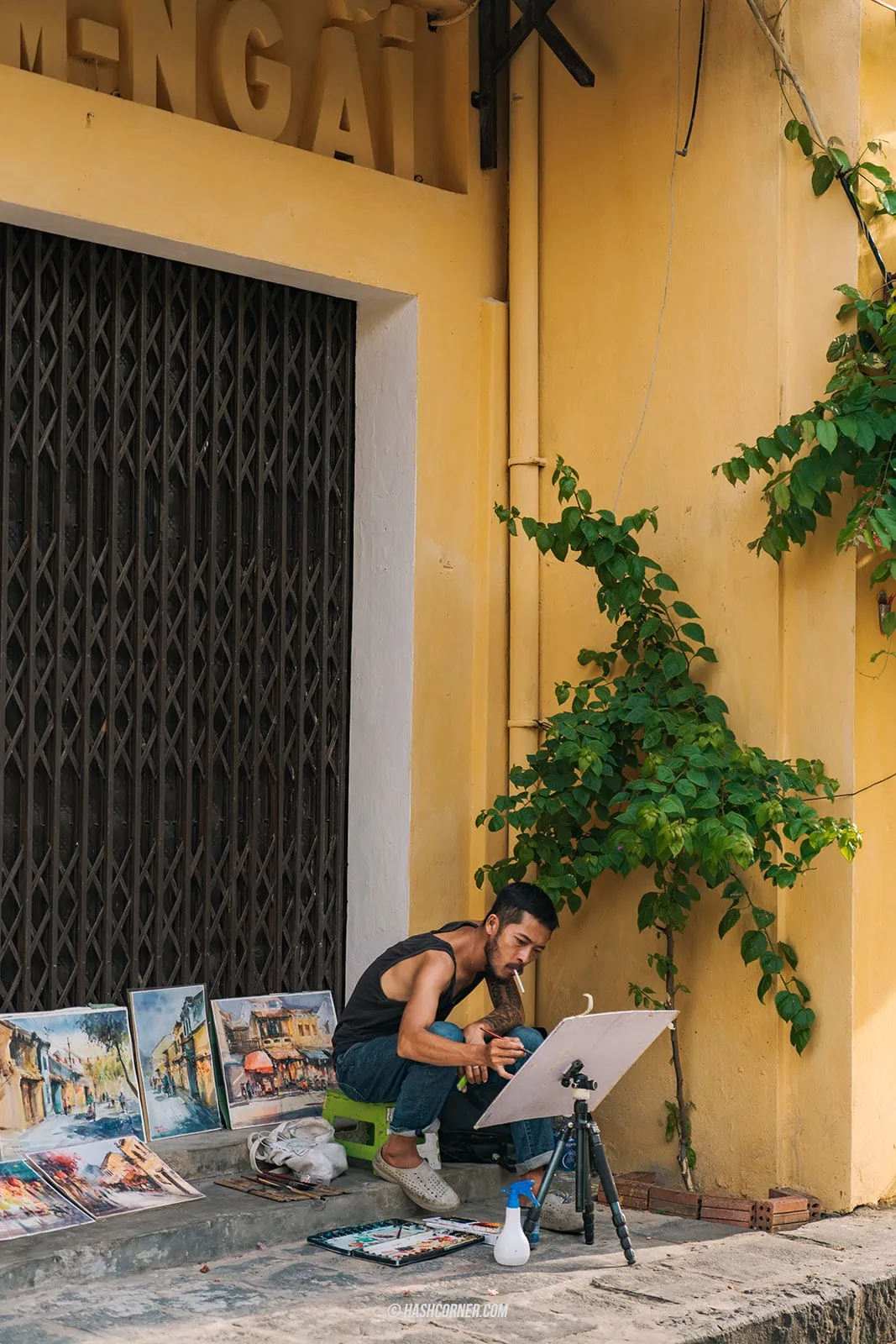
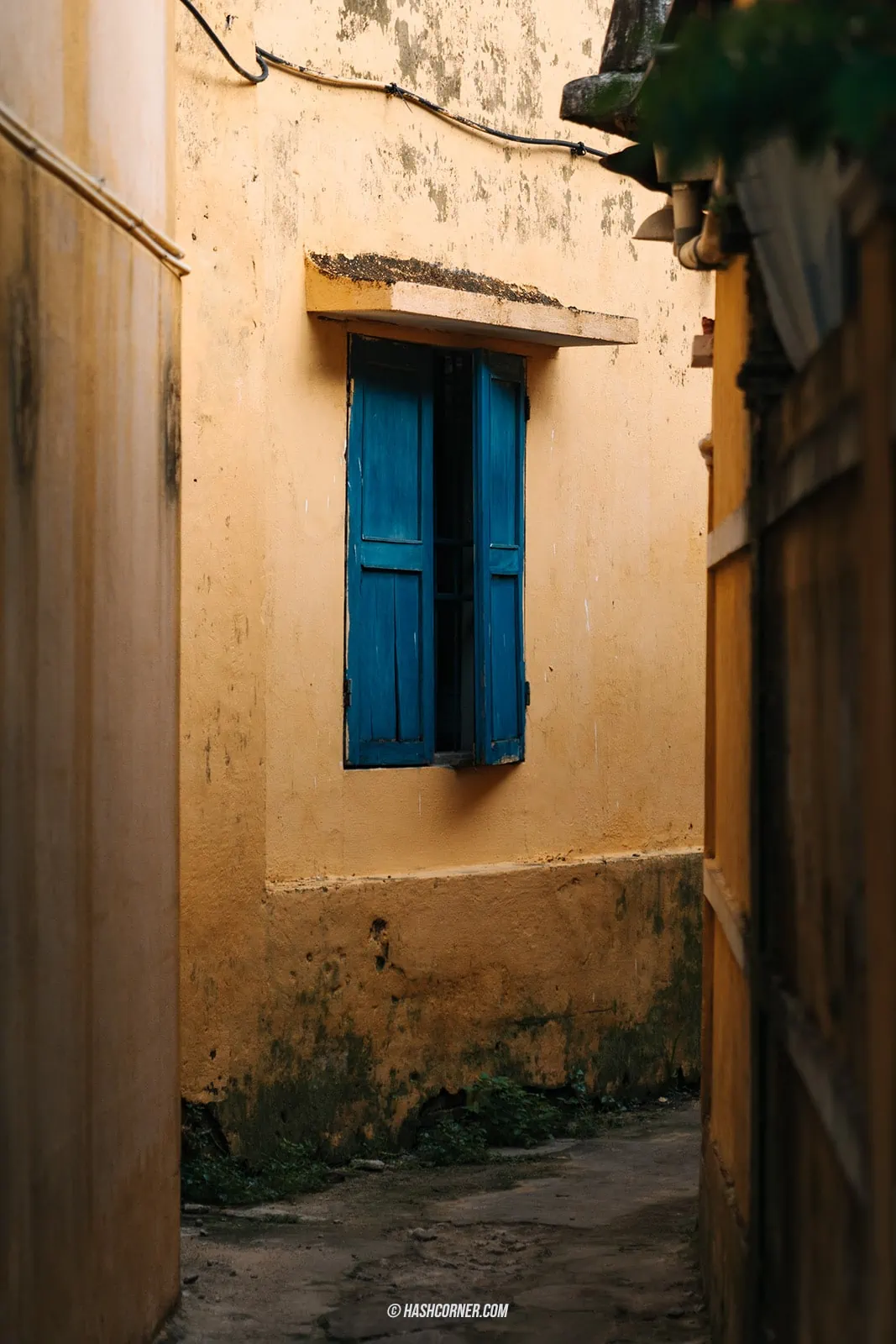
Faifo Coffee
After a long day exploring Hoi An Ancient Town, our group decided to take a break at Faifo Coffee, one of Hoi An’s most popular cafes. If you search for famous Instagram-worthy cafes in the town, Faifo Coffee is sure to be among the top. This three-story ancient building’s highlight is the rooftop area where people often take pictures to capture Hoi An’s stunning views.
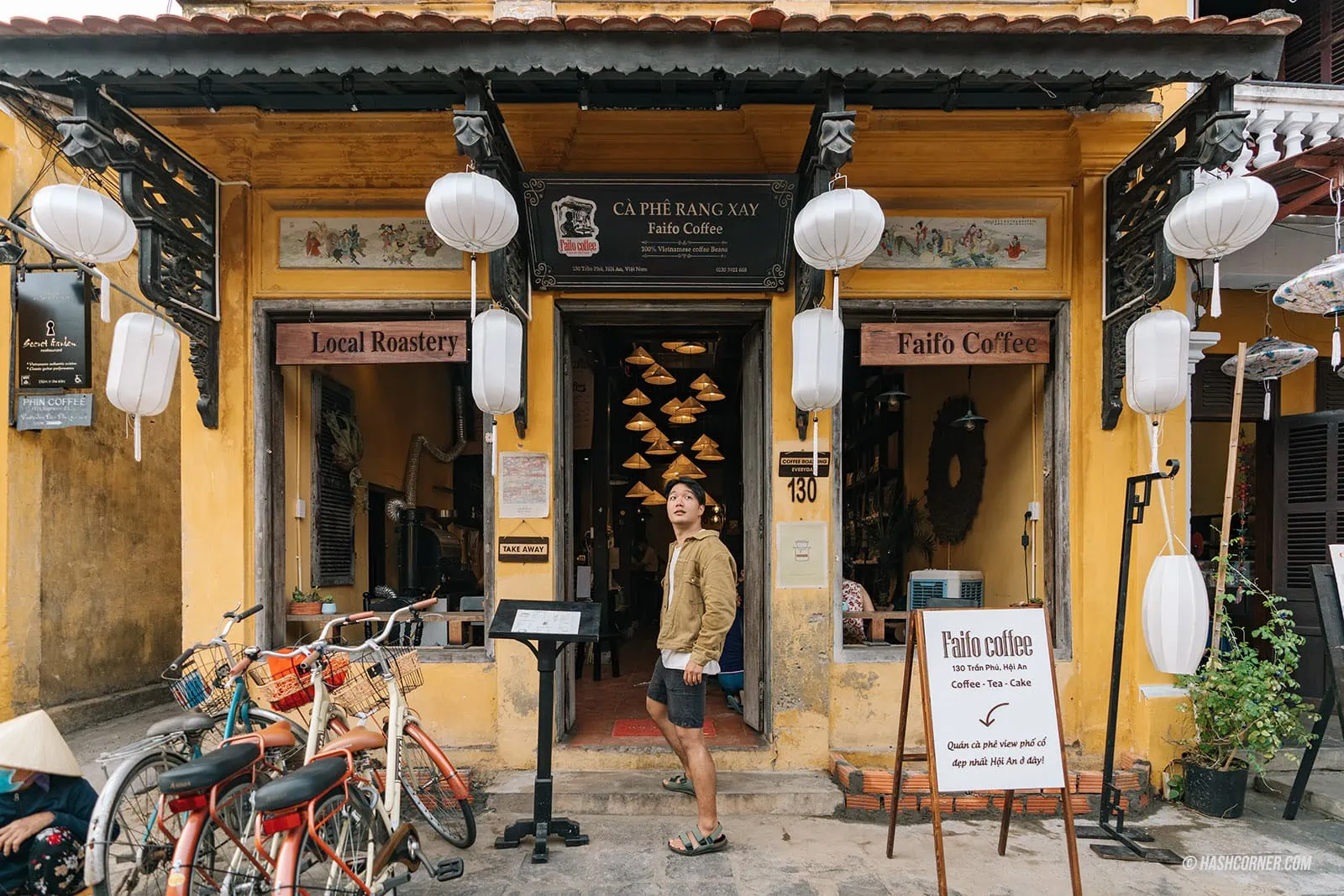
The cafe’s interior features gold and brown tones, with ample seating on every floor to accommodate guests comfortably. The drinks here are quite tasty, especially the signature Vietnamese coffee and coconut coffee. Enjoying a cold beverage amidst Hoi An’s charming, ancient atmosphere adds an extra layer of depth to the coffee’s flavor. Additionally, the drink prices are quite reasonable, making the experience even more delightful.
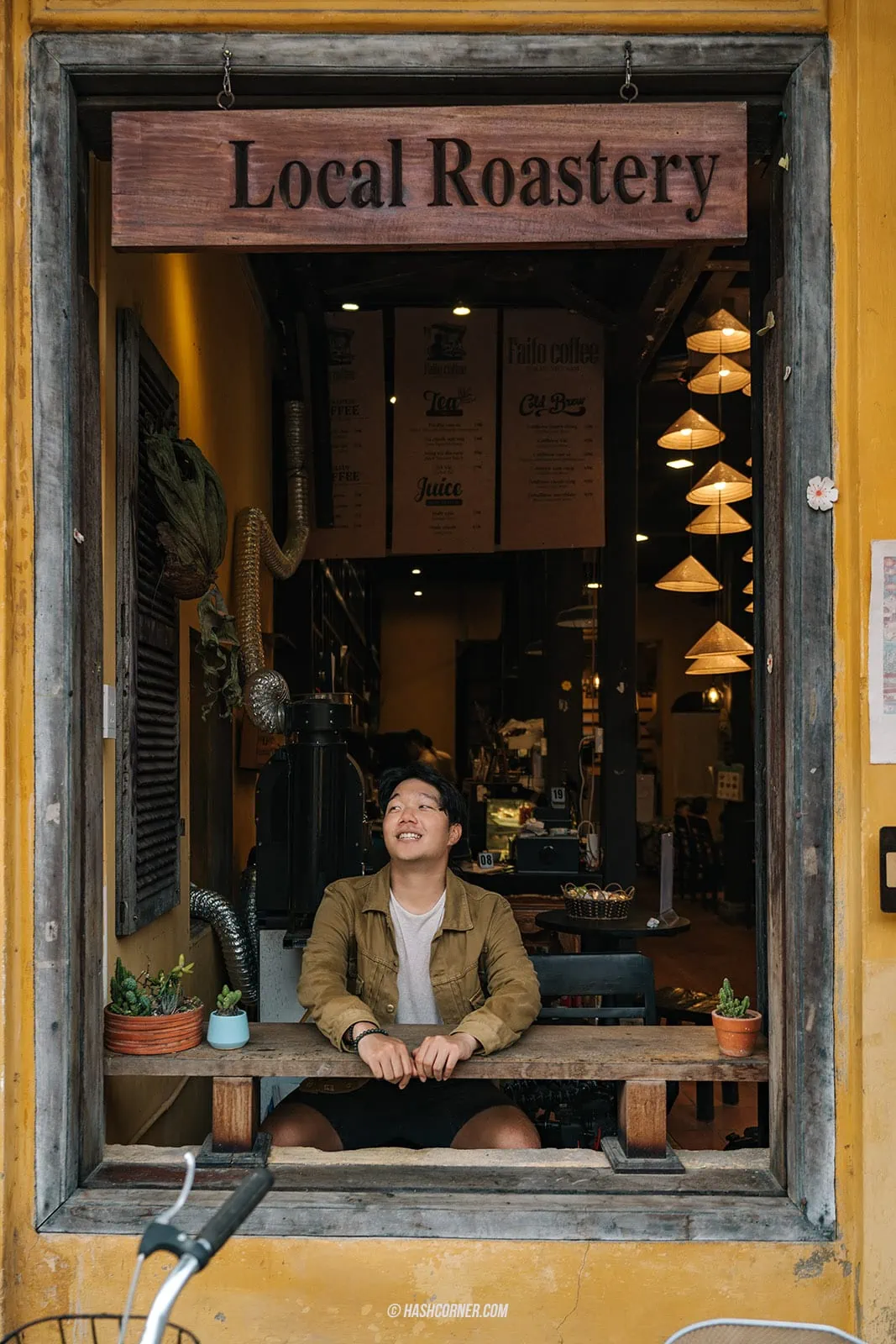
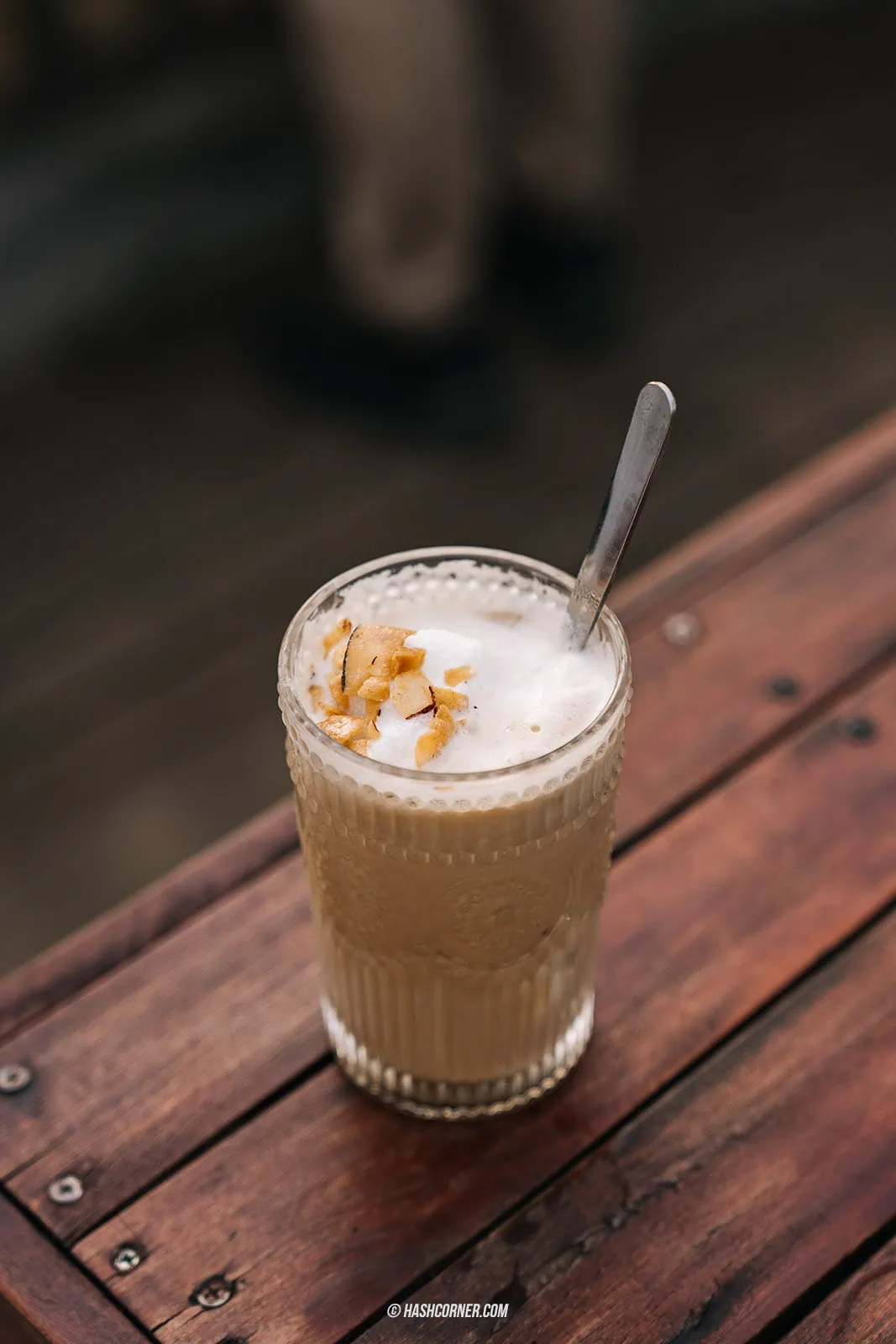
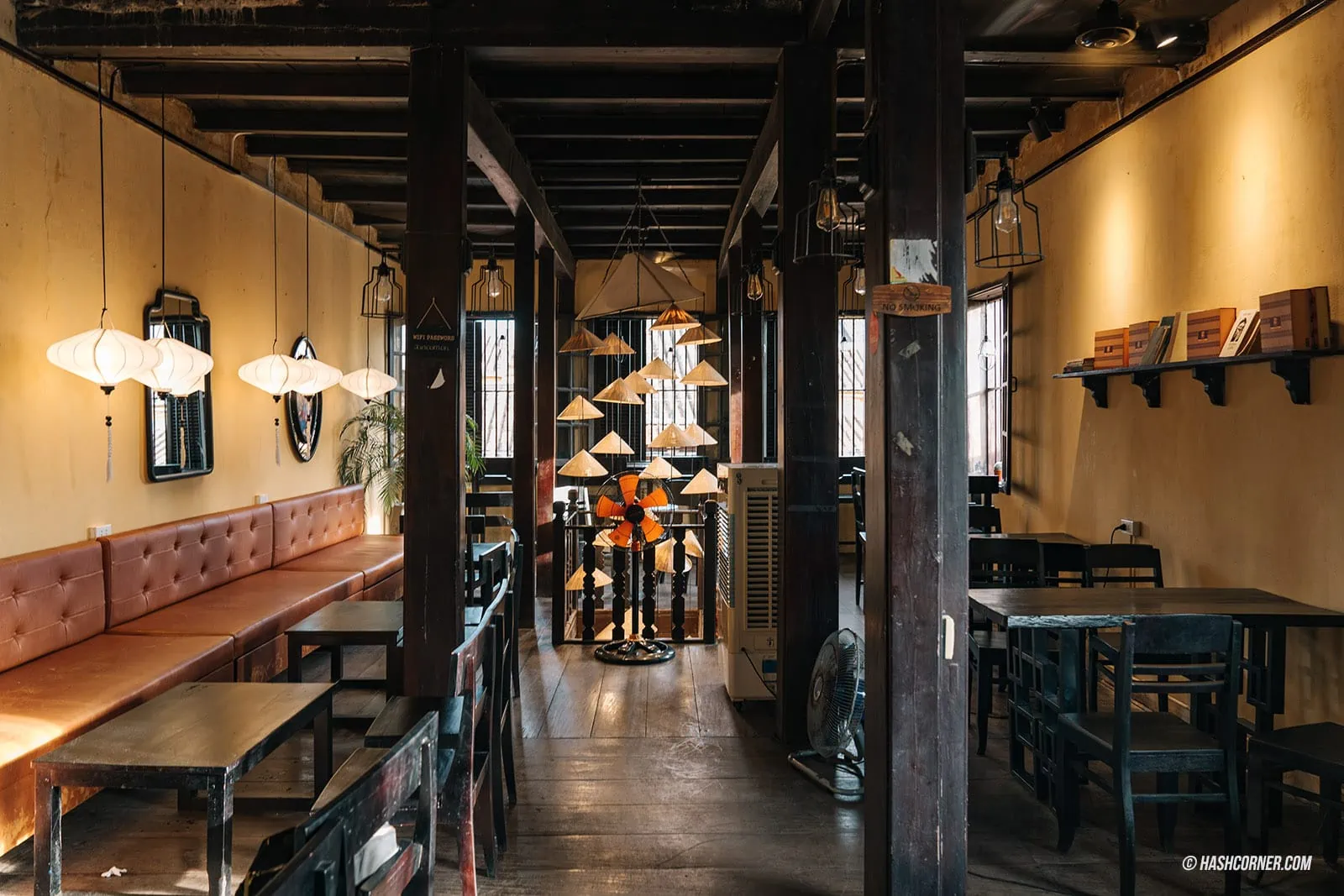
Of course, my goal was to take beautiful photos on the rooftop of Faifo Coffee, where we could enjoy panoramic views of Hoi An. The images that resulted were stunning, with people walking down the streets and the iconic yellow buildings that define this charming town. We recommend visiting between late afternoon and sunset because the lighting and mood are ideal for photography.
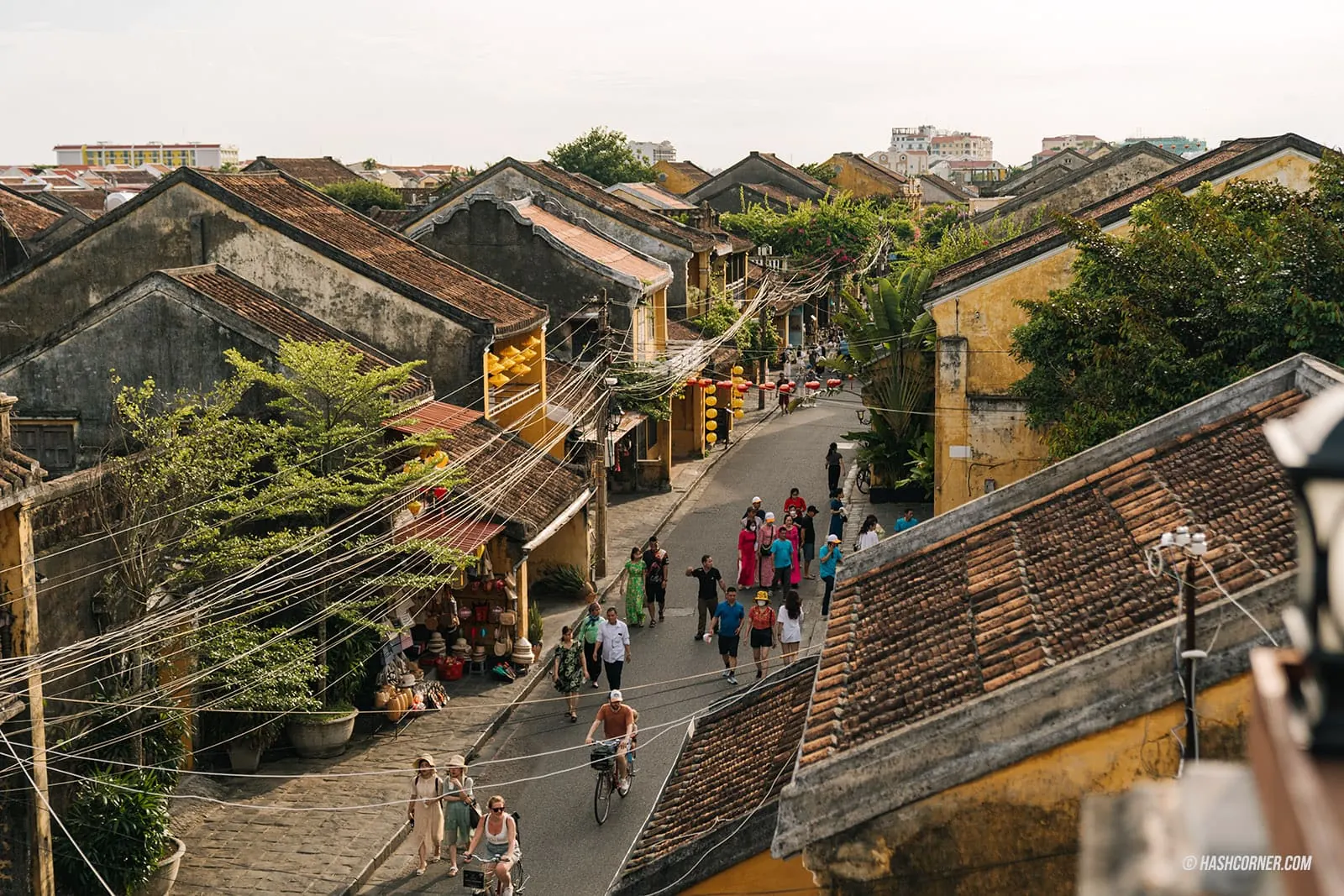
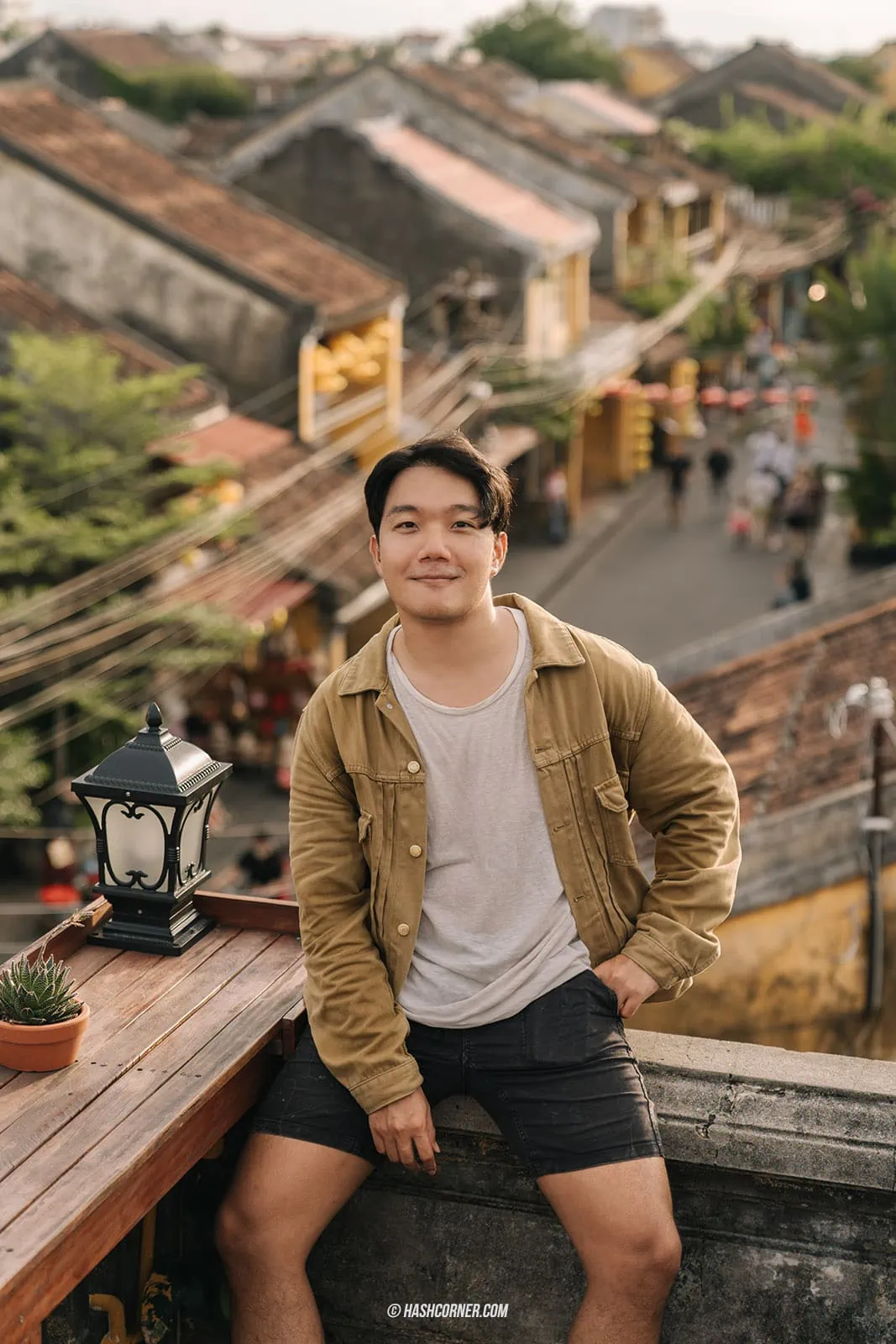
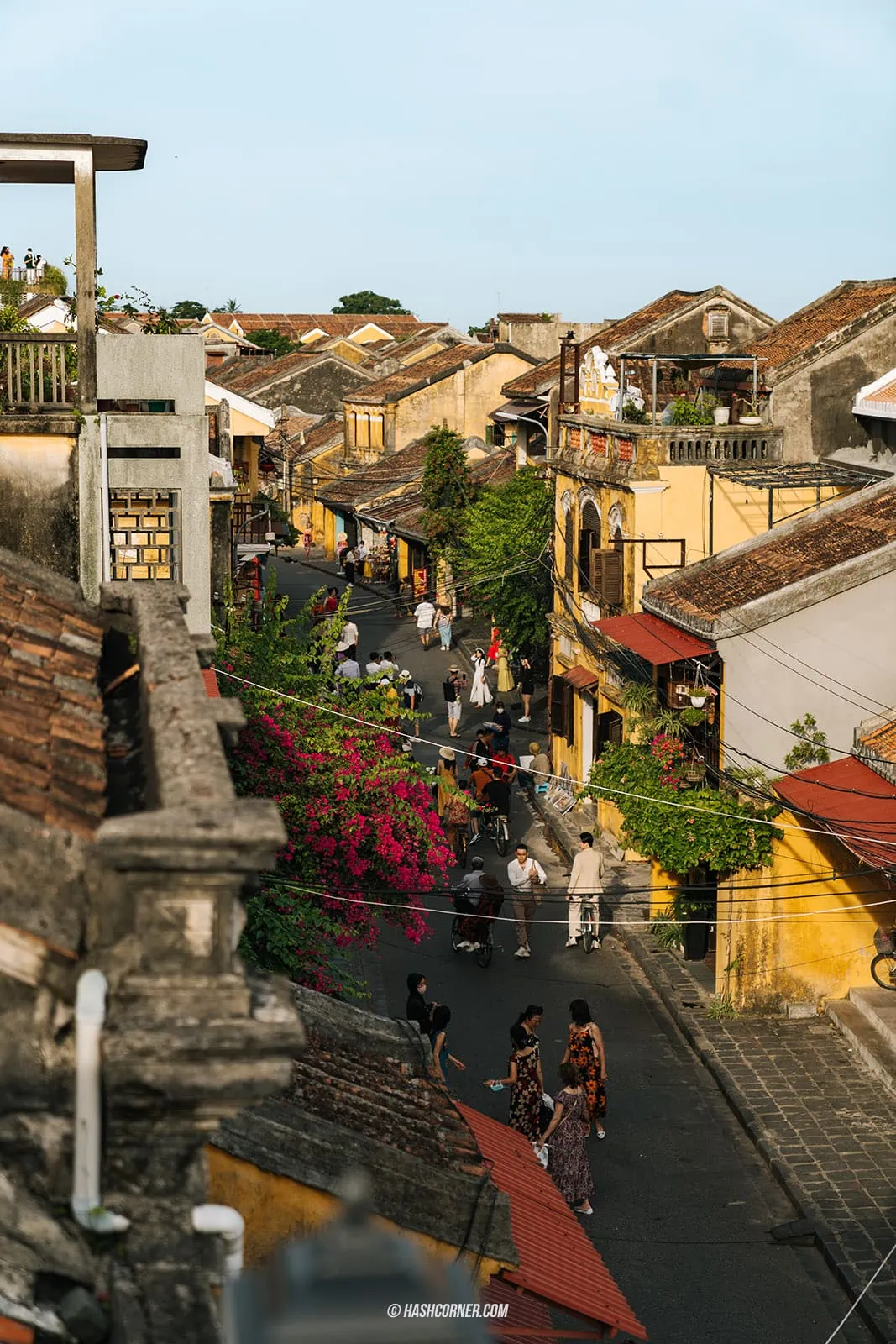
In conclusion, Faifo Coffee is one of the best coffee shops in Hoi An with a fantastic atmosphere. There are plenty of seating options even during peak tourist season, and the drinks are reasonably priced and delicious. The coffee is excellent, perfect for café lovers, and the amazing rooftop view offers a 360-degree slow-life experience of Hoi An, making it an ideal spot to relax before continuing your exploration.
Mot Hoi An
Not far from Faifo Coffee, you’ll find another popular beverage spot called Mot Hoi An – Herbal Tea, which offers a wide variety of herbal drinks. The shop displays their fresh ingredients and herbs at the front, while staff members scoop and serve refreshing beverages non-stop. This place is quite popular among tourists visiting Hoi An.
Mot Hoi An is known for its freshly extracted herbal drinks, prepared right in front of you. Their signature menu item is the “Lotus Flower Tea,” made from fresh lotus flowers. Although I didn’t try it myself, my friend sampled several menu items and reported that they were all quite tasty.
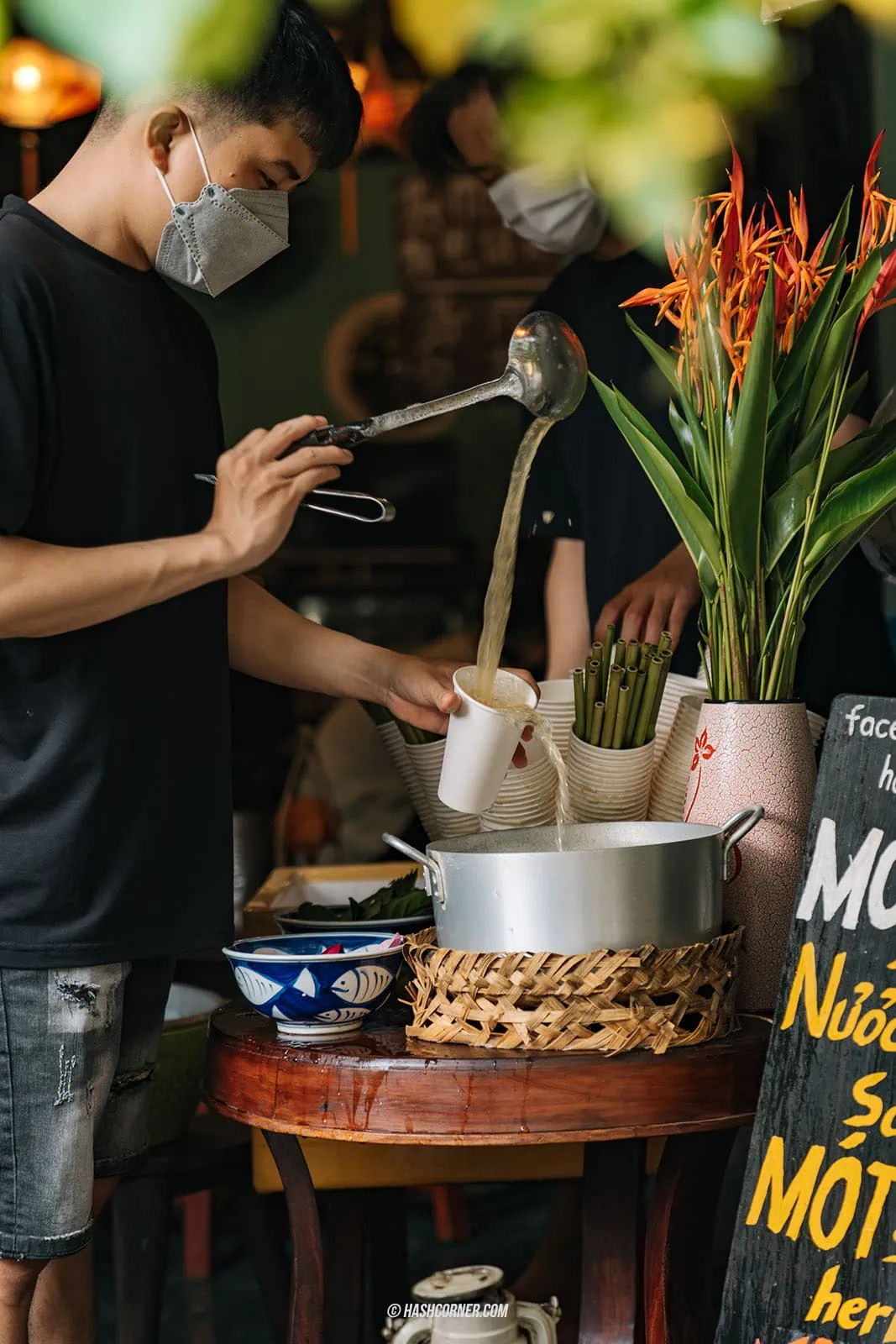
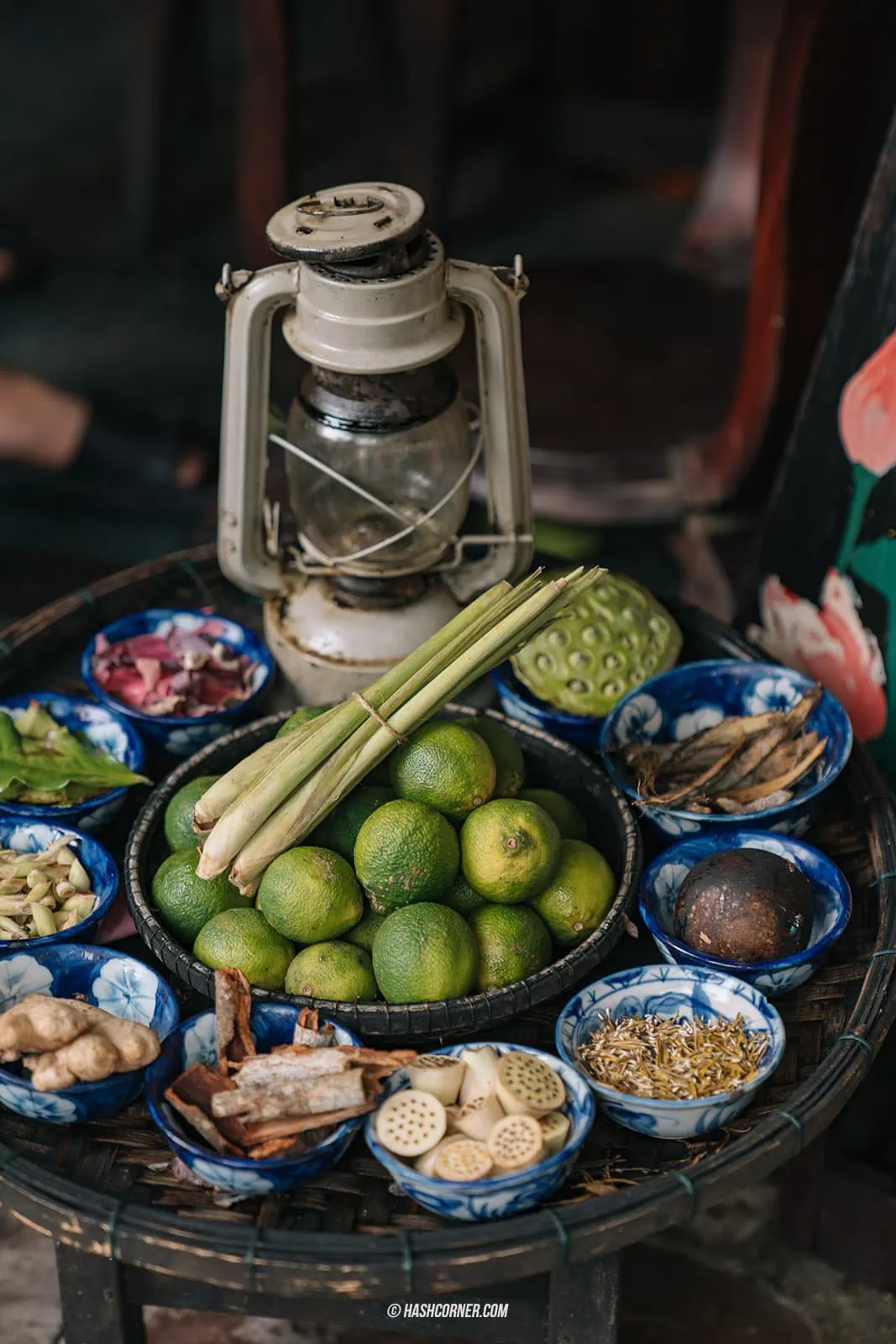
Mot Hoi An is known for its freshly extracted herbal drinks, prepared right in front of you. Their signature menu item is the “Lotus Flower Tea,” made from fresh lotus flowers. Although I didn’t try it myself, my friend sampled it and told me that they were all quite tasty.
Hoi An Night Market
The atmosphere shifts as the sun sets and the lights of Hoi An’s old town begin to glow, providing a unique experience for those seeking the lively vibe of an evening market. As dusk falls, the Hoi An Night Market, which is situated across the bridge on the opposing bank, comes to life. The atmosphere of the market is transformed, creating a separate world from the daytime atmosphere. Aside from the colorful lights from various shops, souvenir stands, and numerous street food vendors, the stunning lights on the bridge and illuminated lanterns on boats floating down the Thu Bon River add to the charm.
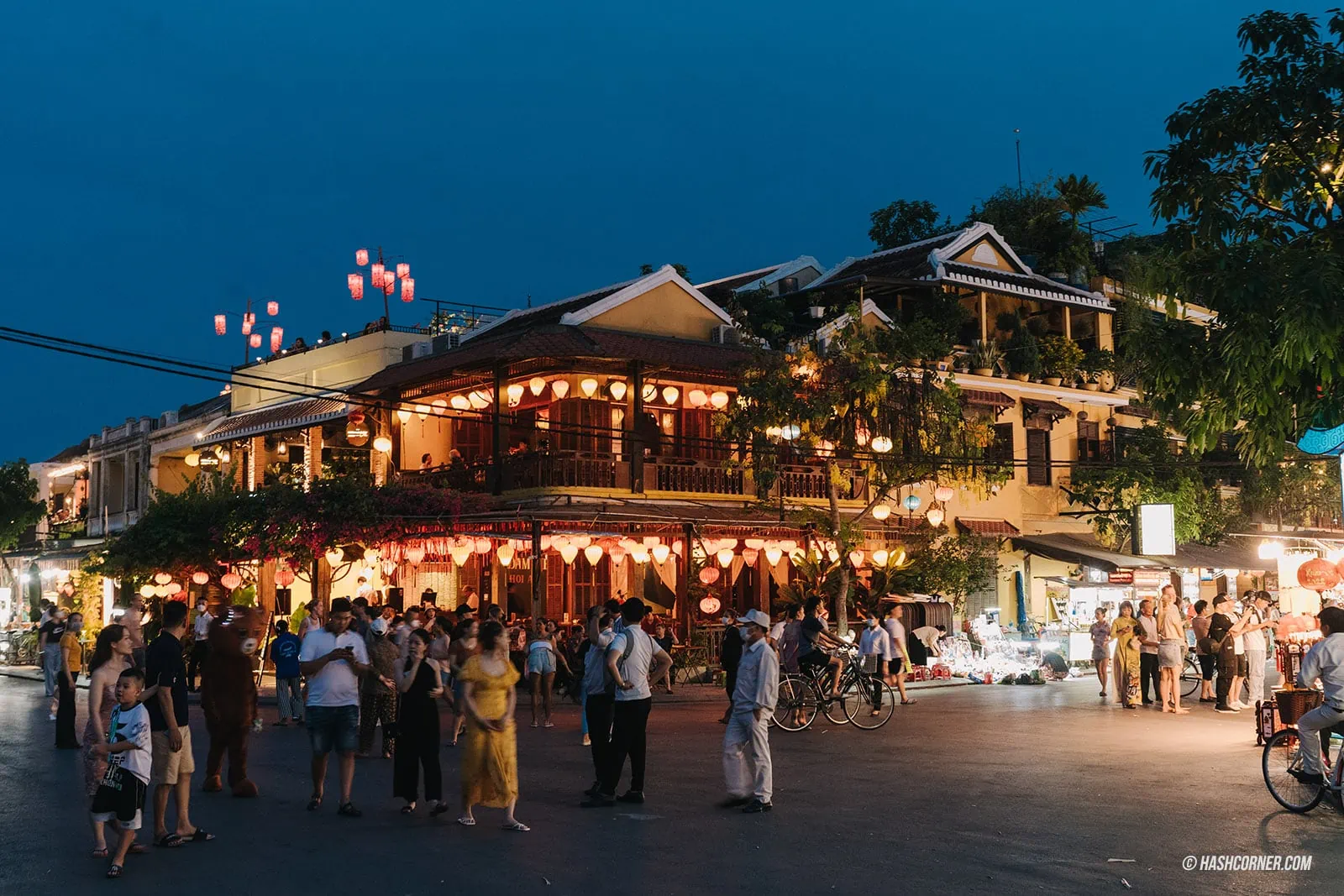
The Hoi An Night Market is open from around 5 pm until 10-11 pm. It is situated along Tran Quy Cap and Bach Dang streets, filled with a vast array of stalls selling local snacks, handicrafts, souvenirs, jewelry, clothes, shoes, and much more. The market is organized into about three rows, with walkways on either side, reminiscent of night markets back home.
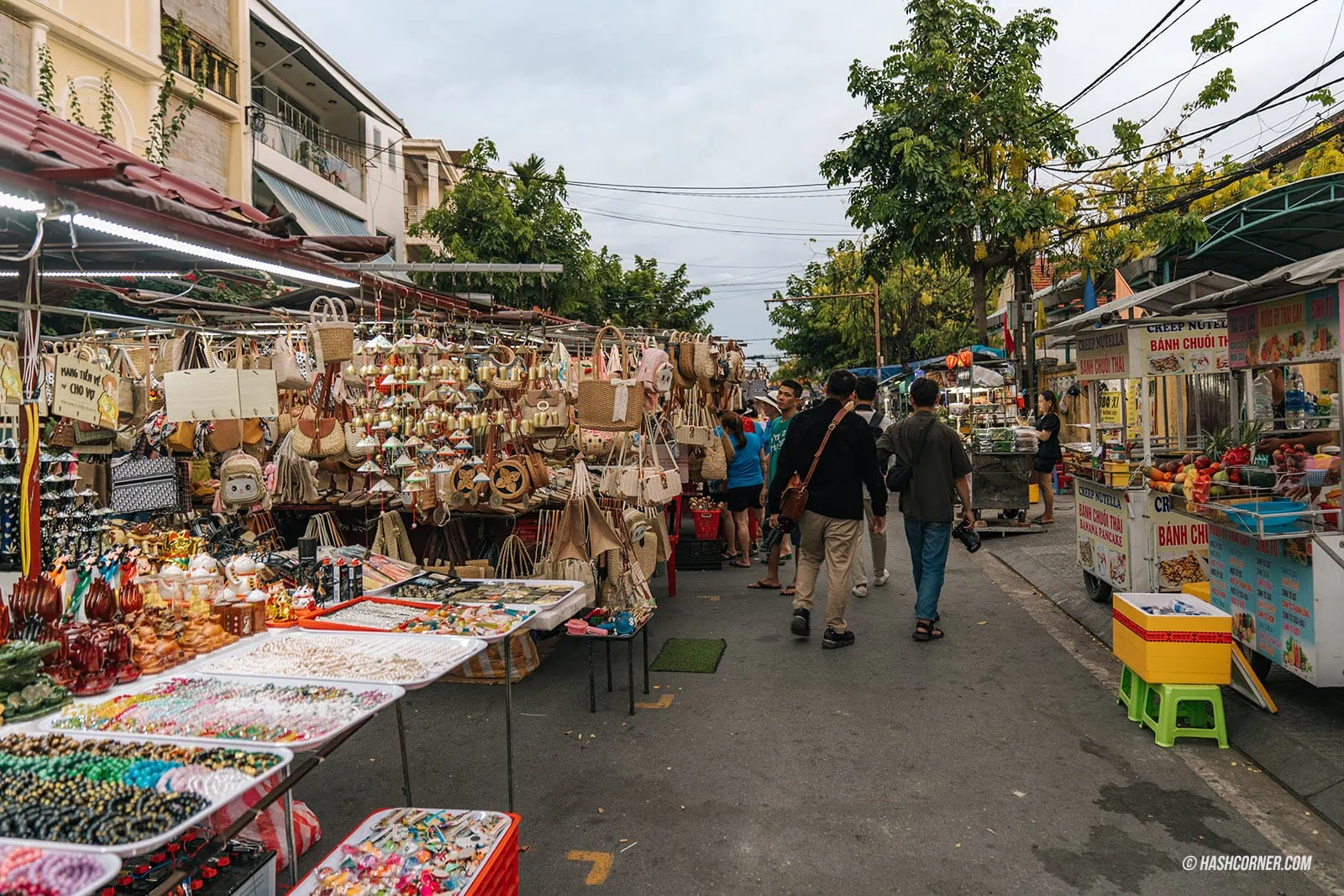
For food enthusiasts, the market is a haven, brimming with delicious local dishes. You’ll find an eye-catching variety of Vietnamese delicacies such as Vietnamese pizza, grilled meat skewers (pork, shrimp, squid, frog, and chicken), potato-wrapped sausages, coconut sweets, grilled banana sticky rice (wrapped in banana leaves with coconut milk), and sweet pudding with fruit, vegetables, beans, seeds, sticky rice, and tapioca, topped with coconut milk. Each of these items is available at very affordable prices, allowing you to indulge without breaking the bank. The taste is incredible, and you’ll enjoy authentic Vietnamese cuisine.
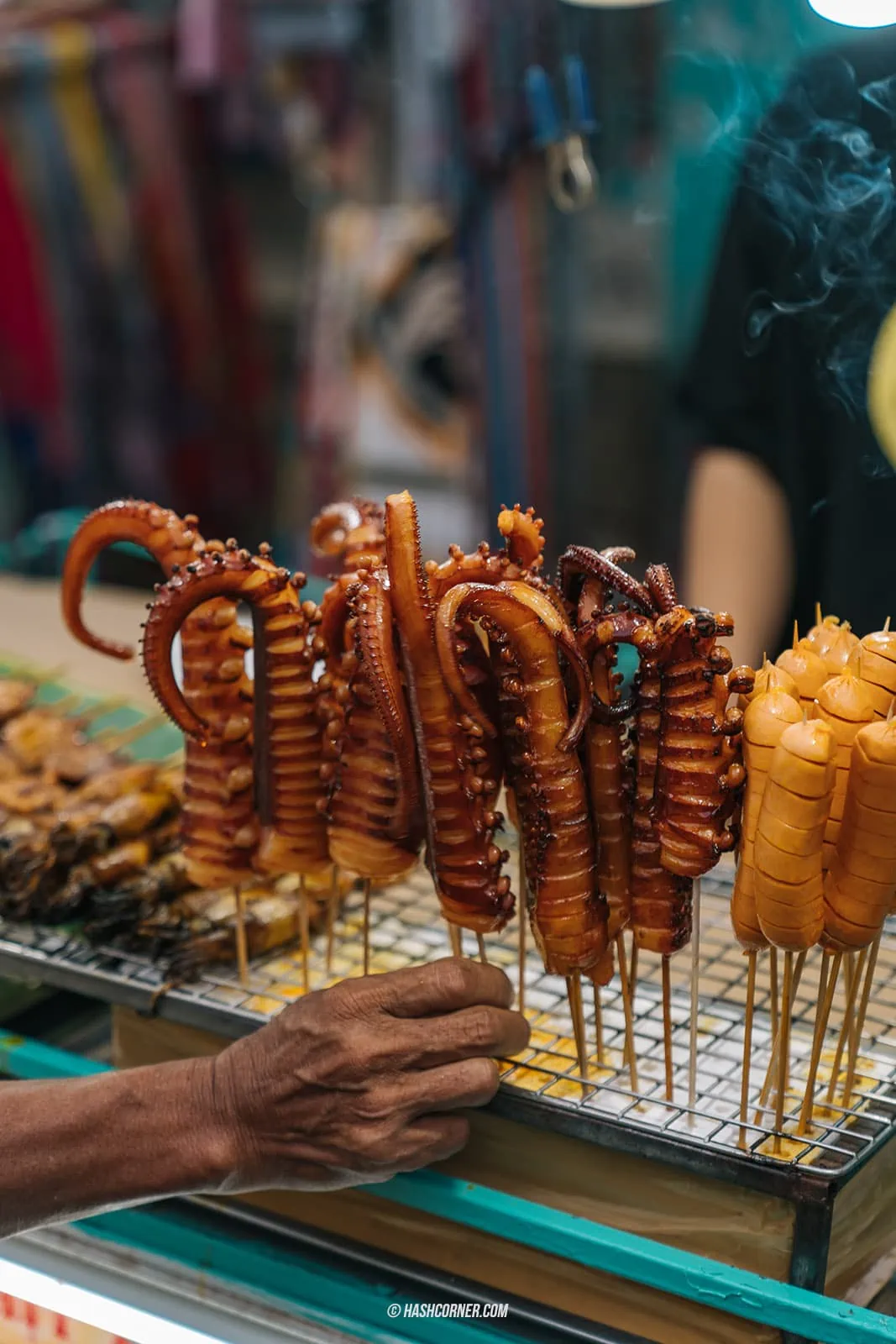
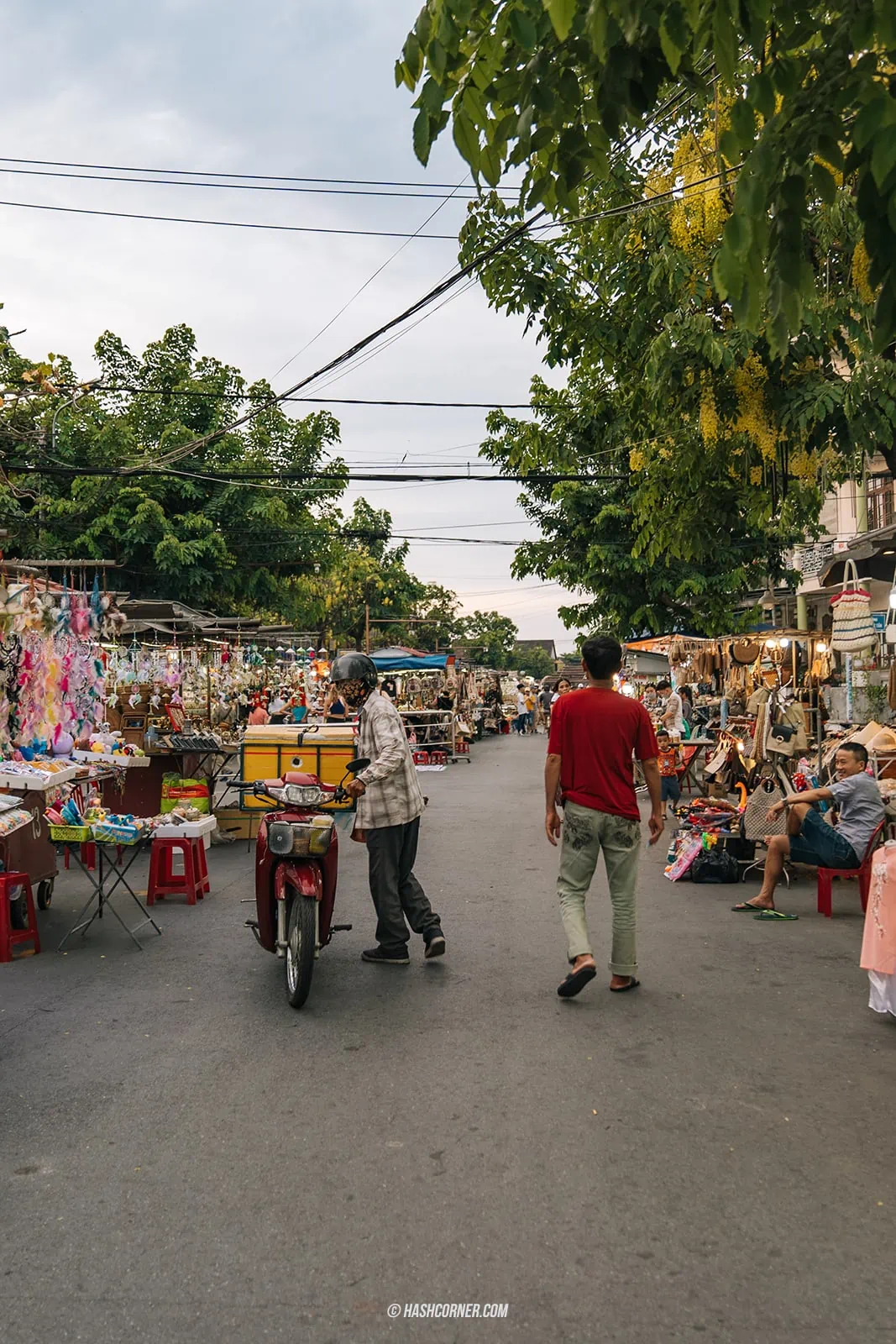
In addition to the extensive selection of goods, the lantern shops at the entrance are one of the market’s highlights. Each shop displays a different color lantern, creating a vibrant and competitive spectacle that attracts a large number of tourists looking for photo ops. You can ask the shopkeepers to let you in and photograph yourself against the beautifully arranged lanterns. They usually have props and chairs set up for this purpose, allowing you to capture stunning and memorable photos that can be considered Hoi An’s signature photographs. For these photos, the lantern shop owners may charge a small fee of 15,000 to 20,000 VND.
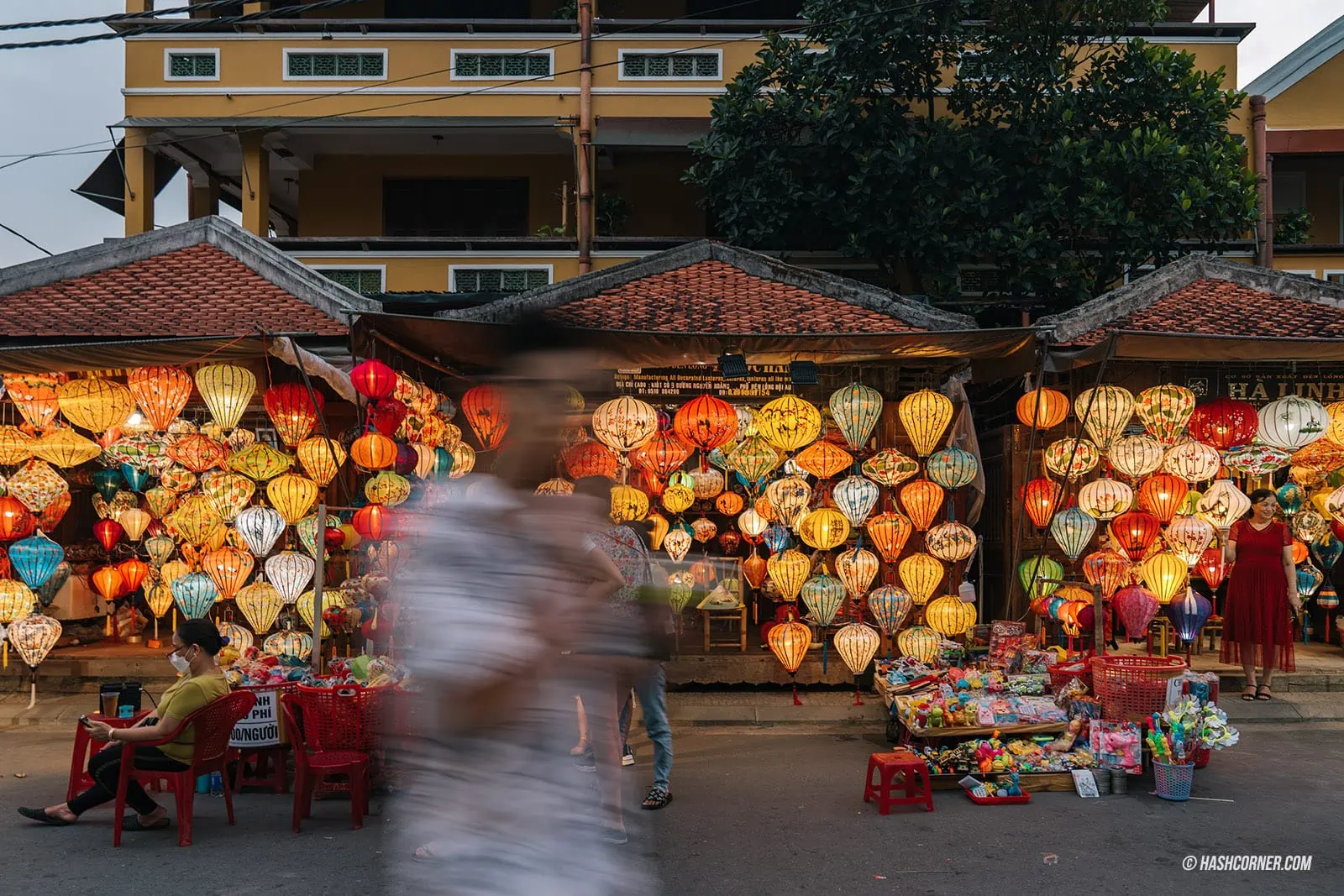
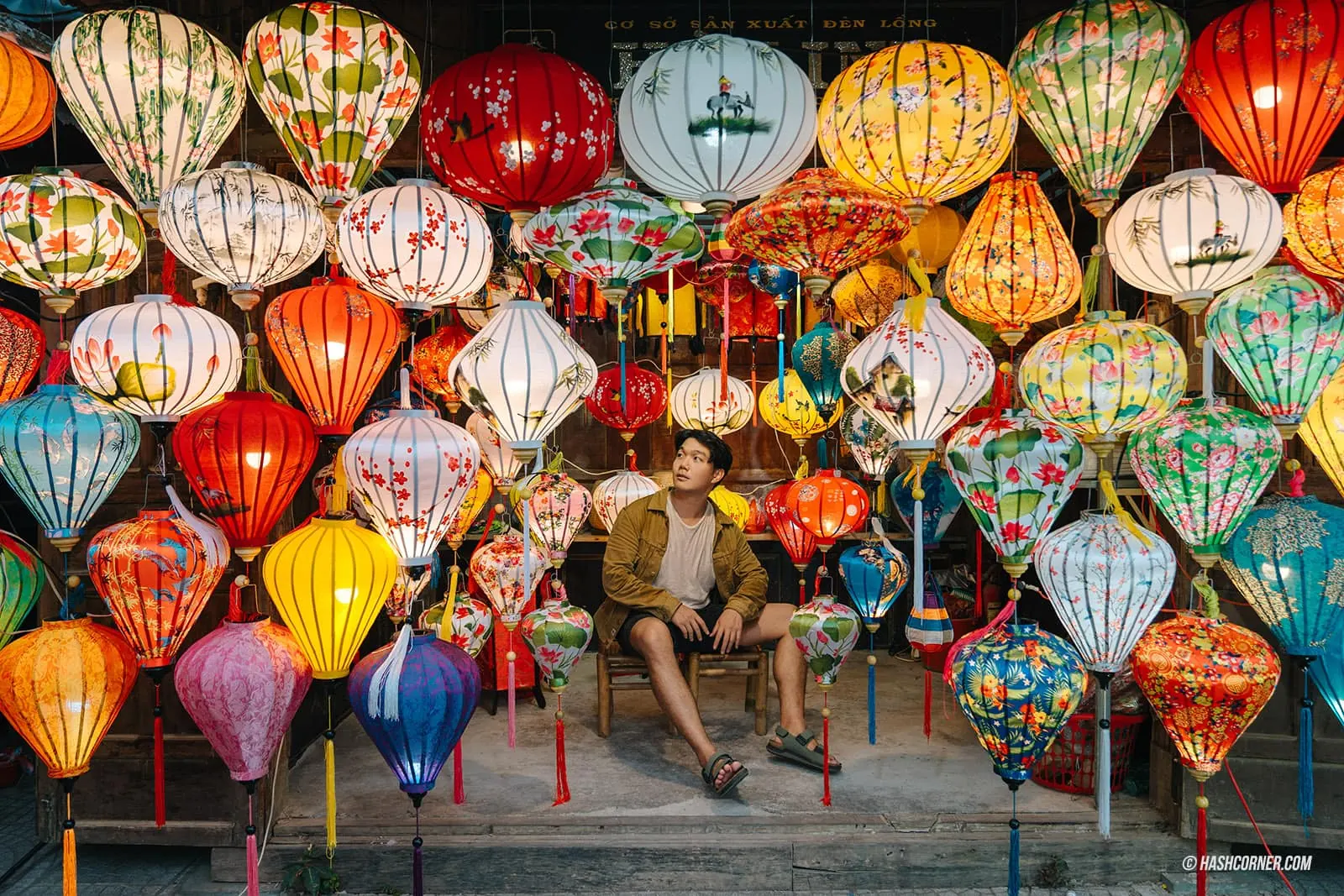
ล่องเรือในแม่น้ำทูโบน (Thu Bon River Cruise)
After enjoying the delicious food, don’t forget to take a cruise on the Thu Bon River, which is said to be one of the most beautiful rivers in Vietnam. The river holds significant importance in terms of the geography, culture, and history of Hoi An. The Thu Bon River originates from the Ngoc Linh Mountain at an elevation of 2,598 meters and is locally known as ‘Kuadai’. During the 19th century, the river played a crucial role in Hoi An’s development due to its geographical features, such as flowing into the East China Sea and having a large river mouth that facilitated navigation and trade. The Thu Bon River became an international trade destination and a stopover point for numerous cargo ships heading to China and other countries, benefiting the local population by enabling easy trade, export, and import of goods.
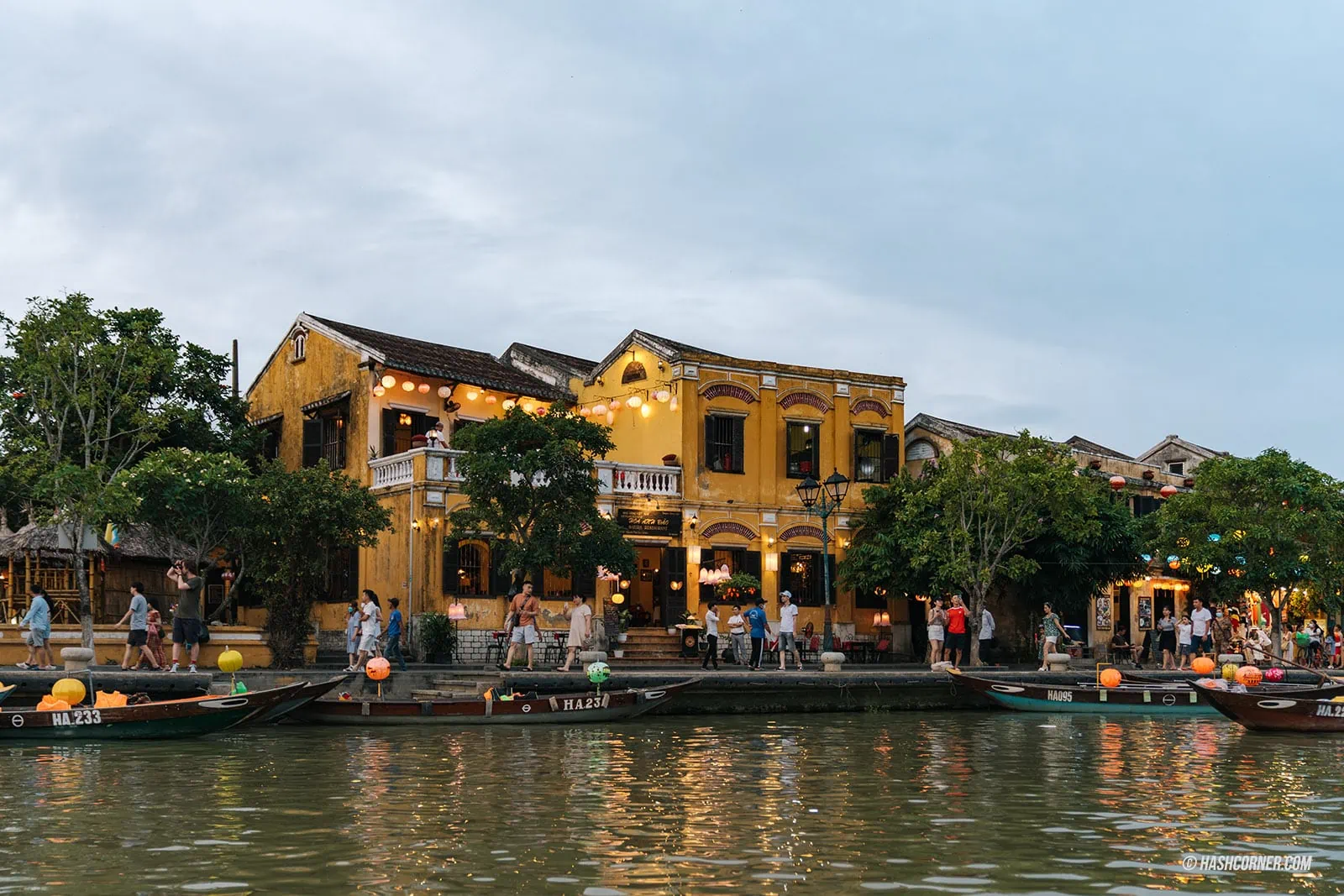
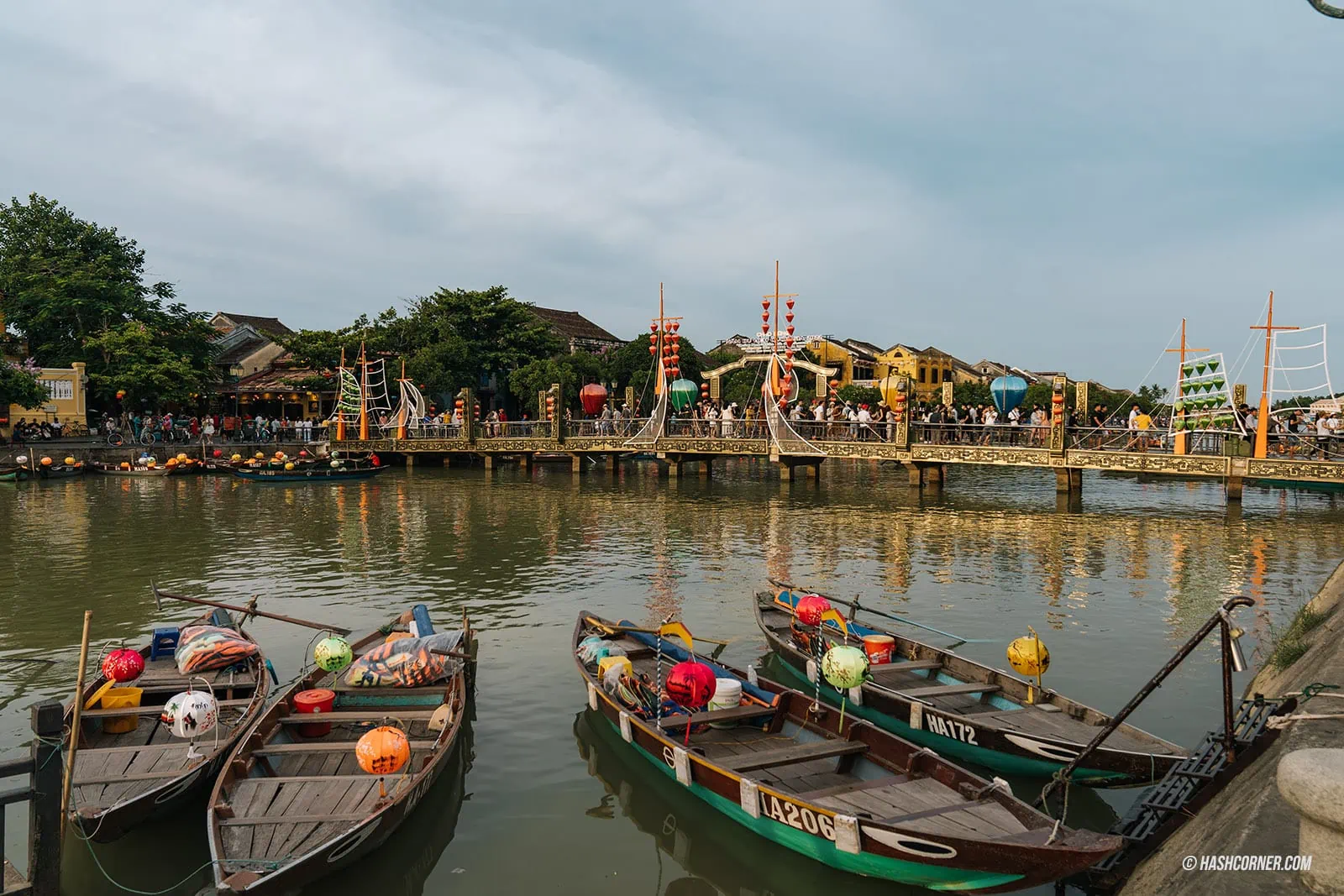
Nowadays, when visiting Hoi An, one must not miss the opportunity to take a cruise along the Thu Bon River to enjoy a different perspective of the ancient town. The cruise fares are usually negotiable, and you’ll find plenty of locals offering their services along the way, allowing you to bargain and choose your preferred vendor. If you prefer a hassle-free experience, you can also book your cruise online via Klook. [Book through Klook]
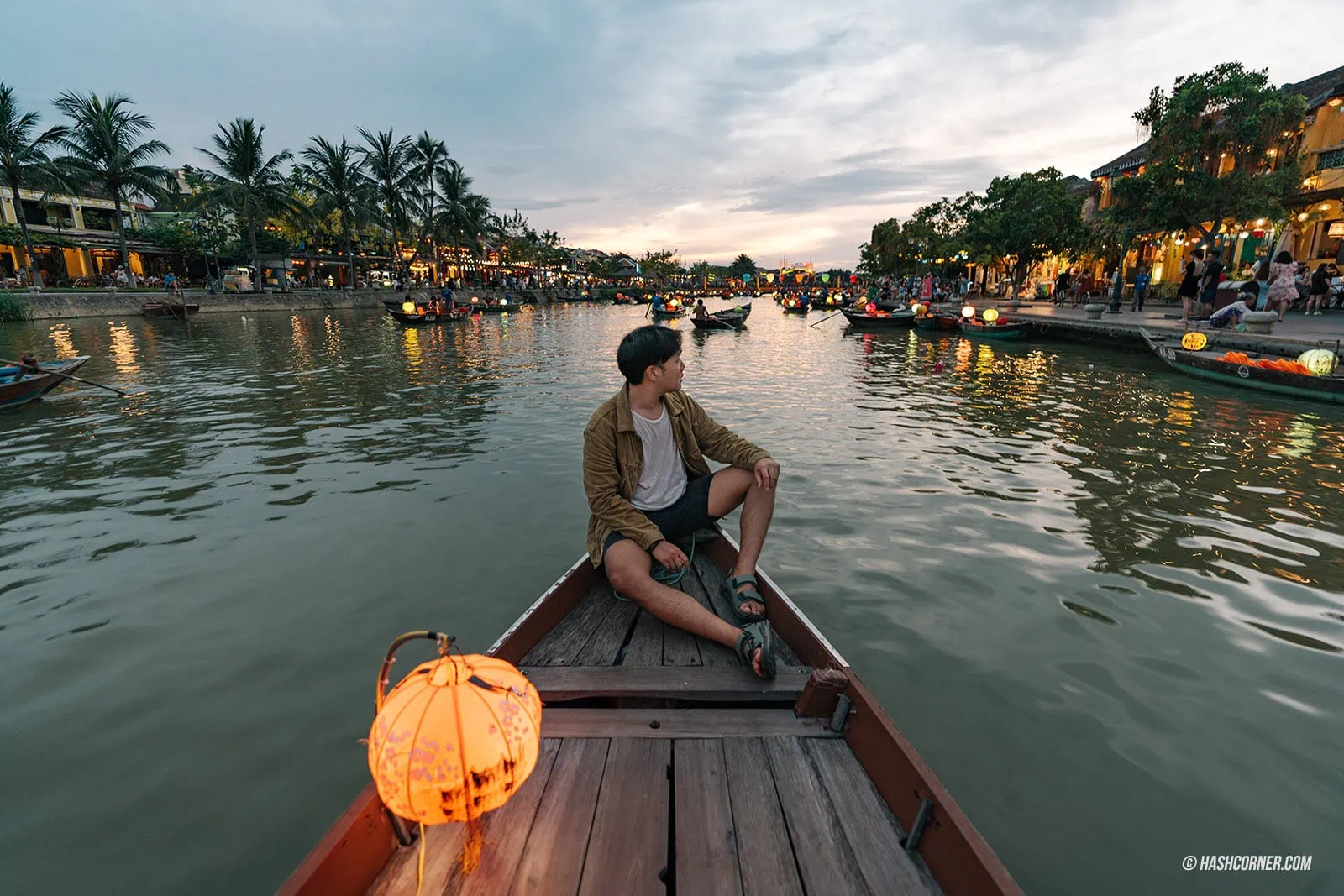
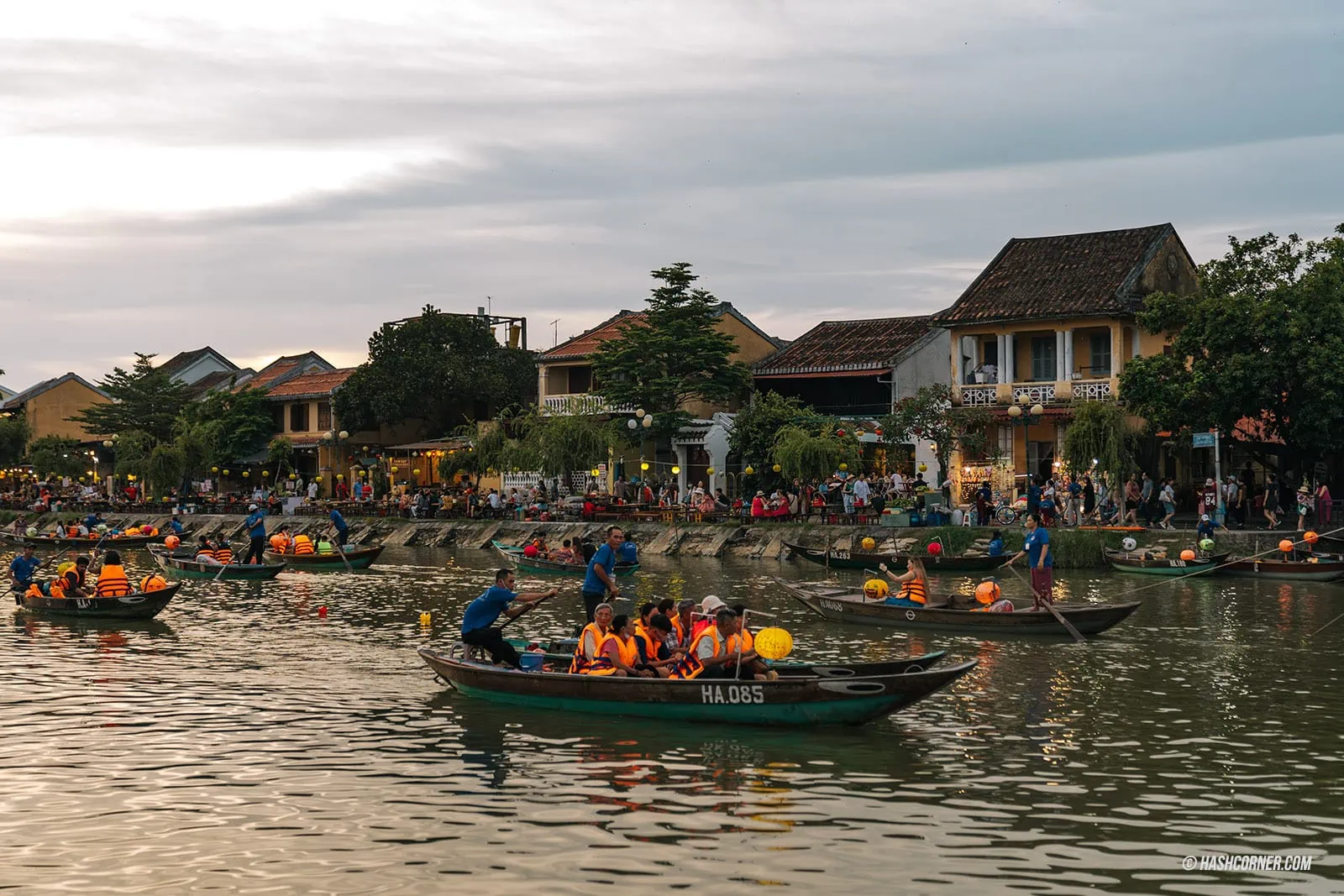
Taking a round-trip cruise on the Thu Bon River lasts around 40 minutes and offers a fantastic opportunity to soak in the charming ambiance of the town at night. As you gently glide along the river, you’ll get an up-close glimpse of the daily lives of the people residing on the riverbanks. As the evening deepens, more and more boats with passengers join the river cruise. Adorned with glowing lanterns, the boats create a mesmerizing sea of red lights that dance across the water. It’s a truly enchanting and unforgettable experience that everyone should savor firsthand.
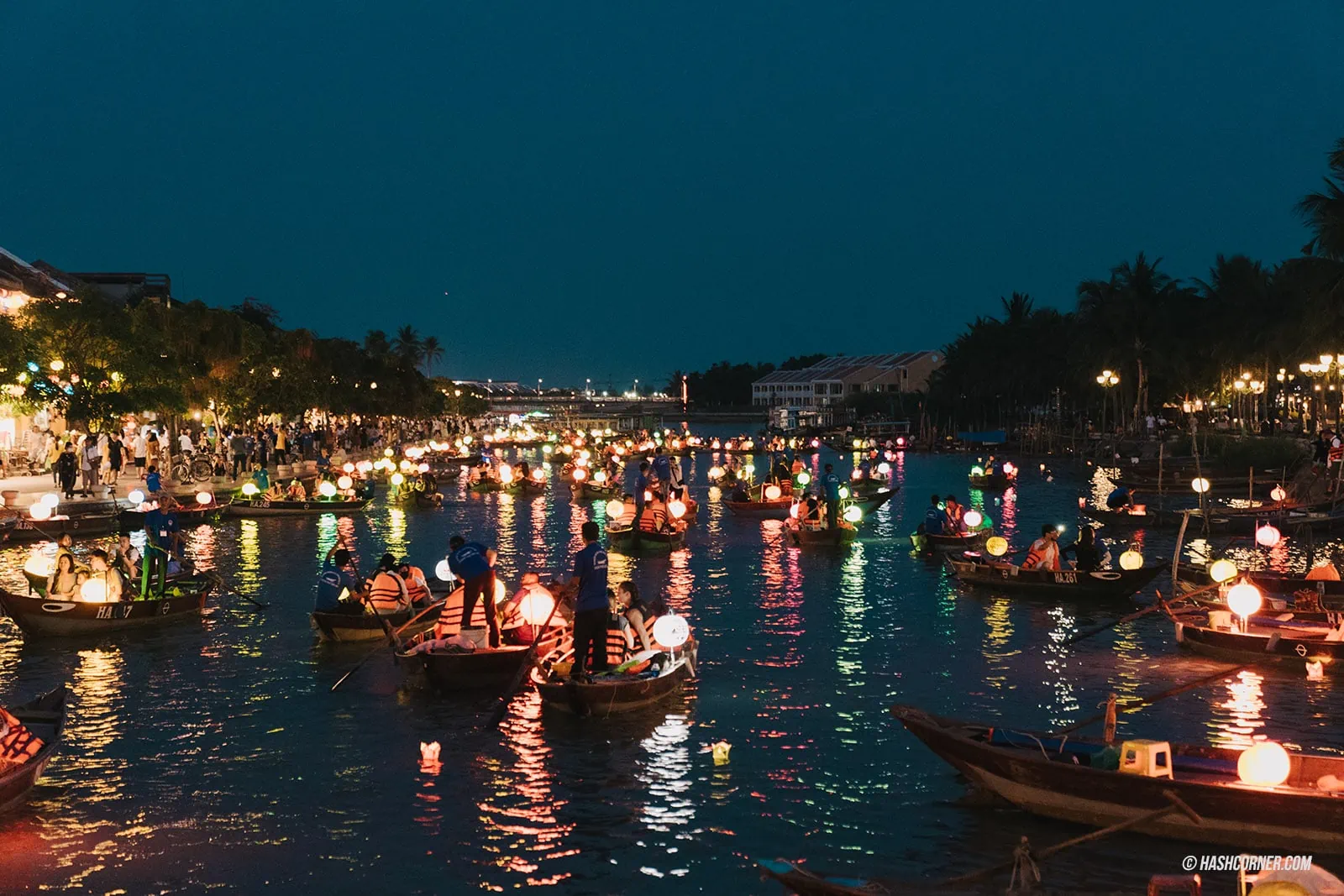
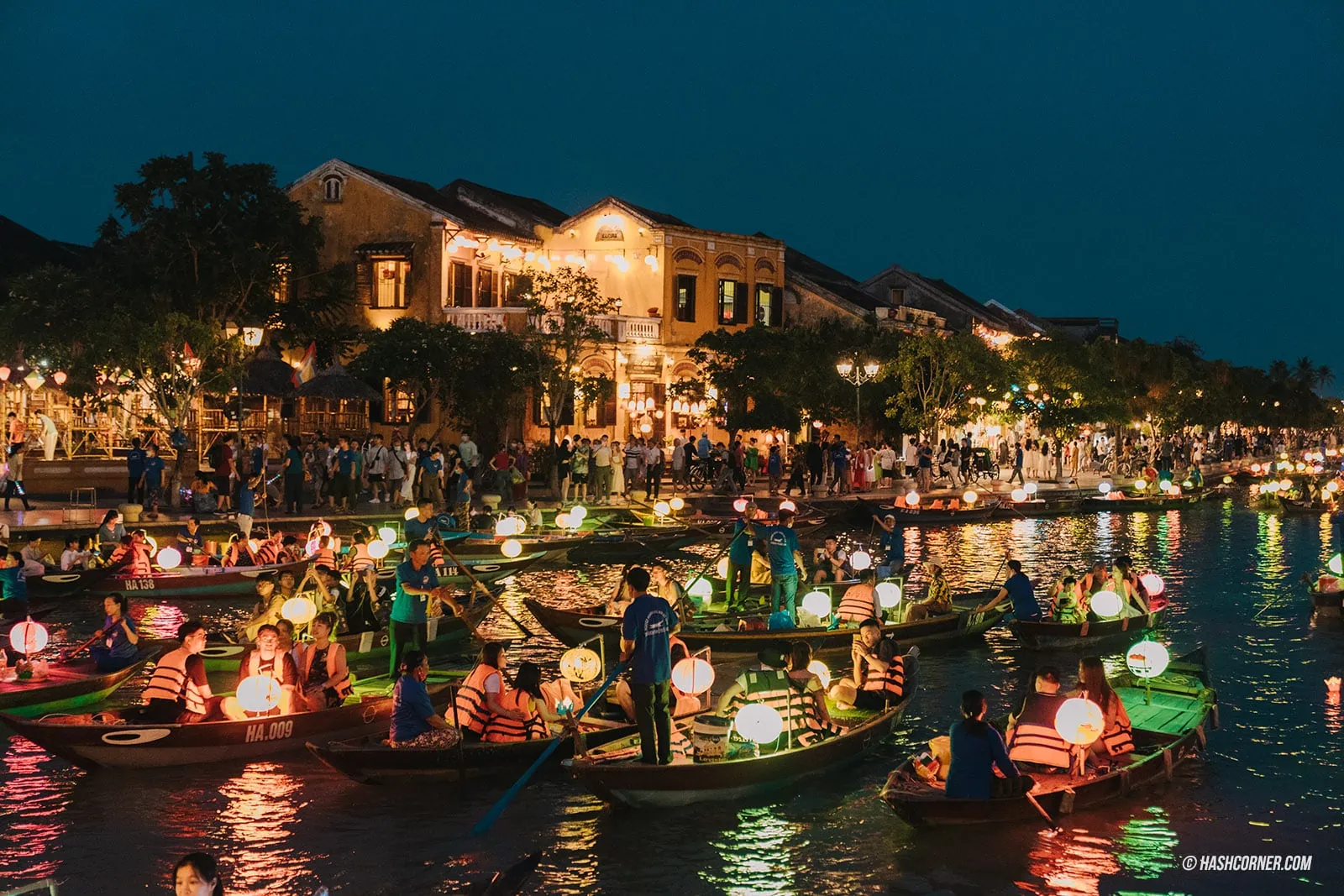
DAY 2 : Cong Caphe
Start your day in Hoi An with a refreshing morning beverage at Cong Caphe before exploring the town further. Cong Caphe is a renowned Vietnamese cafe with branches in almost every corner of the country. Established in 2007, its first branch was a small coffee shop on Trieu Viet Vuong Street in Hanoi, a historic cafe street. The name “Cong” or “Cộng” in Vietnamese is derived from the official name of Vietnam, CỘNG HOÀ XÃ HỘI CHỦ NGHĨA VIỆT NAM (Socialist Republic of Vietnam).
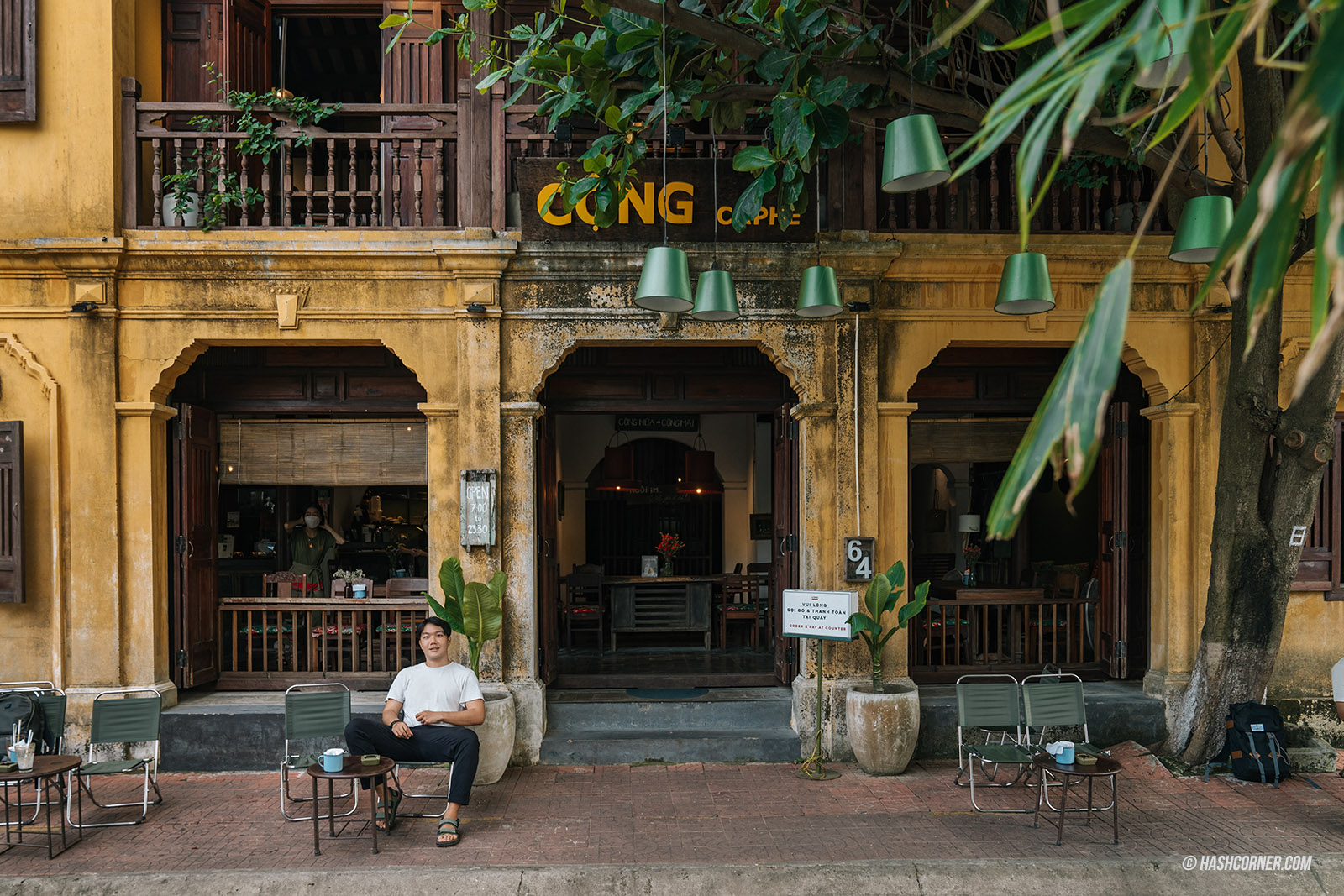
The cafe’s atmosphere is classified by a yellow-brown color scheme that reflects Hoi An’s distinct charm. The interior is decorated with cushions and red floral-patterned seating pads that add a touch of Vietnamese flair to the wooden furniture. With so many seating options, you can find a spot that suits your needs.
The tried-and-true drink is their signature Coconut Coffee. It’s absolutely delicious, with the aroma of coffee blending perfectly with the coconut, resulting in an incredibly satisfying sweet, creamy, and slightly bitter flavor combination. It refreshes and energizes you after you drink it. This menu item is highly recommended if you enjoy coffee but crave something sweet and creamy. It’s a fan favorite that you’ll adore!
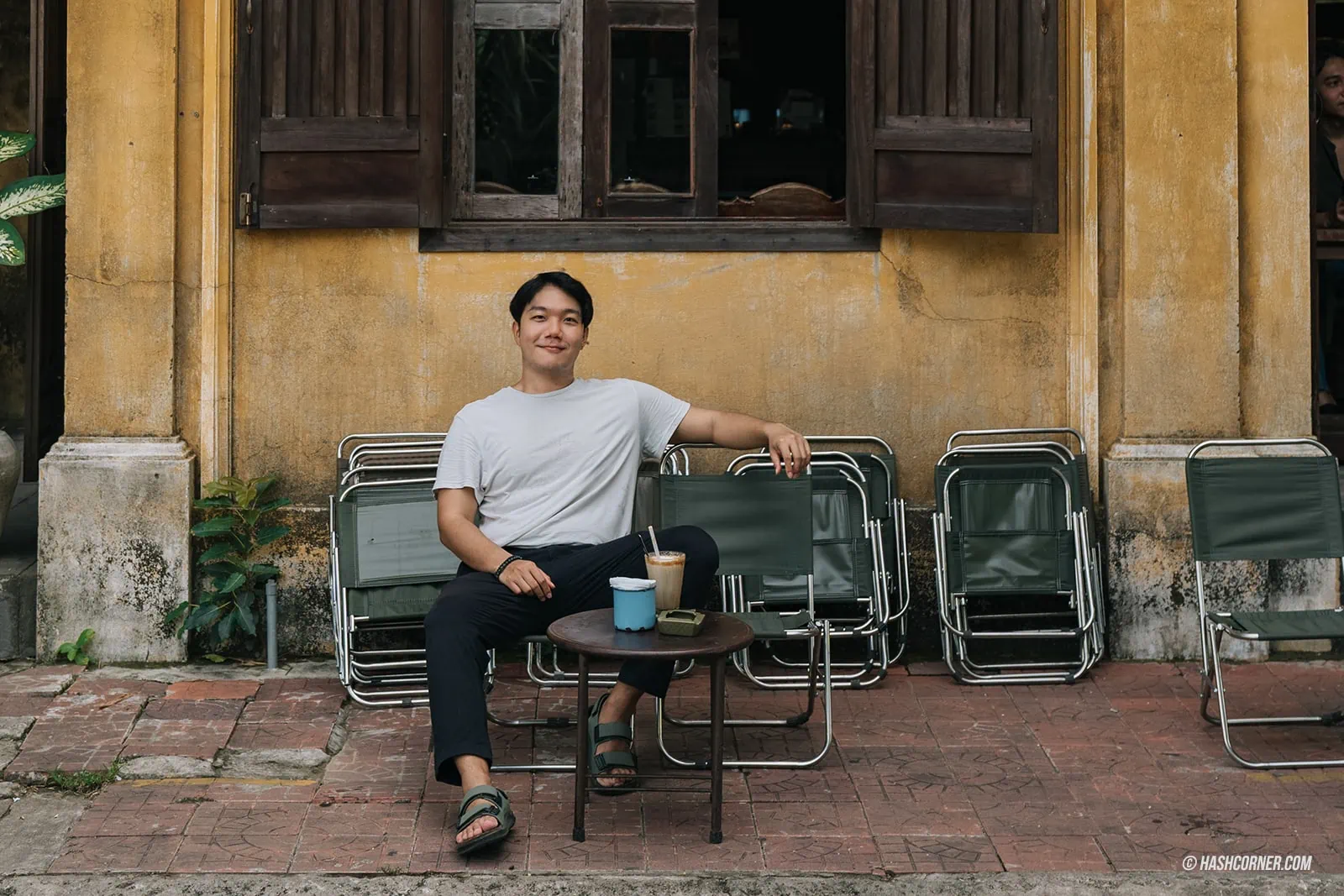
Definitely make a stop at Cong Caphe if you’re a coffee aficionado. Their Coconut Coffee is not only scrumptious, but it also hits the spot. For those who aren’t into coffee, fear not! You can give their coconut cocoa, coconut green tea, or coconut chocolate a try. With a diverse menu and wallet-friendly prices, you’re in for a delightful and unforgettable experience.
Japanese Covered Bridge
The Cau Temple (Chùa Cù), also known as Lai Vien Kieu, or the Japanese Covered Bridge, is one of the must-see attractions when strolling through Hoi An’s historic town. This iconic bridge, which is over 400 years old, was built in the early 17th century by Japanese merchants. It combines traditional Vietnamese architecture with a touch of Japanese flair. A pagoda was added within the bridge in 1653, and it is said that this location is popular for religious rituals.
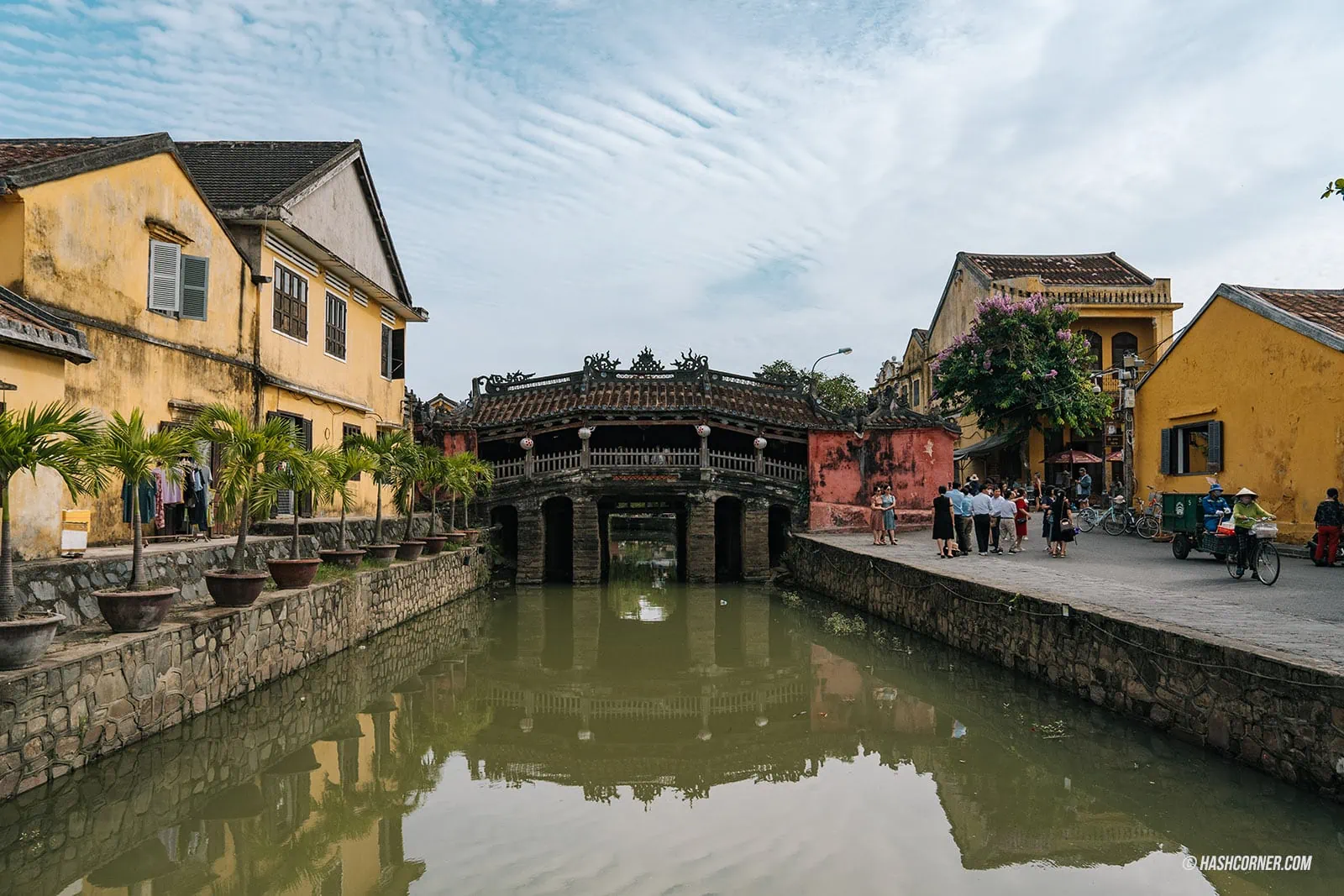
According to legend, a sea creature named Namazu (also known as Cu) has its head in India, its body in Vietnam, and its mouth in the Land of the Rising Sun (Japan). People believed that this malevolent creature caused floods and earthquakes, so they built the Cau Temple (Chùa Cầu) or Japanese Covered Bridge to symbolize a sword that could subdue the creature and prevent disasters in the area.
Despite the fact that the bridge was built by the Japanese, it features traditional Vietnamese architecture. The 18-meter-long structure is entirely made of wood, with intricate carvings in a traditional style and a ceramic tile roof with unique curves and layers. The bridge has wooden sculptures of a dog on one side and a monkey on the other, which, according to local legend, indicates that construction began in the Year of the Monkey and ended in the Year of the Dog.
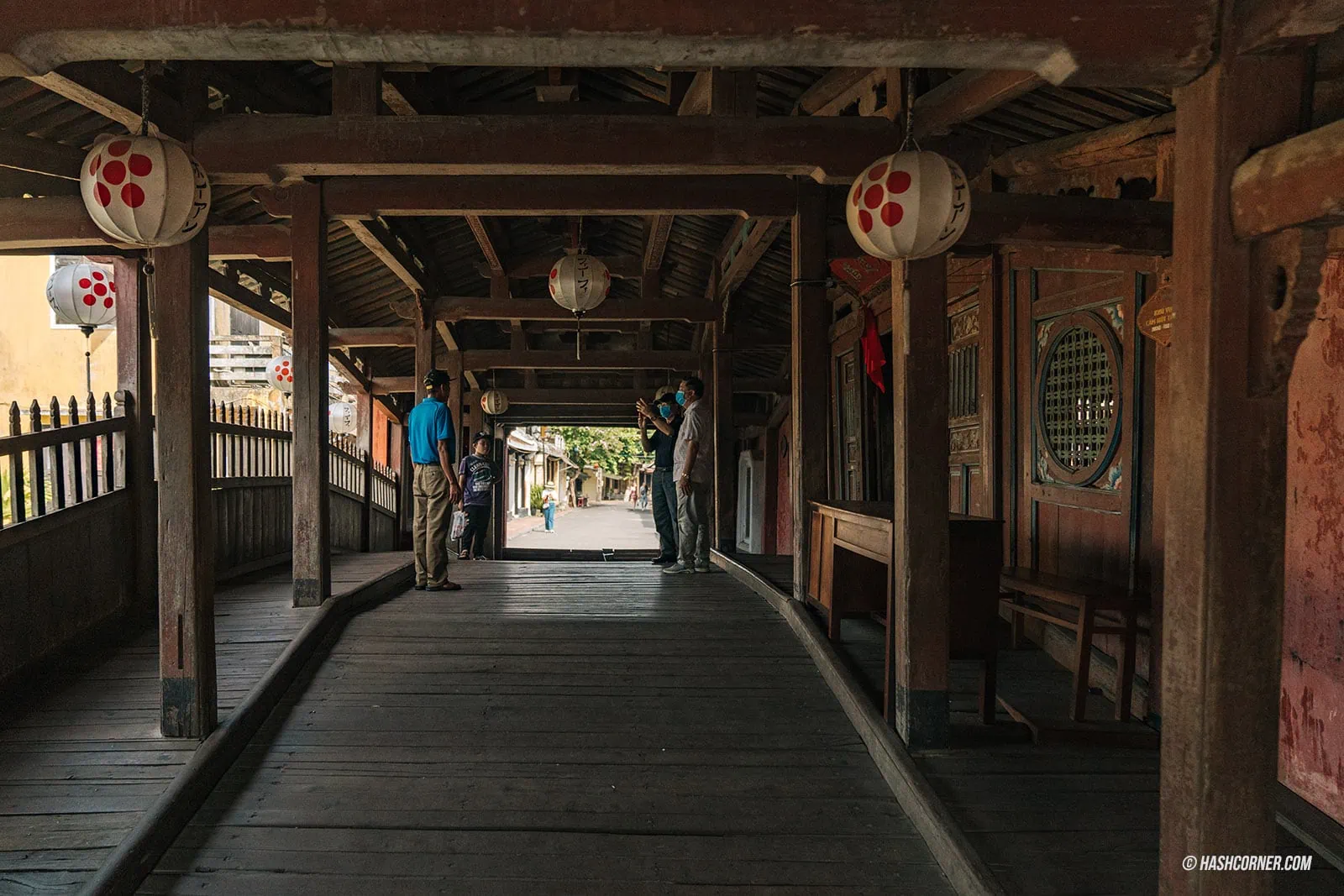
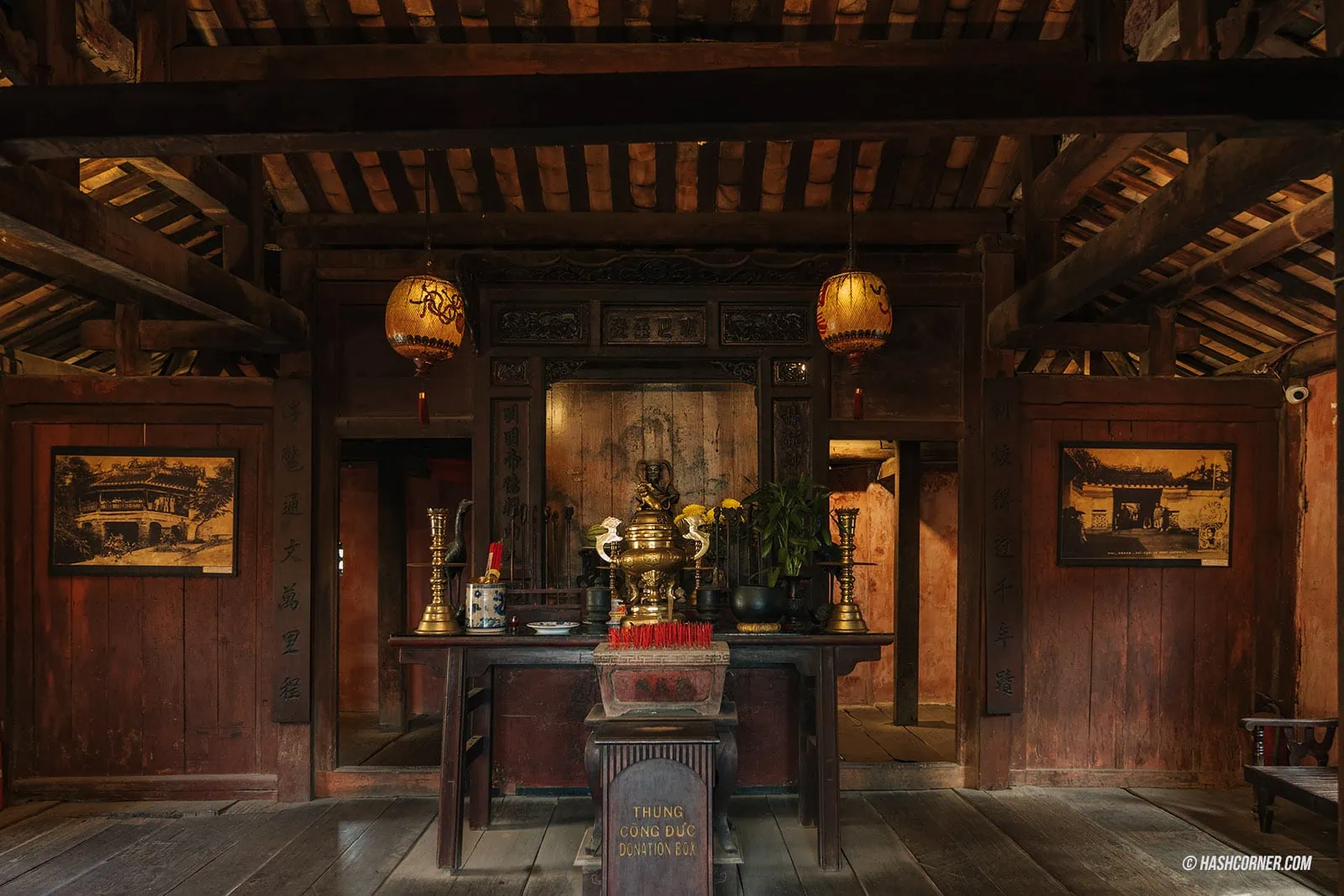
The bridge’s captivating beauty makes it a popular location for pre-wedding photos, and it’s a must-see for tourists. Personally, I enjoy the bridge’s enchanting atmosphere, which exudes Japanese charm while immersing me in authentic Vietnamese architecture. It’s unquestionably one of the best places to visit in Hoi An.
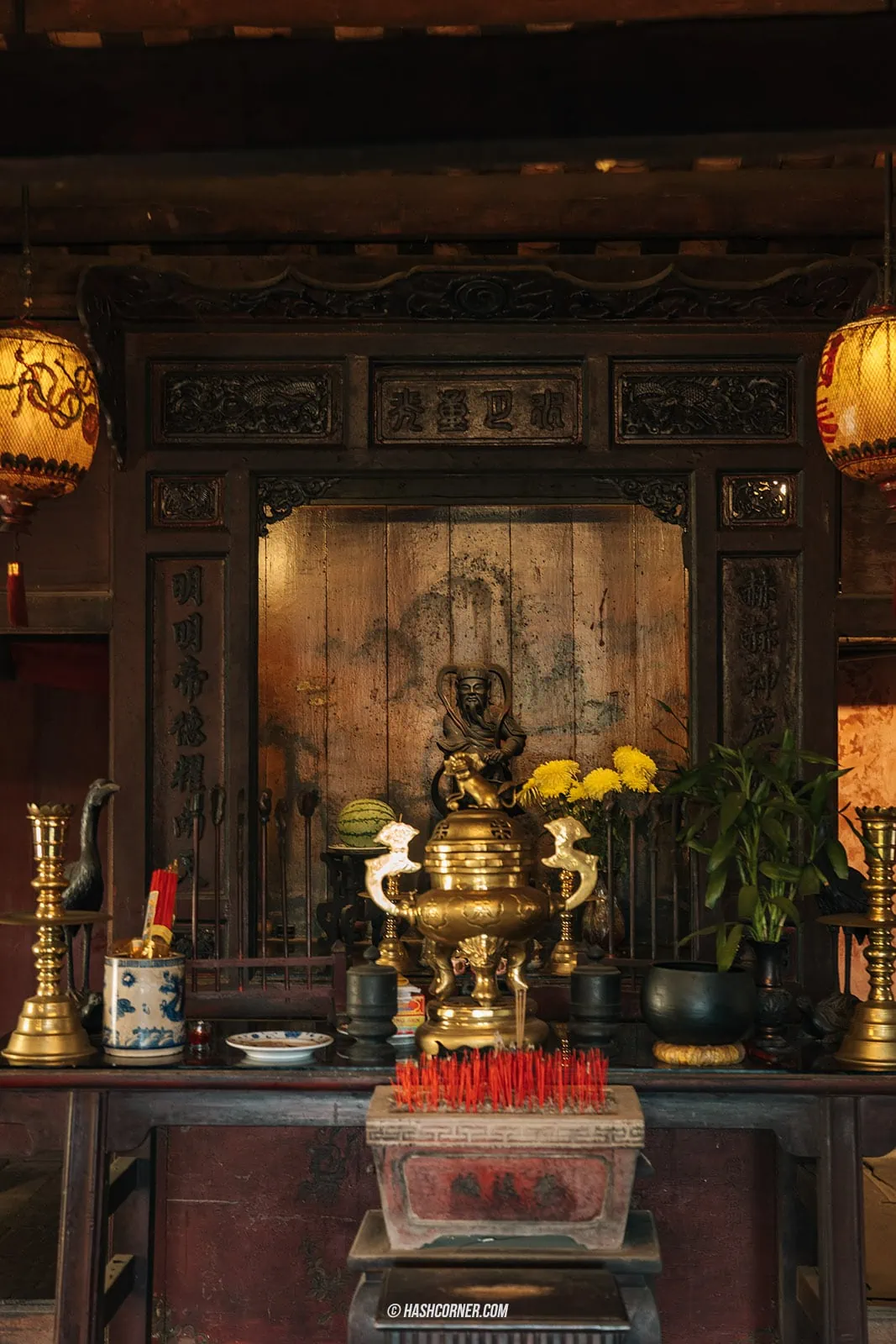
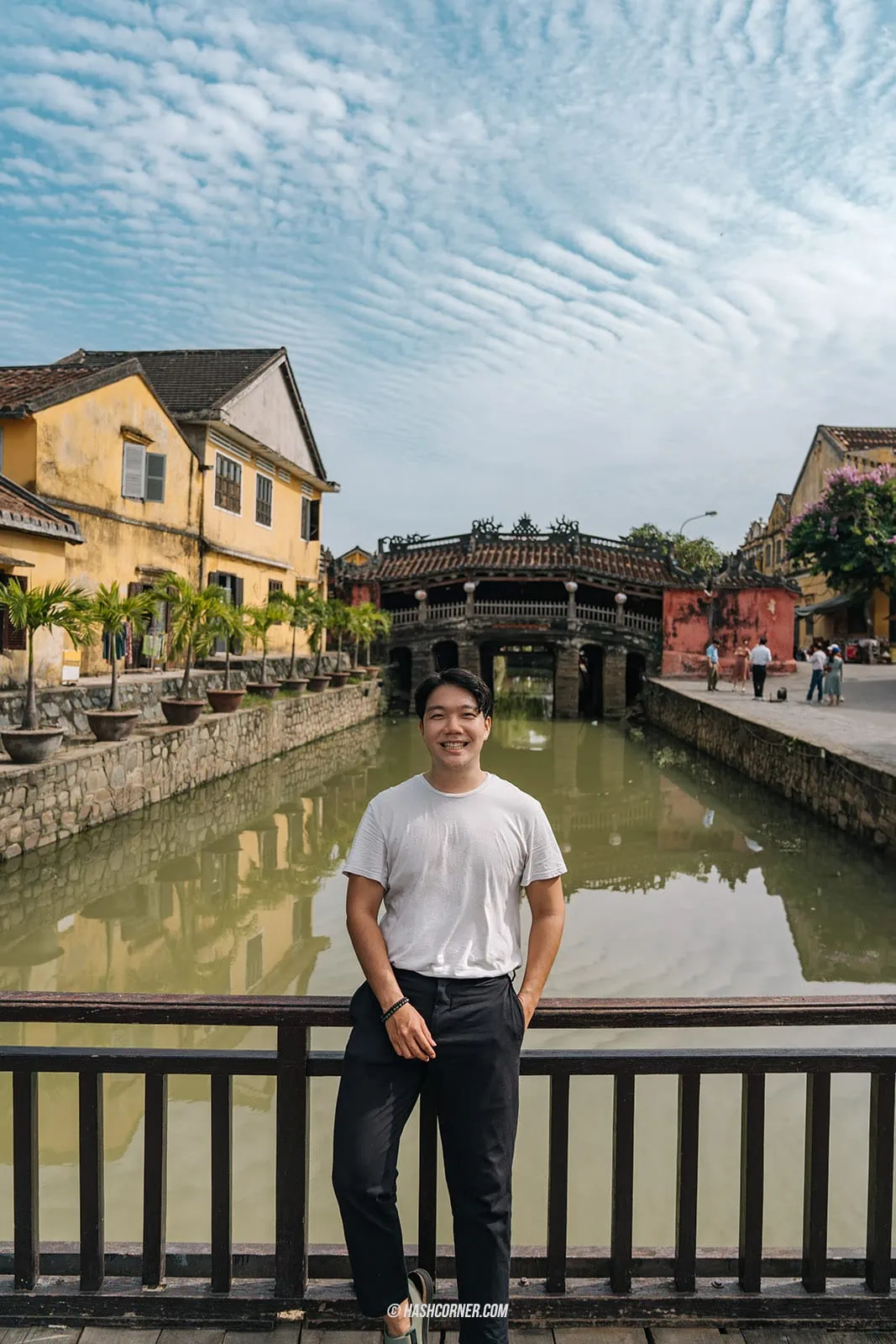
Ba Mu Temple Gate
Continuing our exploration, we visit the Ba Mu Temple Gate, an ancient temple gate that is over 400 years old. It is located in the heart of the city on Hai Ba Trung Street and is not far from the Japanese Covered Bridge, so you can easily walk there. Inside, there are three entrance gates that lead to two areas of the building dedicated to the goddess of wealth and safety, the 36 heavenly guardians (with 36 guardian statues inside), and the 12 midwives who are believed to help mothers deliver their babies safely and protect them from evil. Locals often bring their children to pray for blessings, wishing for a happy, peaceful, and healthy life.
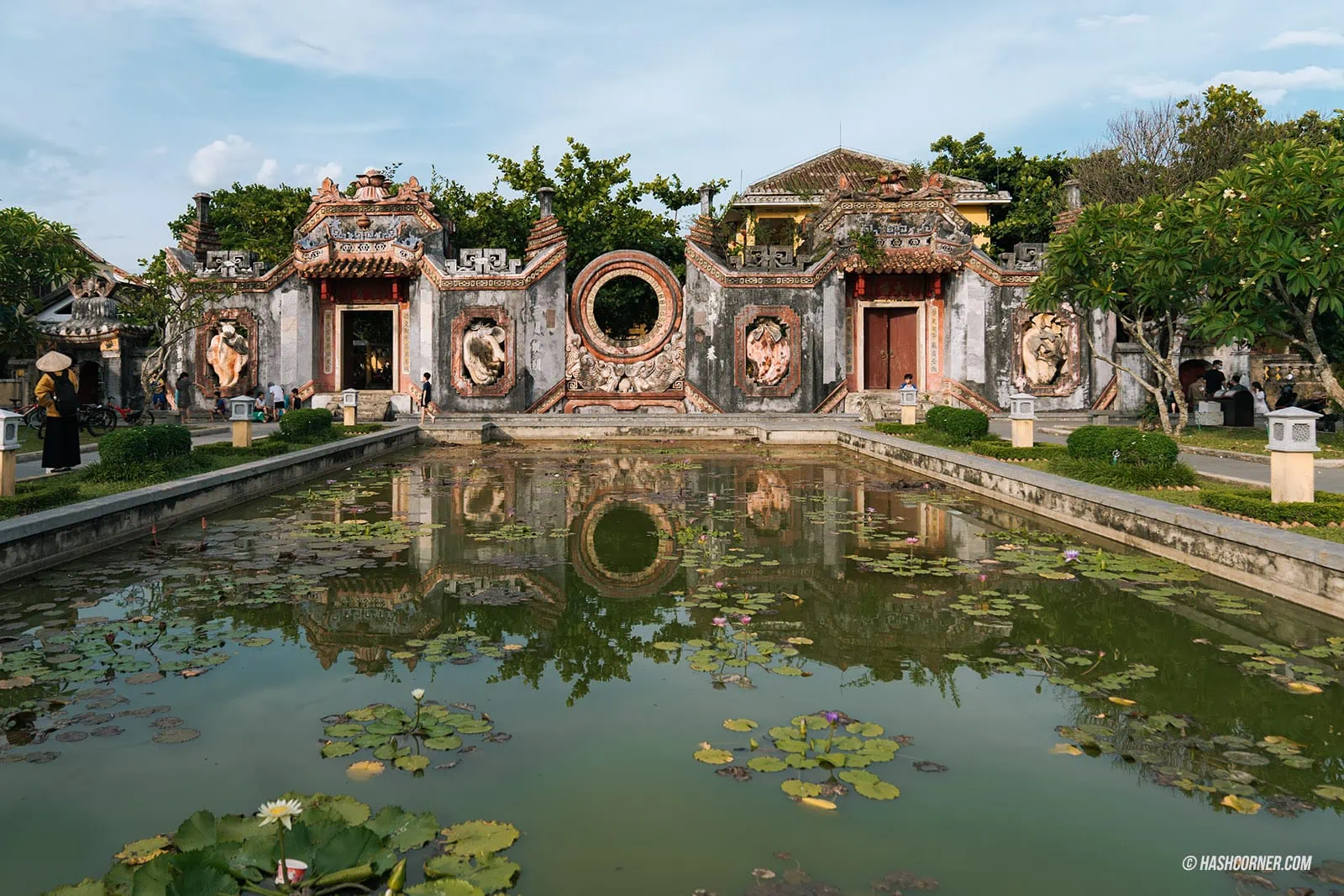
The history of the Ba Mu Temple Gate dates back to 1626, but its original location was not in the present area. Due to weather conditions and wars at the time, the temple was left with only the entrance gate, with most of the other buildings severely damaged. The government carried out extensive restoration in 1848 and 1922, spending over 5.3 billion dong (7,600,000 Thai baht) to restore the gate and create gardens, lighting, flower beds, and lawns to make it a tourist attraction once again. The grandeur of Ba Mu Temple Gate was once considered one of the most complete examples of classic Vietnamese architectural style, which can now be seen in pagodas and temples across Vietnam.
The area near the gate is a must-see photo opportunity, with lush green trees in the background that blend well with the large pond in front. When photographing the gate, you can capture its reflection in the water, which is a popular angle for visitors. I only took photos at this location during this visit and did not go inside the temple.
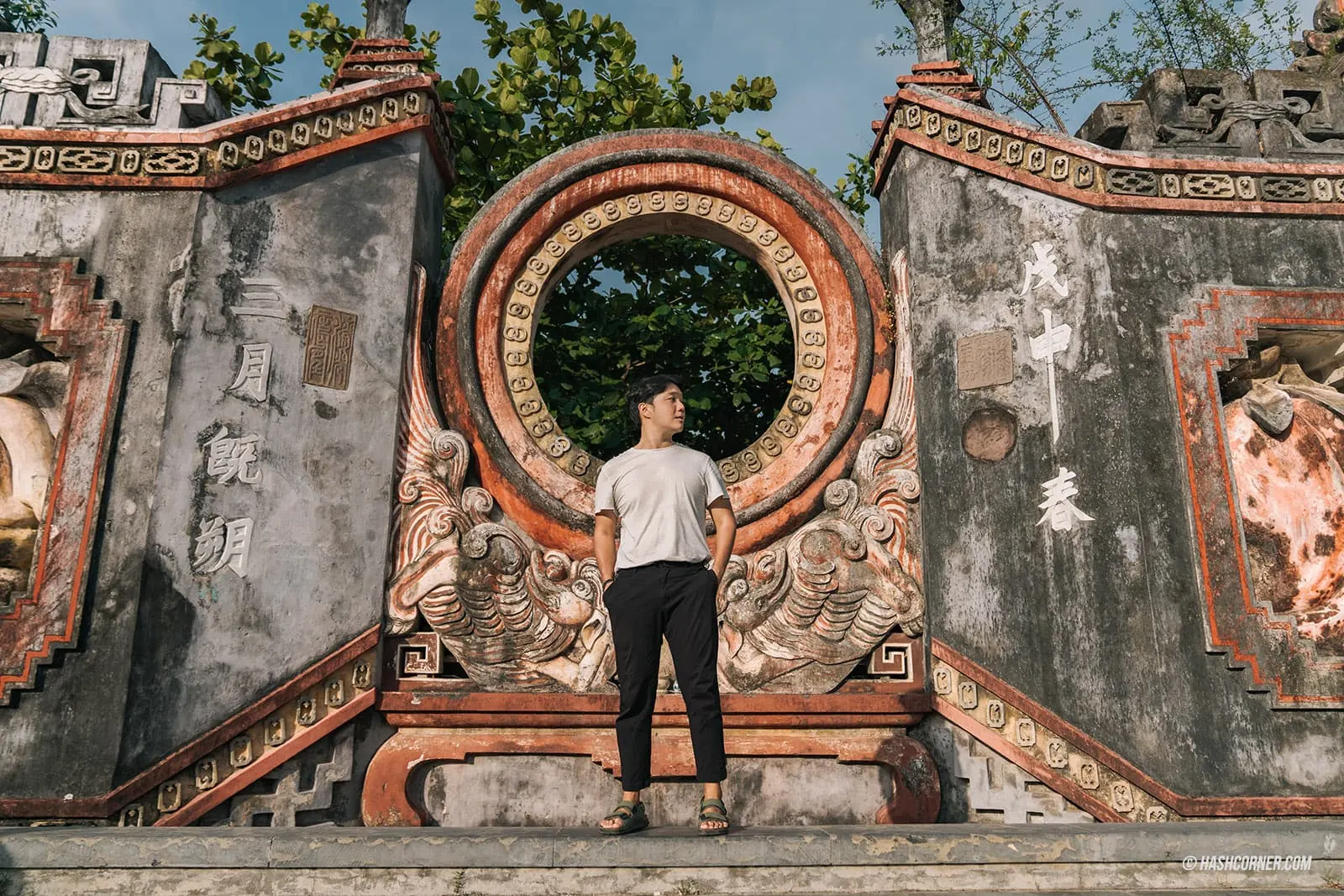
I highly recommend visiting the Ba Mu Temple Gate if you enjoy visiting historical sites and want to see ancient Vietnamese architecture. The overall vibe is charming, with an air of age and grandeur. It is an excellent opportunity to learn about and appreciate Vietnam’s ancient architecture.
92 Station Restaurant & Cafe
92 Station Restaurant & Cafe is a popular restaurant and cafe on Tran Phu Street in Hoi An’s heart. This place has a rooftop from which you can take photos of the lovely atmosphere and panoramic views of Hoi An. The restaurant specializes in authentic Vietnamese cuisine as well as Western dishes, and it also has a unique cocktail menu that can be enjoyed on the rooftop.
The interior of 92 Station Restaurant & Cafe is decorated with wooden furniture and art pieces on the walls. The lighting and traditional Vietnamese tiled floors enhance the atmosphere. This is a must-see if you want to have an authentic Vietnamese experience.
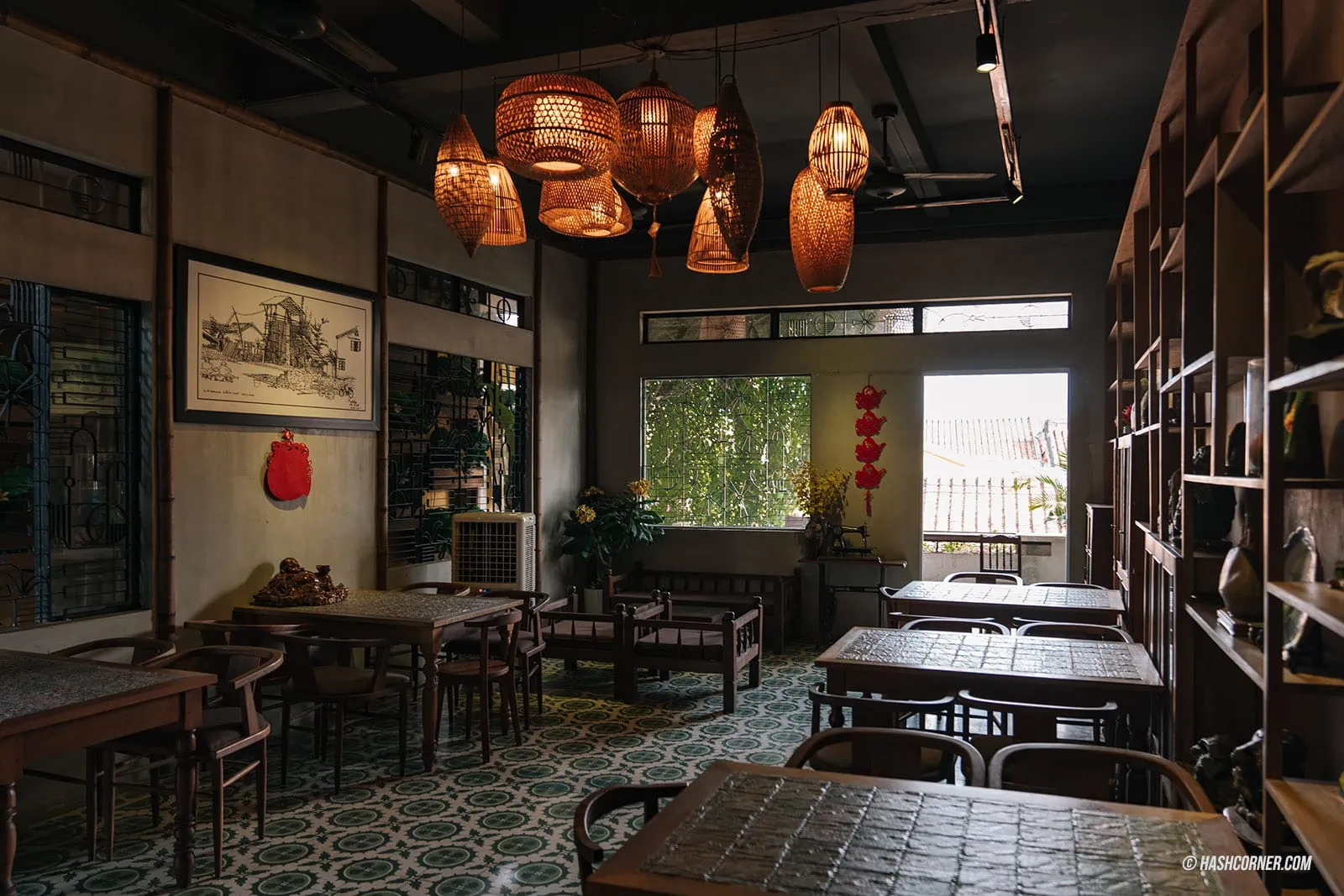
The highlight of the cafe is its rooftop, where you can enjoy unobstructed panoramic views of Hoi An. The rooftop area features a wooden pergola, reminiscent of a martial arts movie set, where drinks and signature cocktails are served. Surrounded by long wooden tables, chairs, and a variety of flowers, the atmosphere is chill and perfect for relaxation. If you stay until nighttime, you’ll witness the romantic ambiance created by the colorful lights illuminating the yellow town.
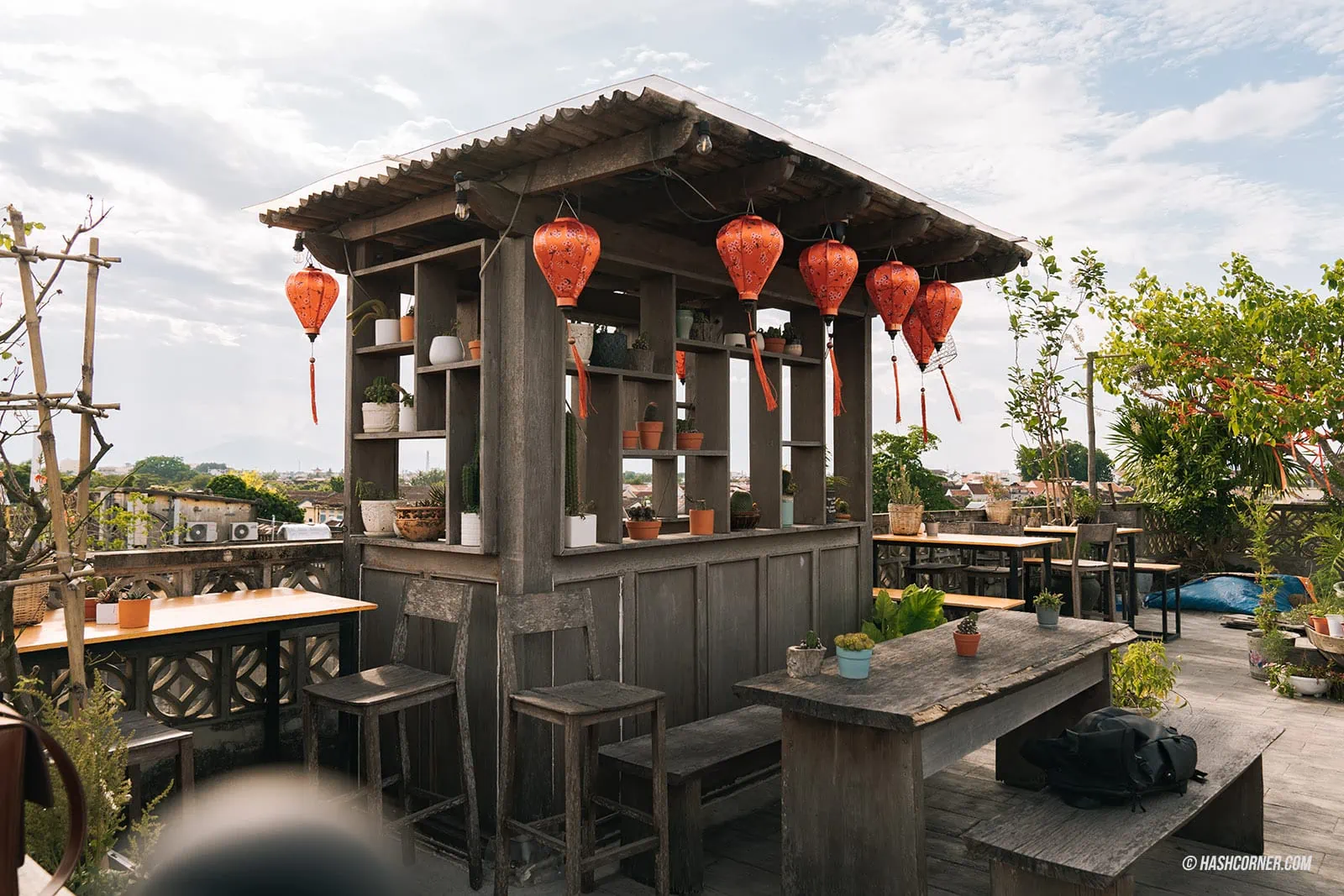
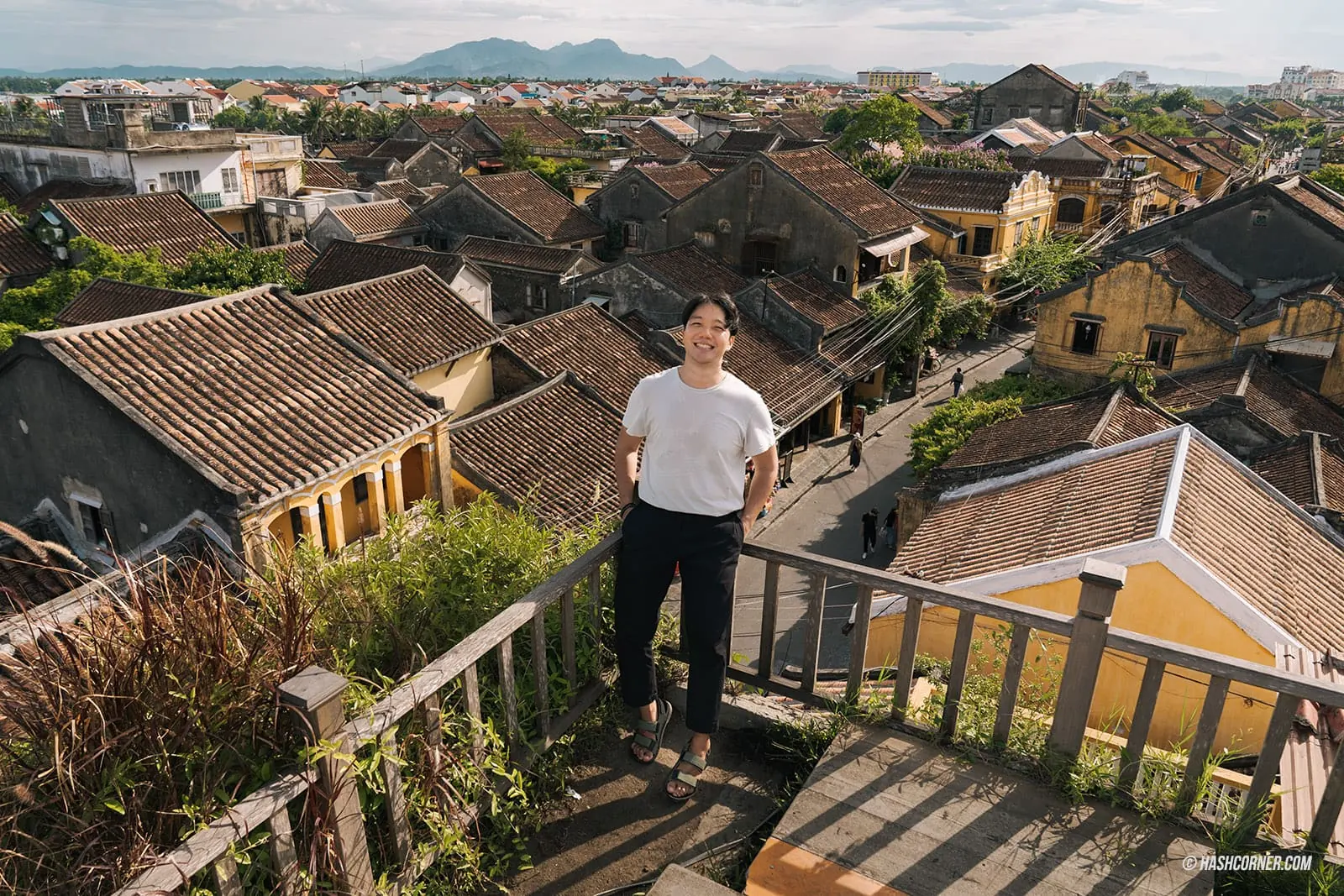
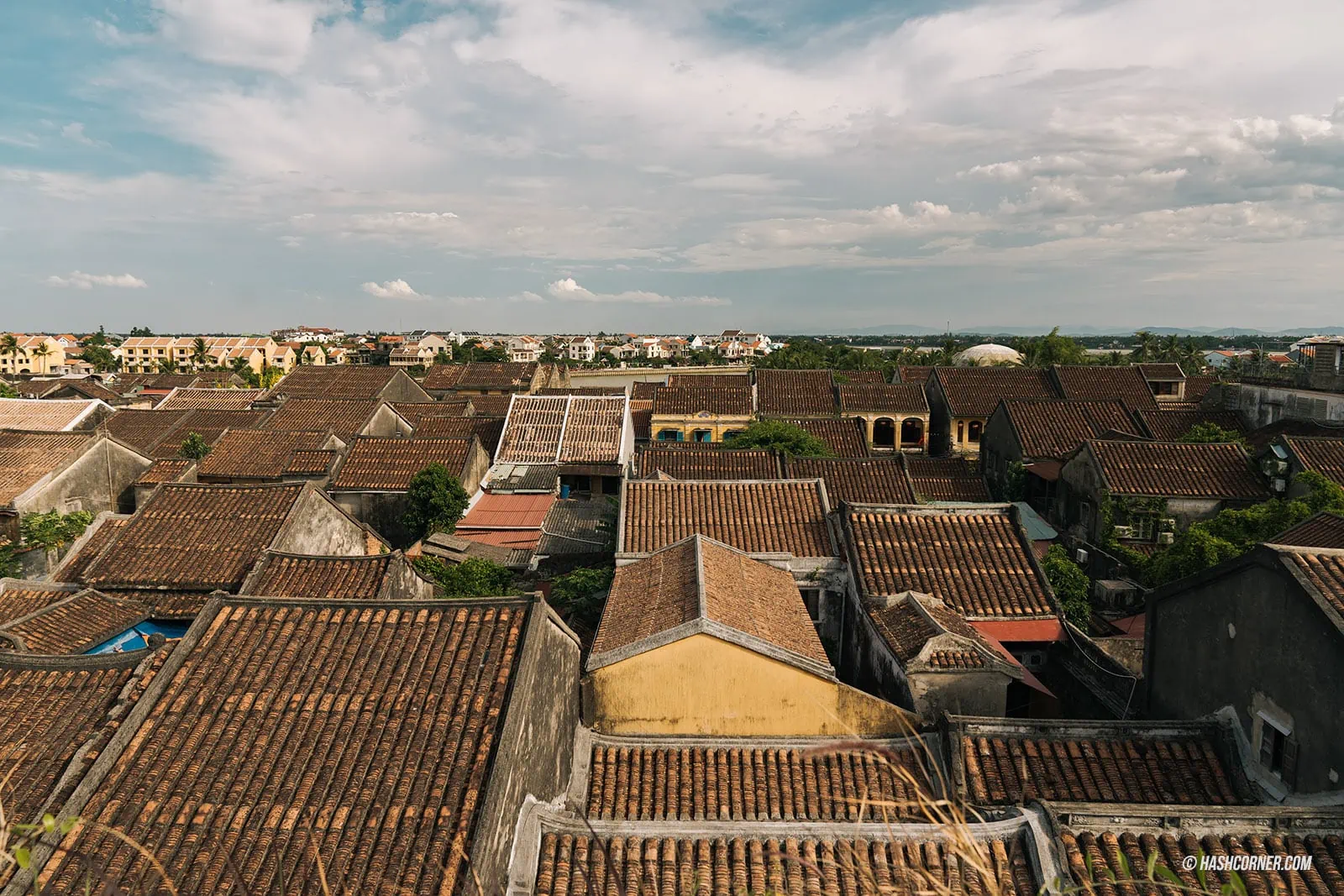
Overall, 92 Station Restaurant & Cafe is also a nice place with a fantastic ambiance, genuine Vietnamese flair, and a rooftop vista that rivals even Faifo Coffee, which we had previously visited. This cafe is a must-see if you want to truly appreciate the beauty of Hoi An. It’s worth stopping by for the exceptional rooftop experience alone, as well as the reasonably priced food and beverages.
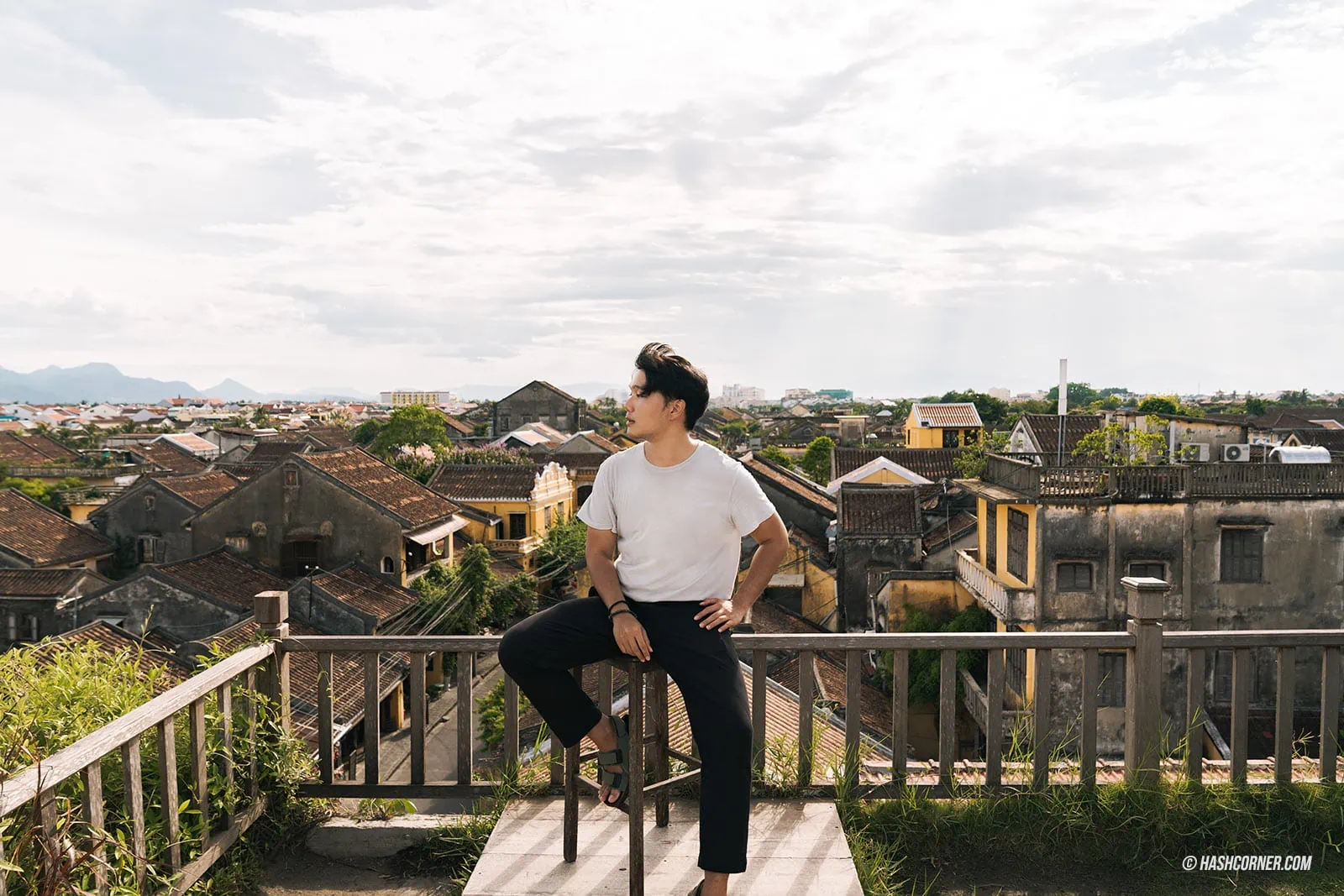
Hoi An’s Confucius Temple
The Hoi An’s Confucius Temple is another significant location that pays tribute to the pursuit of knowledge. Constructed in 1961, the temple aims to educate future generations about local customs and education. Over the years, the temple’s condition deteriorated, but a restoration project in 2005 brought it back to its former glory.
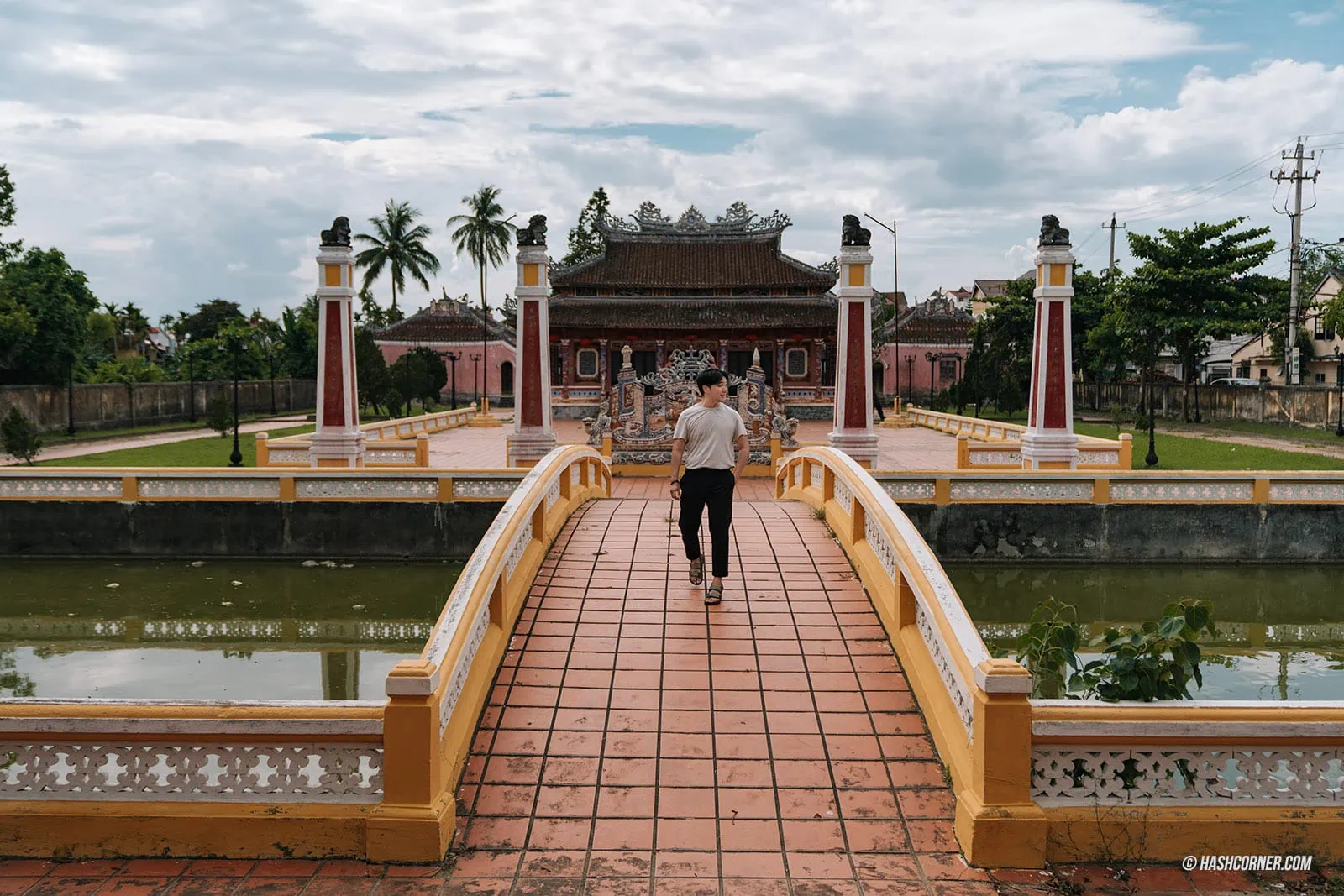
To access the main temple structure, you’ll first walk over a charming half-moon bridge that stretches across a serene lotus pond. After crossing the bridge, you’ll notice two towering pillars and an intricately designed ceramic platform that houses the mythical creature ‘Long ma phi ha do.’ Venturing further, you’ll come across the primary wooden building, featuring a traditional Yin-Yang tiled roof adorned with exquisite artwork. The entrance boasts three doors, each showcasing engraved names of holy relics and teachings of Confucius.
Within the main hall, a grand altar is dedicated to Confucius, the renowned philosopher, and politician born in 551 BC during the Spring and Autumn period. Known for his imposing height of over 2 meters and legendary strength, Confucius is well-represented in this temple. The altar area displays a striking painting on the wall, enveloped by Chinese characters and decorations inspired by Chinese aesthetics. Although it’s uncertain what specific blessings visitors seek at the Confucius Temple, education is likely a common theme.
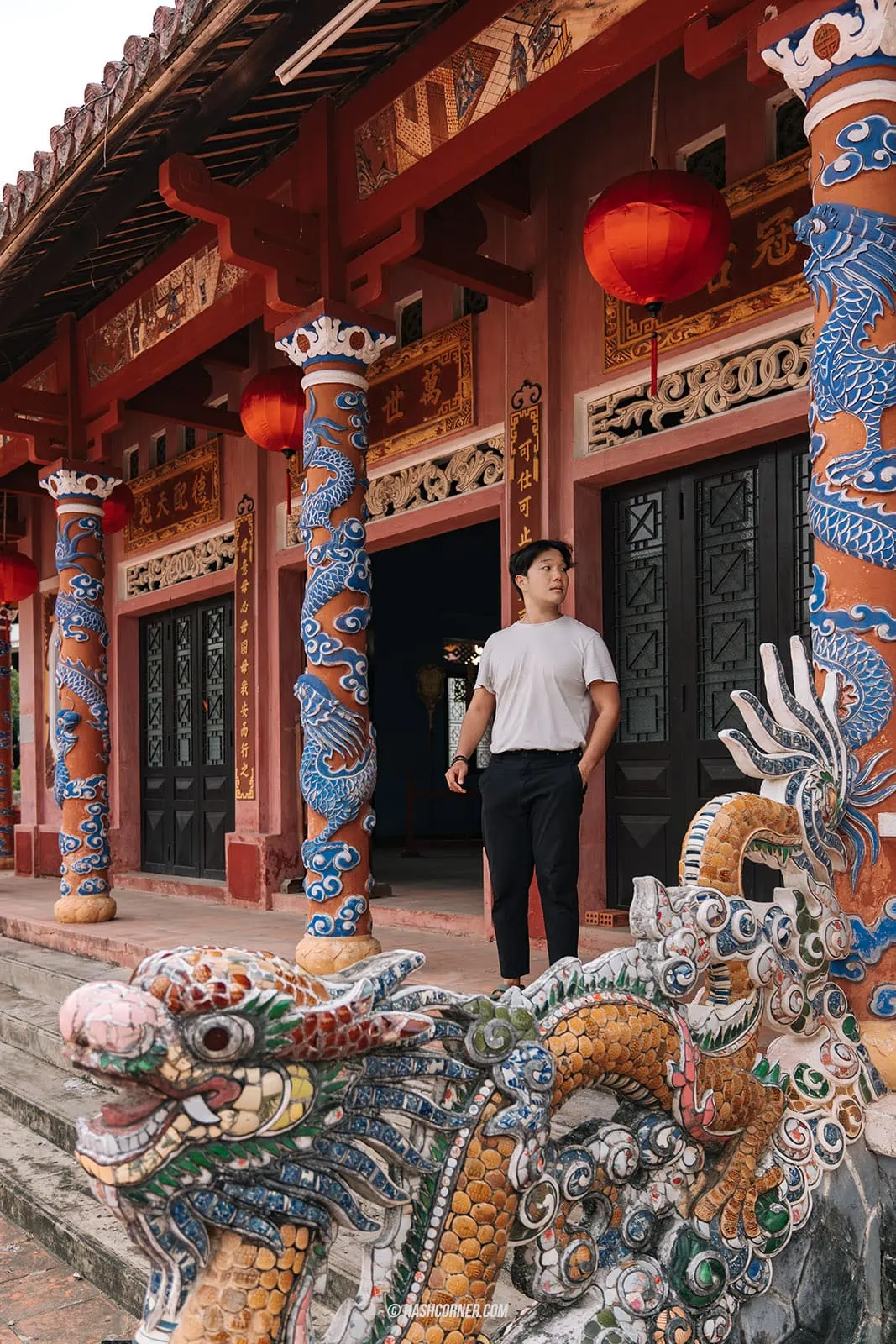
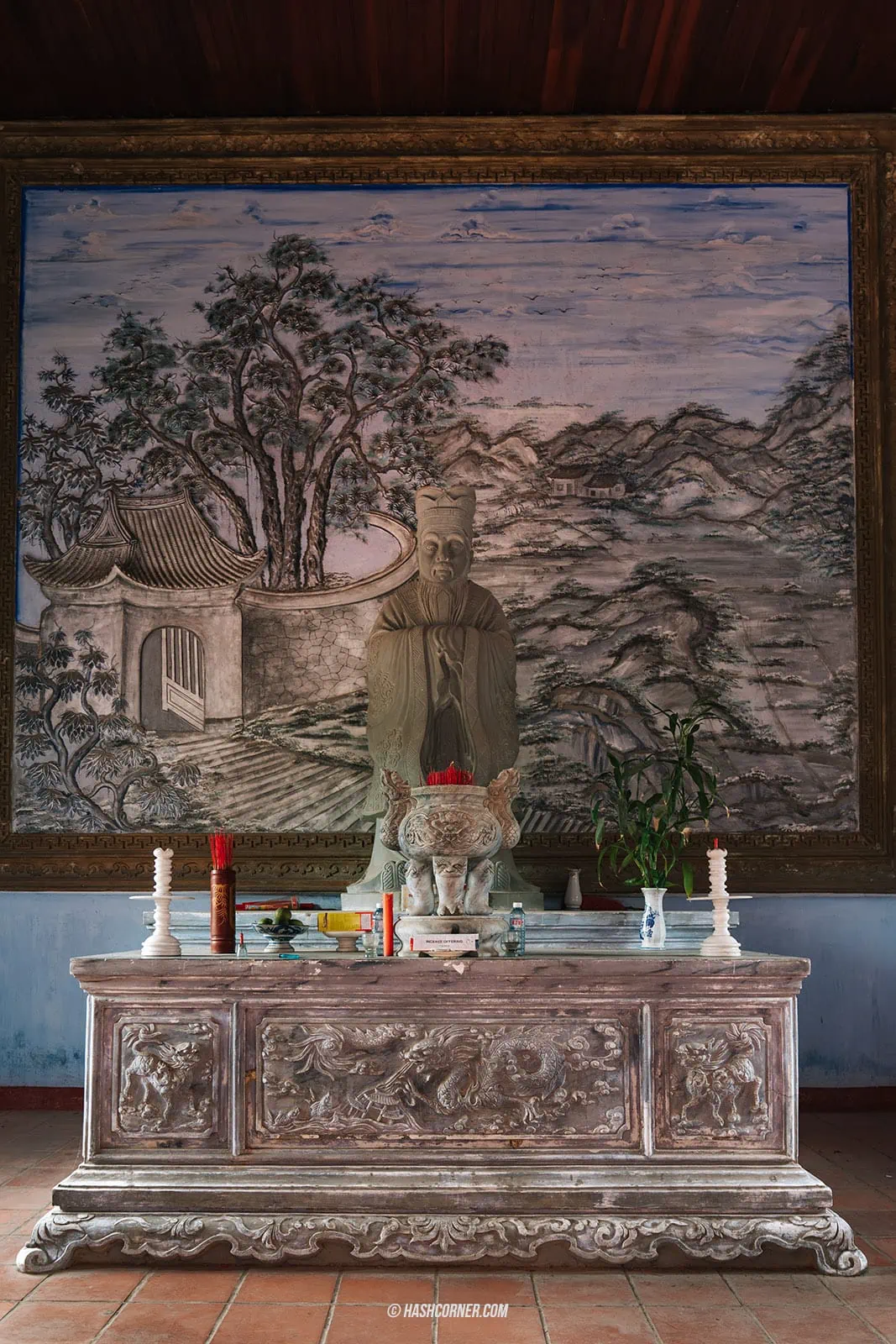
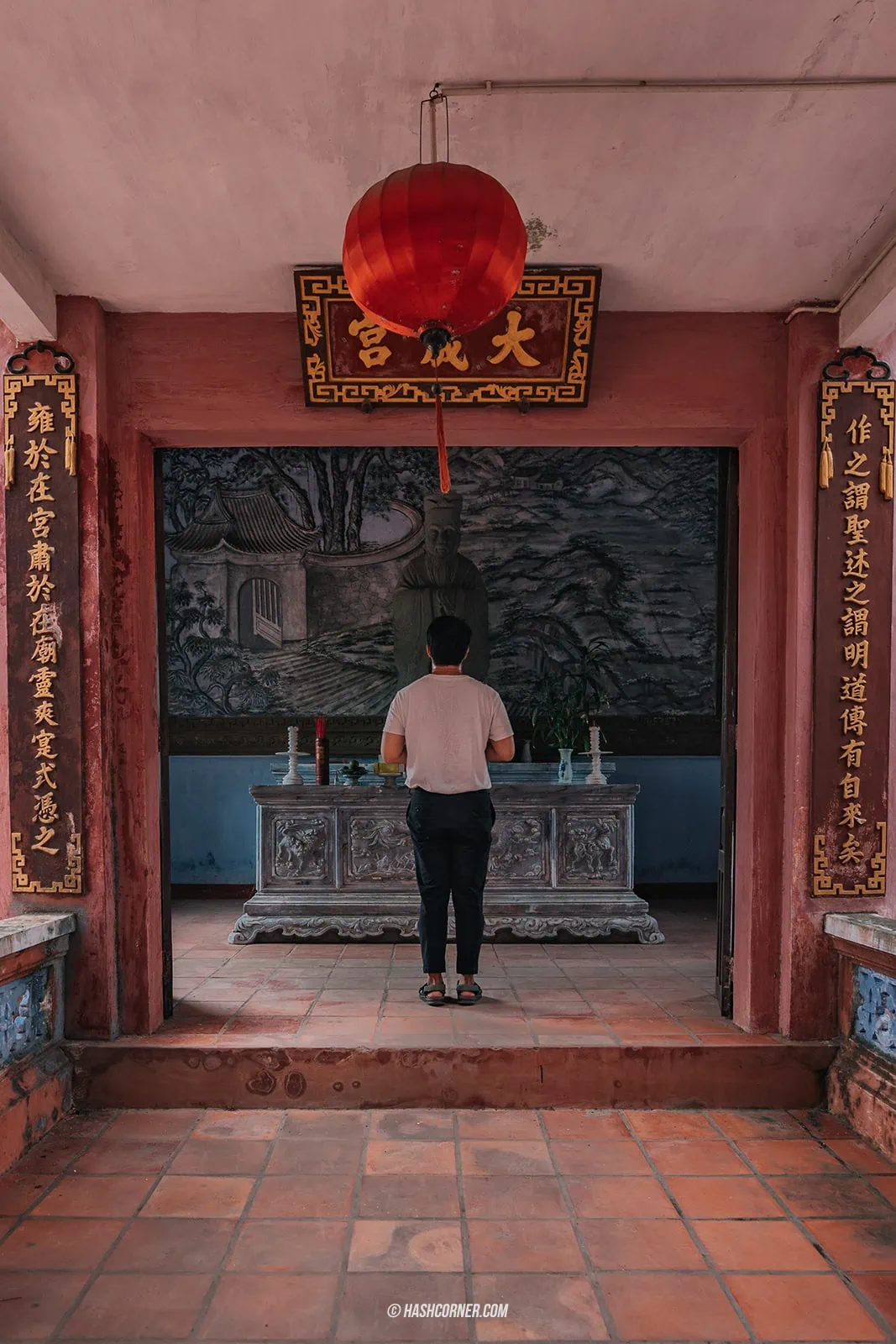
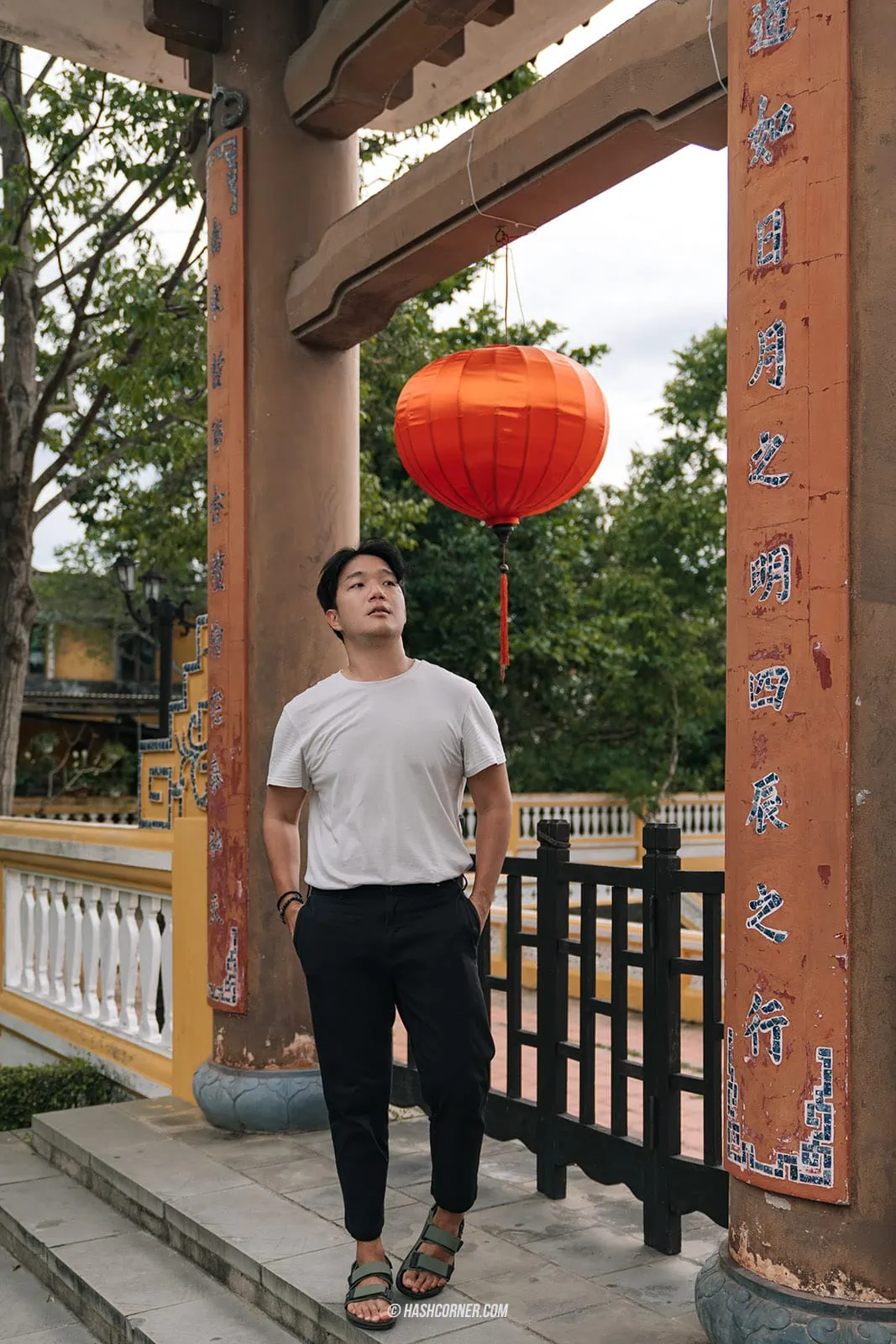
In 2013, the temple’s remarkable architecture and historical value earned it the designation of a provincial heritage site by the Quang Nam Committee. For those who appreciate ancient landmarks or have an interest in Confucius, be sure to include this captivating temple in your travel plans!
ล่องเรือตะกร้าฮอยอัน (Hoi An Basket Boat)
The whole last activity I want to recommend is the Hoi An Basket Boat experience, which is a must-do while in Hoi An. The highlight of this activity is riding in a woven bamboo boat shaped like a half-circle with a bamboo bench in the center for passengers to sit. The basket boat ride’s allure is floating along the river amidst a vast coconut garden, where you can get a close-up look at the locals’ way of life. People will even be casting fishing nets right in front of you!
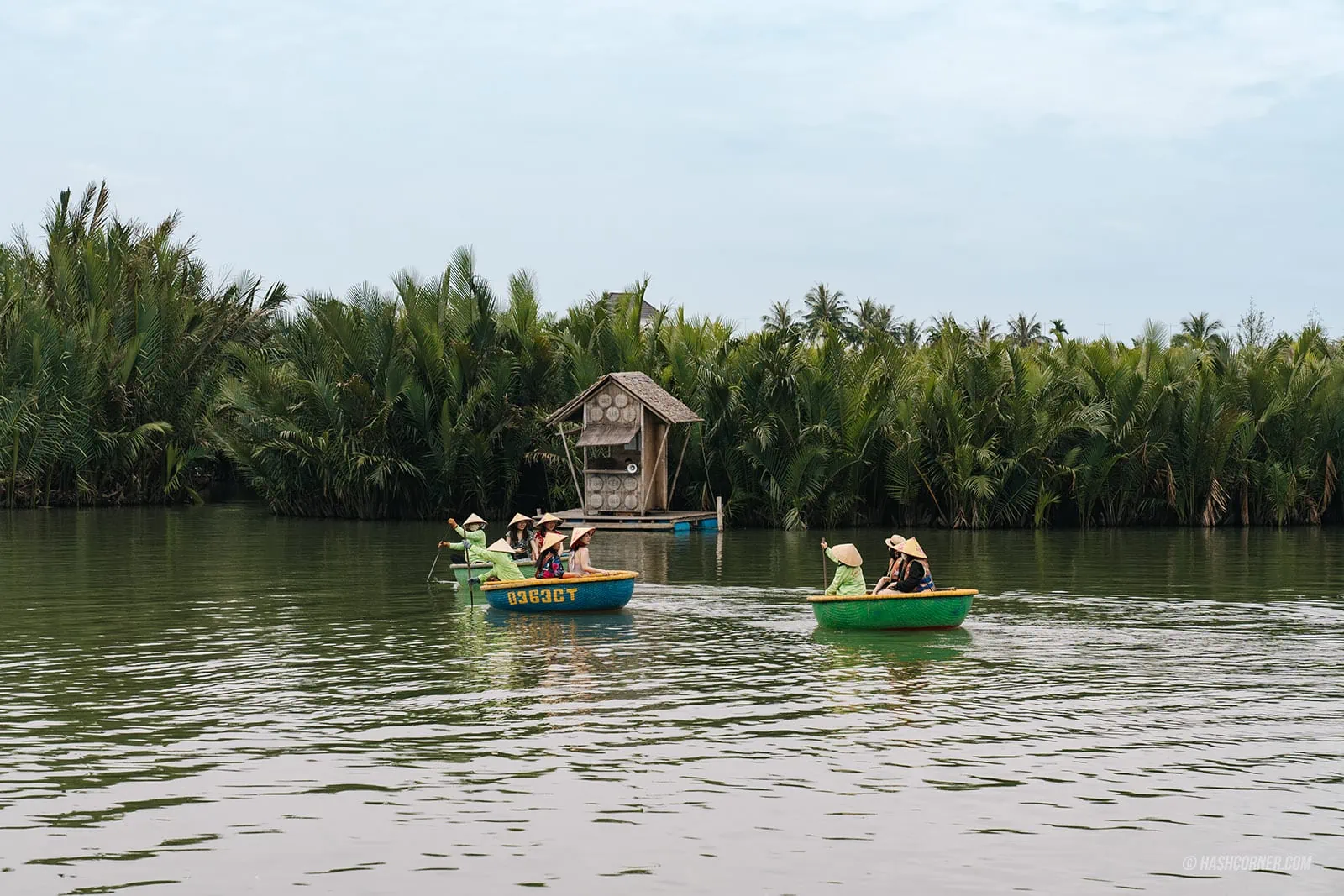
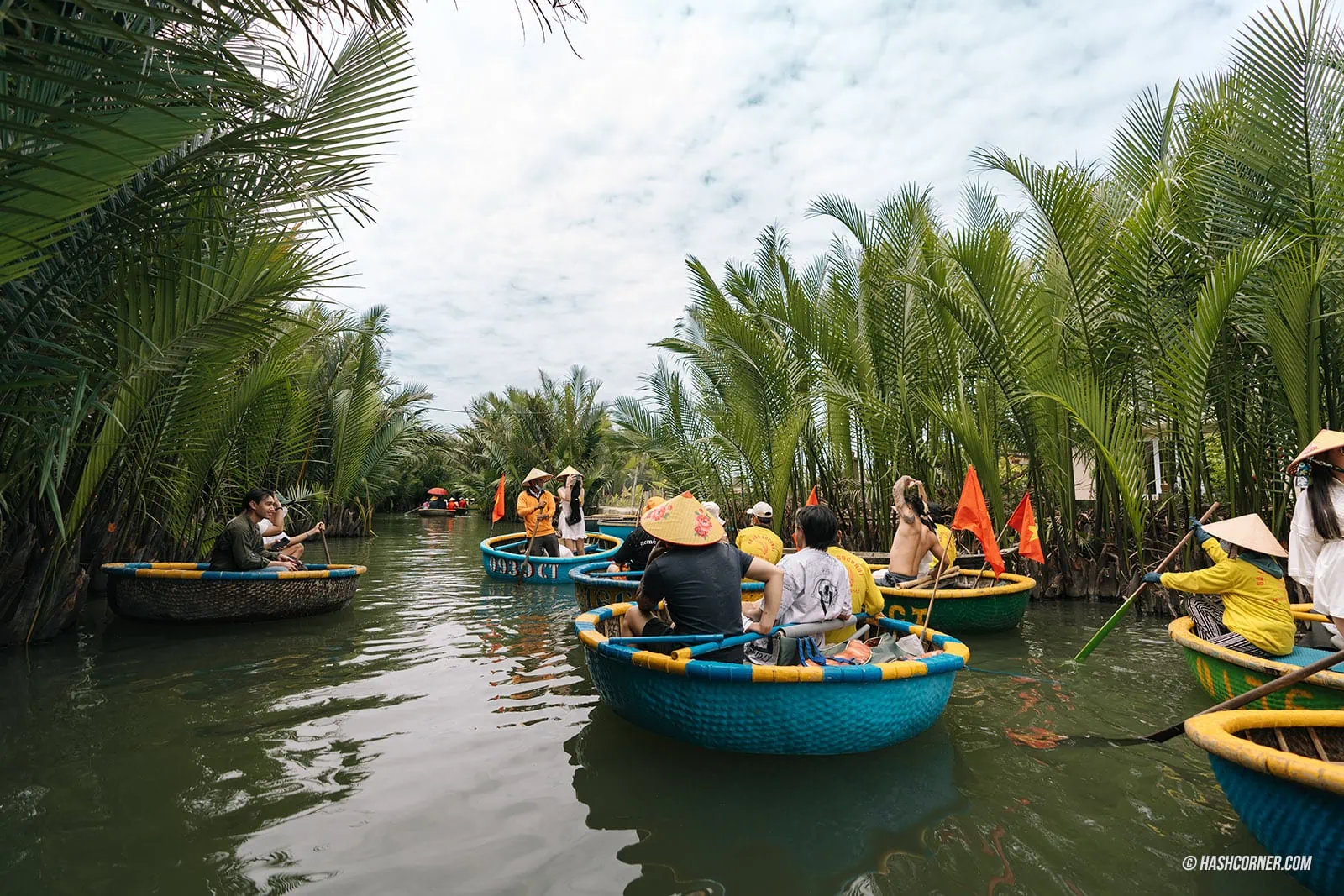
Many people may not know that using these basket boats is a part of Vietnamese culture and a unique feature of this central region. Basket boats date to the 19th century, when Vietnam was a French colony. As the French taxed everything, including boats, fishermen invented small basket boats to avoid or minimize tax payments. These boats’ round shape provides flexibility and utility, and their small size enables them to navigate narrow waterways, making it easier to find food.
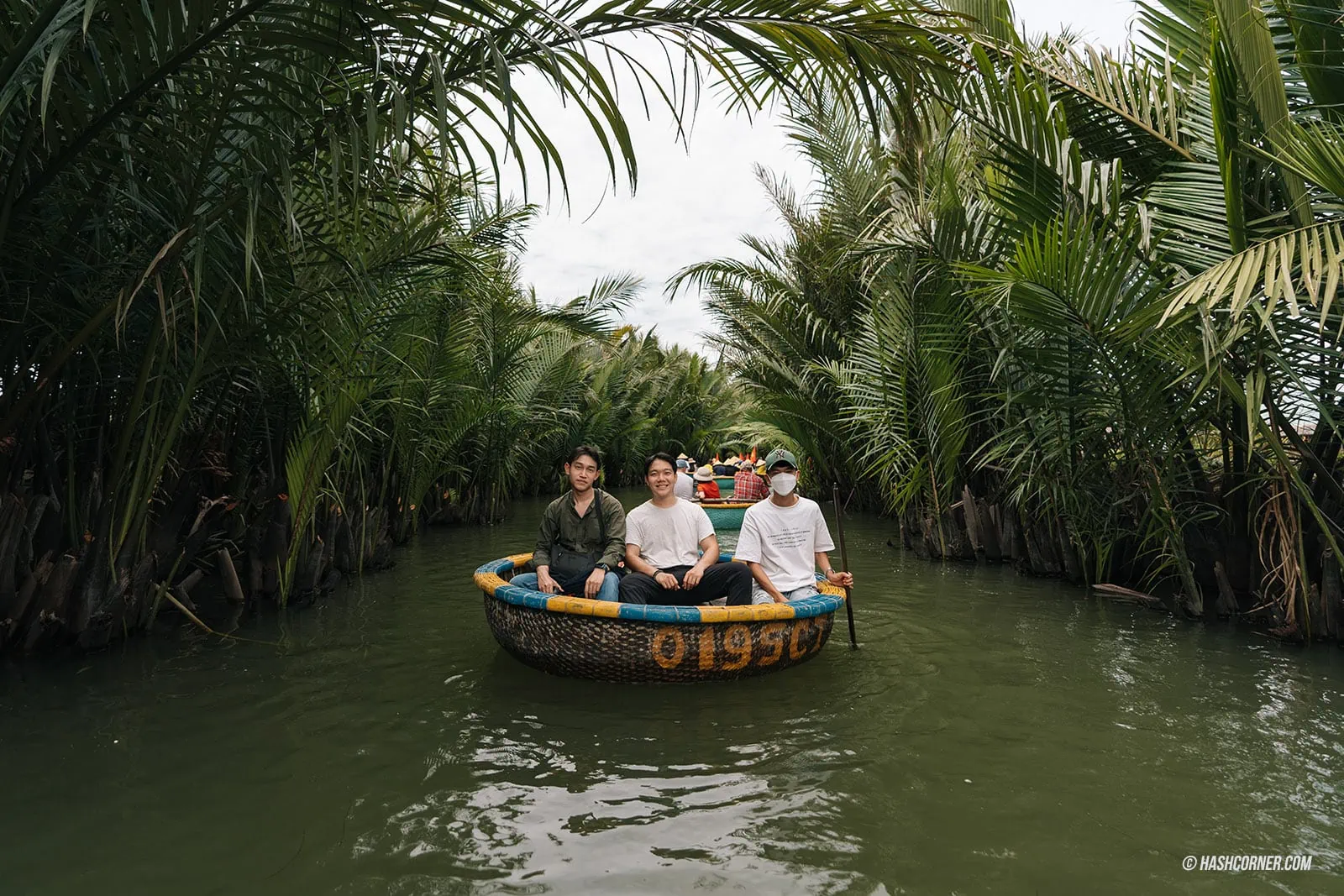
🧺✨ To experience the Hoi An basket boat tour, you can book a tour (including transportation) through your hotel, with prices varying depending on the hotel. If you want a fixed price, you can purchase the basket boat tour from Klook or KKday, with prices ranging from about 120,000 VND per person. As the location is about 20 minutes away from Hoi An’s old town, the most convenient way to get there is by using Grab to reach the boat pier. > Buy Hoi An Basket Boat Ticket or Tour [through Klook] [through KKday]
The boat ride lasts about 40 minutes, during which you will paddle along a natural path through the coconut garden. The fun part of the basket boat ride is that at various points along the way, you’ll encounter Vietnamese people showing off their impressive boat spinning skills by rotating the boat in circles at high speed. As a tourist, you can even sit in the boat with the person spinning it, but be warned that the experience can be dizzying! My friend tried it and felt a little nauseous afterward, but it was all in good fun!

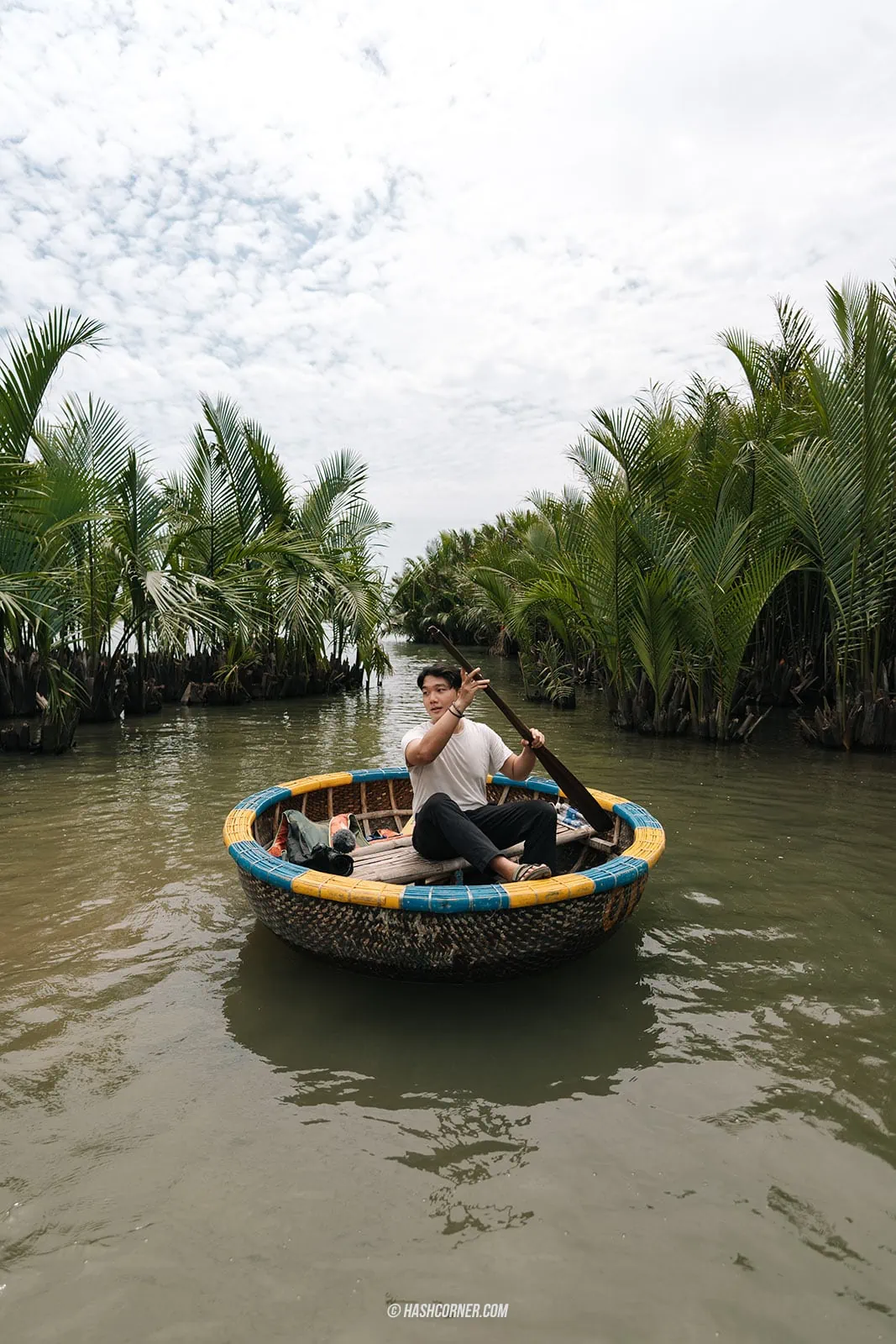
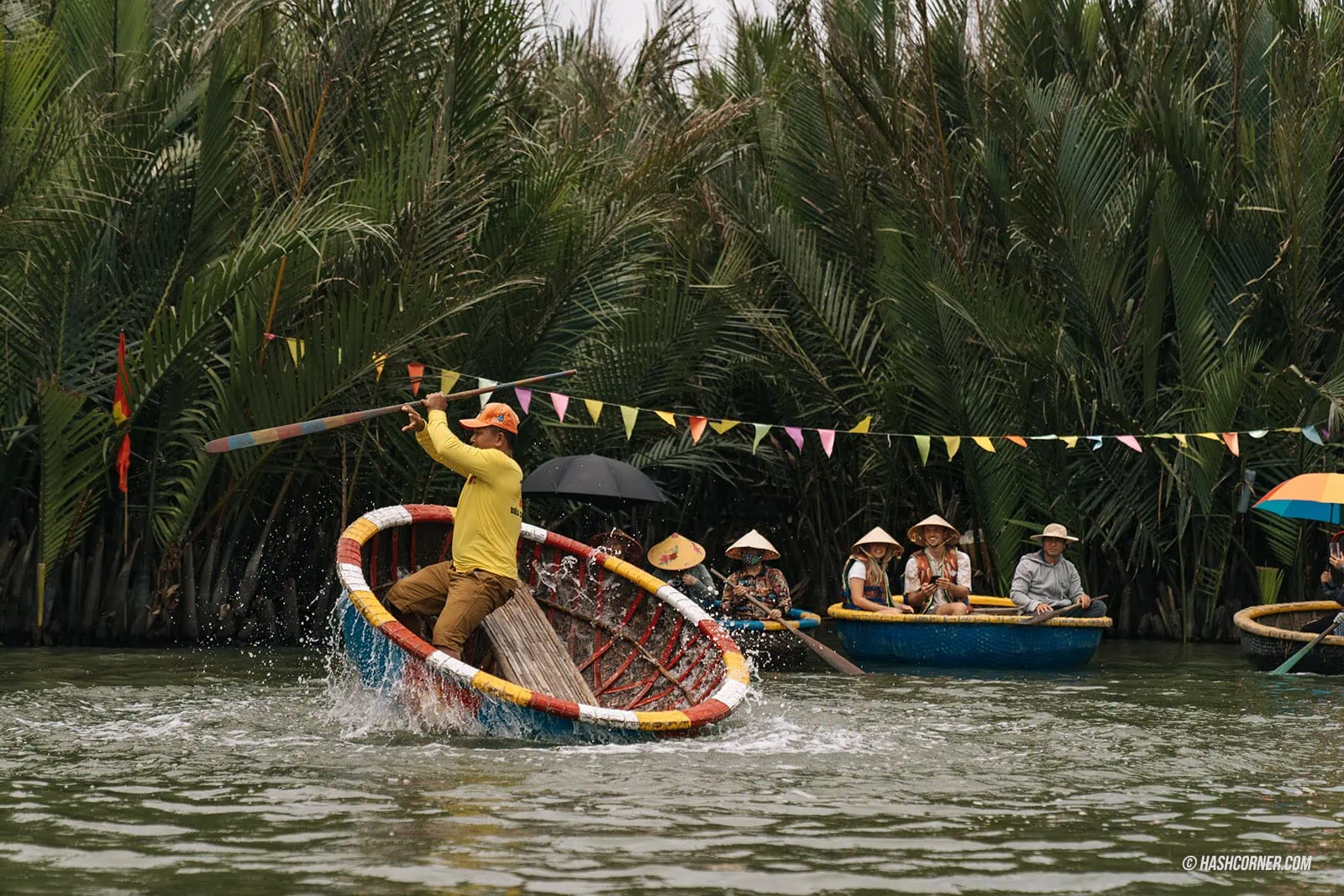 [/su_row]
[/su_row]As we continued down the river, we were in for a delightful surprise – a floating stage where locals gathered to sing, as if attending a concert on water. They were incredibly passionate, and we tourists could even disembark from our boats and join them on stage. Microphones, speakers, and a sizeable audience – the whole experience was hilariously entertaining, and I simply loved it! Hahaha!

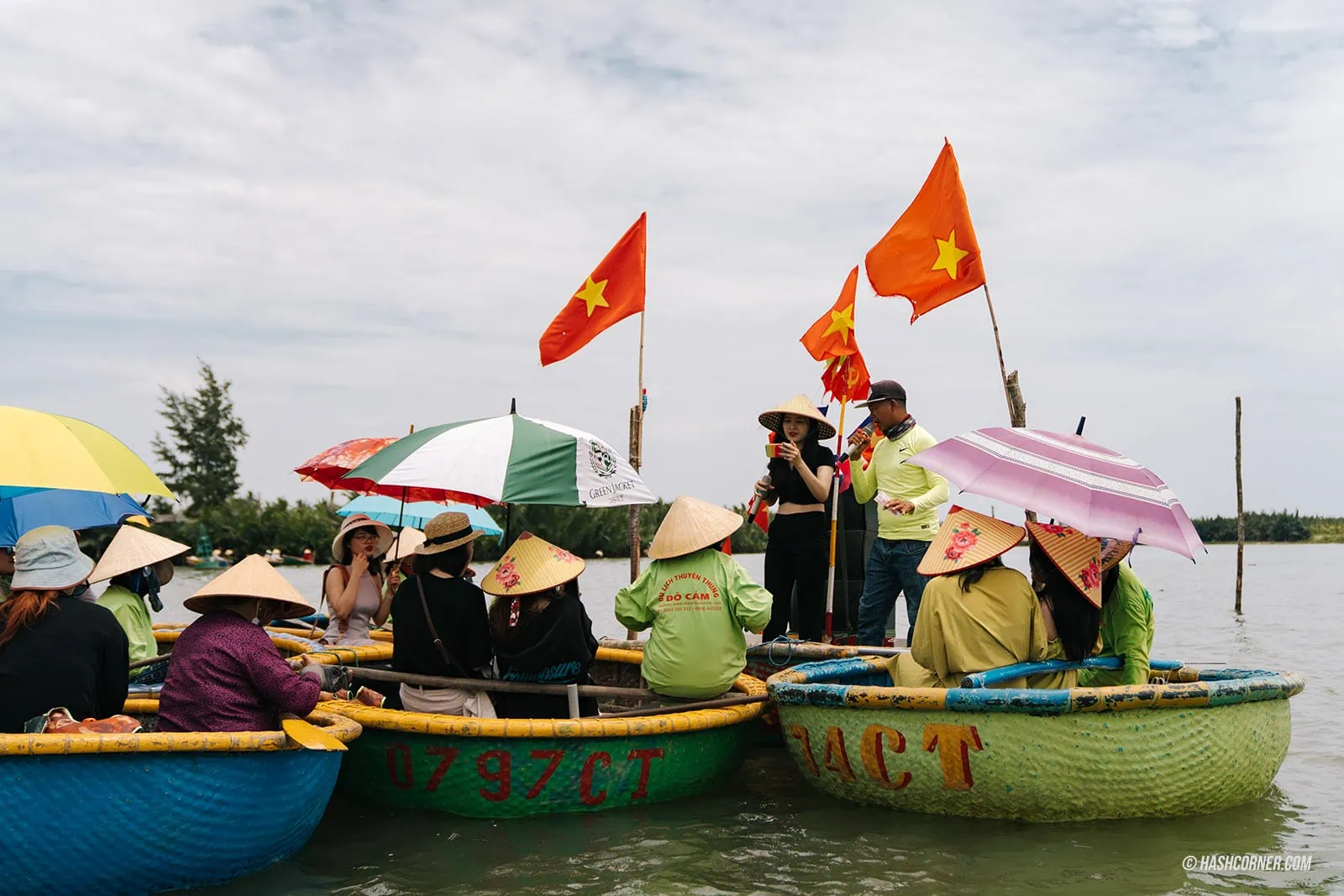
For those who appreciate adventure activities, natural beauty, and a glimpse into the amusing aspects of Vietnamese life, the Hoi An basket boat experience is an absolute must-try. Having personally taken part in the boat ride and observing everything, it truly was an extraordinary adventure, from the impromptu water concert and the thrilling boat spinning show, to the local fishermen demonstrating their net-casting skills. The most captivating part was witnessing the locals’ way of life up close and personal. This activity was the perfect way to wrap up my Hoi An trip, leaving me feeling fulfilled and content. I encourage everyone to give it a go at least once – it’s honestly a lot of fun!
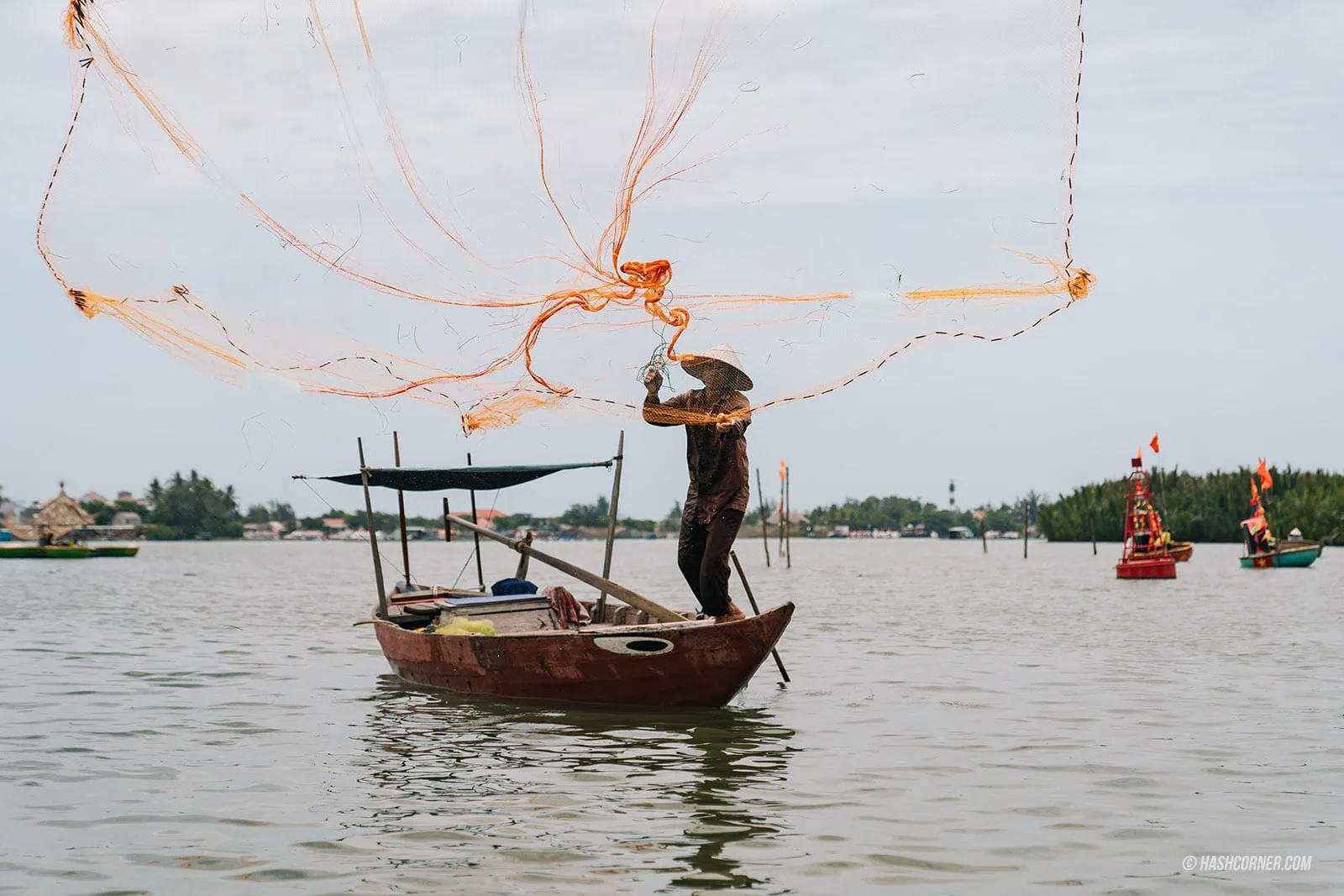
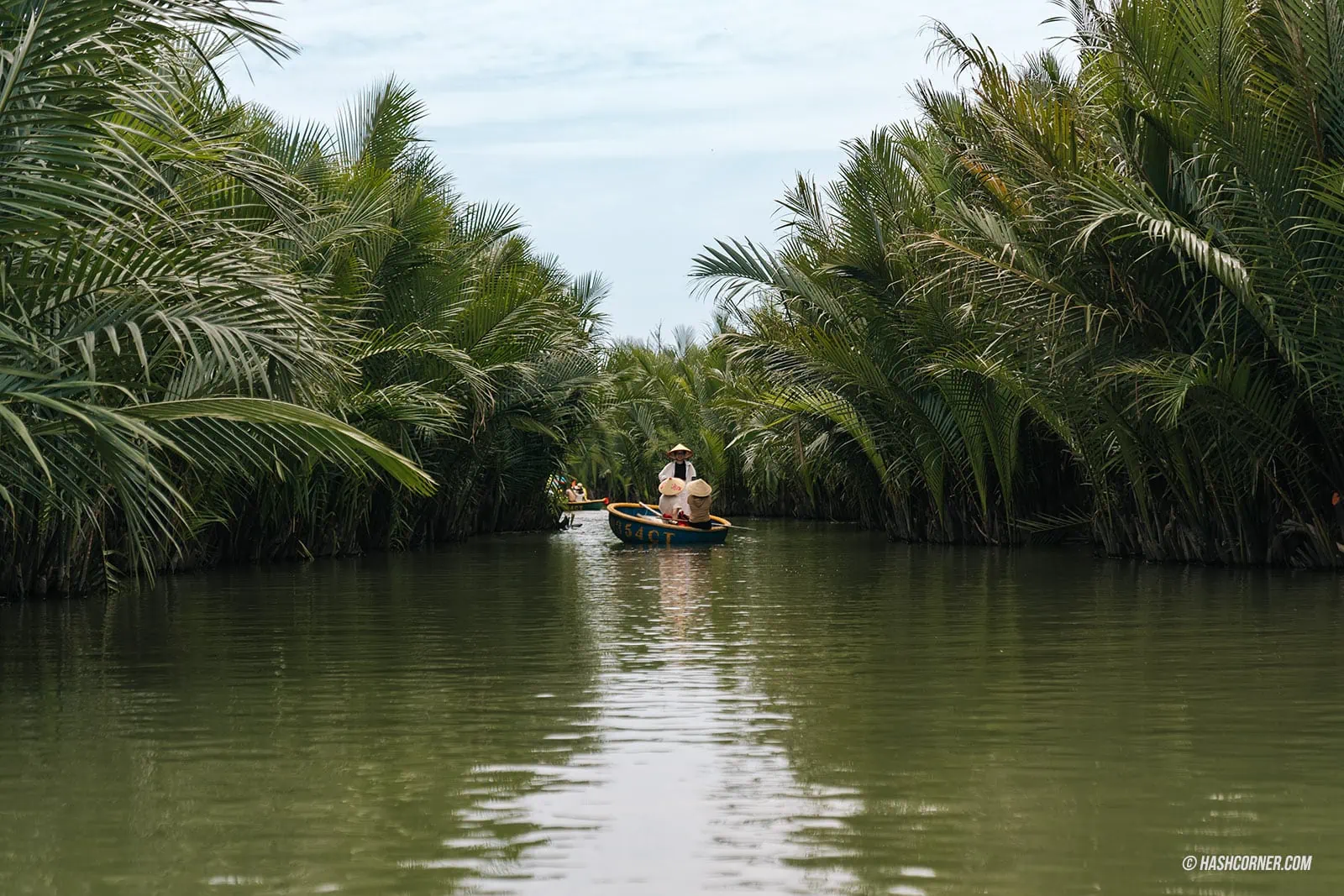
That sums up my 2-day, 1-night Hoi An adventure. I can say with certainty that if you have a soft spot for ancient towns with a unique, charming atmosphere, you can’t afford to miss Hoi An. The old town’s vibrant yellow hues, relaxed vibe, and the simplicity of the local people’s lives make every corner I explored feel like more than just a tourist attraction. It felt as though I was immersing myself in the culture, savoring scrumptious Vietnamese dishes, and relishing unforgettable coconut coffee. To truly understand how amazing it is, I invite everyone to come and see it for themselves!
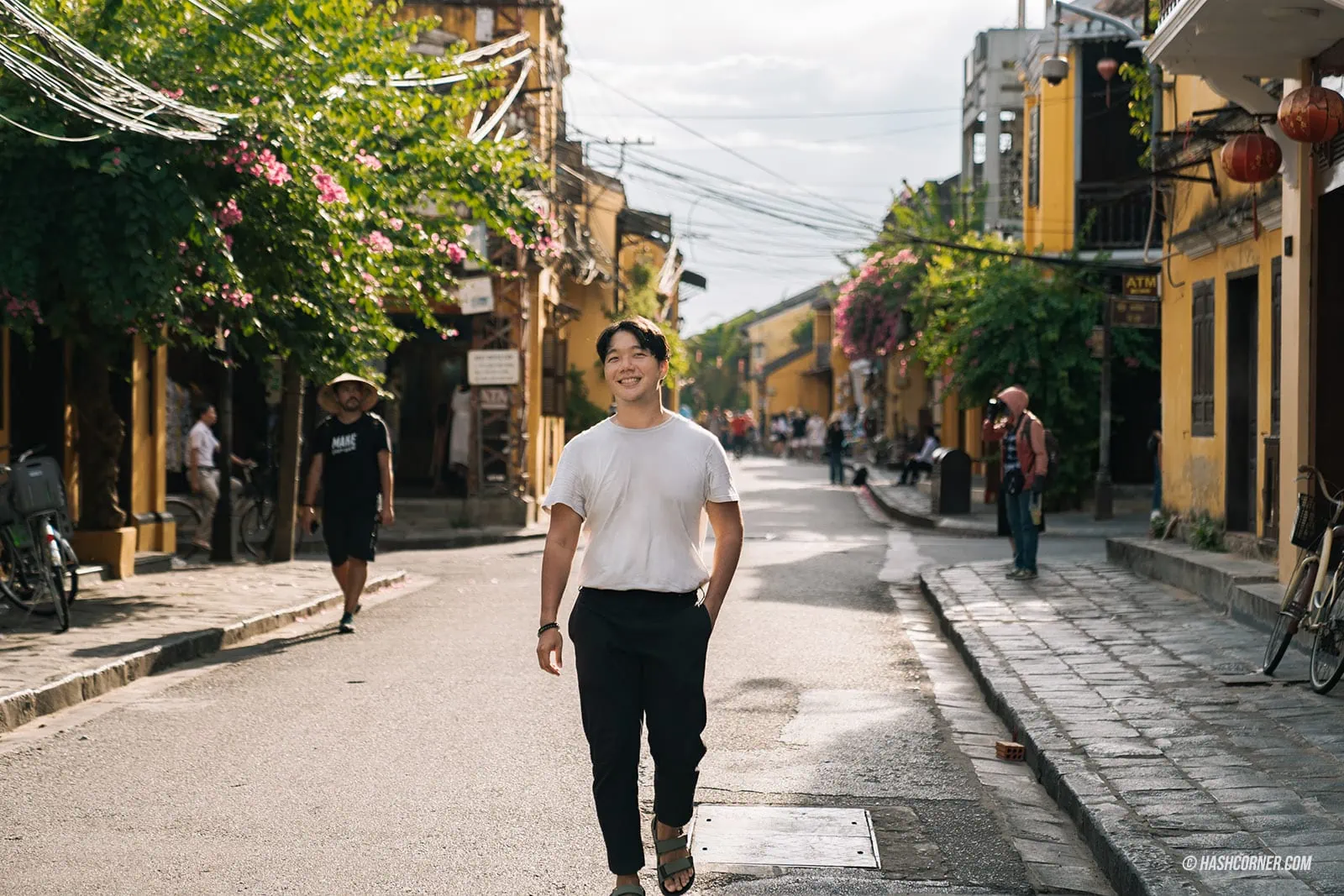
รีวิวเที่ยวเวียดนาม ยังมีอีกเยอะเลยน้า
เวียดนาม ถือเป็นประเทศหนึ่งที่ก๊อตไปเที่ยวบ่อยมาก และไปแทบจะทุกปีเลยแหละ มีตั้งแต่สมัยเที่ยวคนเดียวตอนแรกเริ่มเป็นบล็อกเกอร์ จนถึงตอนนี้ที่เริ่มแก่แล้ว ฮื้ออ เอาล่ะ สำหรับใครที่กำลังหารีวิวเที่ยวเวียดนาม ลองดูต่อกับลิสเมืองอื่นๆ ด้านล่างนี้ได้เล้ย
1. ฮานอย (Hanoi)
2. ฮานอย คาเฟ่ (Cafe Hopping Hanoi)
3. ดาลัด (Da Lat)
4. บานาฮิลล์ (Bana Hills)
5. ฮอยอัน (Hai An)
6. เว้ (Hue)
7. ซาปา (Sapa) ปี 2017
8. เว้ ฮอยดัน ดานัง (Hue, Hoi An, Da Nang) ปี 2017
ส่วนลดจองโรงแรมจาก Agoda, Expedia, Booking และบัตรสวนสนุก ตั๋วรถไฟ กิจกรรมท่องเที่ยวจาก Klook และ KKday ปี 2023
⚡️ สำหรับใครที่กำลังจะจองที่พักและหาส่วนลดจองโรงแรมอยู่ ลองดูตามลิงค์ด้านล่างได้เลย มีทั้ง Agoda, Expedia, Booking รวมถึง Hotels.com ด้วย ประหยัดไปได้อีกเกือบ 10-20% ใช้ได้กับโรงแรมทั่วโลก
หลายคนอาจจะไม่รู้ว่าเว็บไซต์จองโรงแรมพวกนี้ มีส่วนลดท็อปอัพจากบัตรเครดิตเพิ่มเกือบทุกธนาคาร ไม่ว่าจะเป็นบัตรเครดิต Citibank, KBANK, SCB, Krungsri, KTC, Bangkok Bank, UOB และ TMB หรือแม้แต่ส่วนลดจากค่ายมือถืออย่าง AIS, DTAC หรือ True ซึ่งส่วนลดพวกนี้จะเปลี่ยนตลอดทุกเดือน และเก๊าก็อัพเดทให้ตลอดเวลาเน้อ 🧡
